News Digest
December 30, 2022
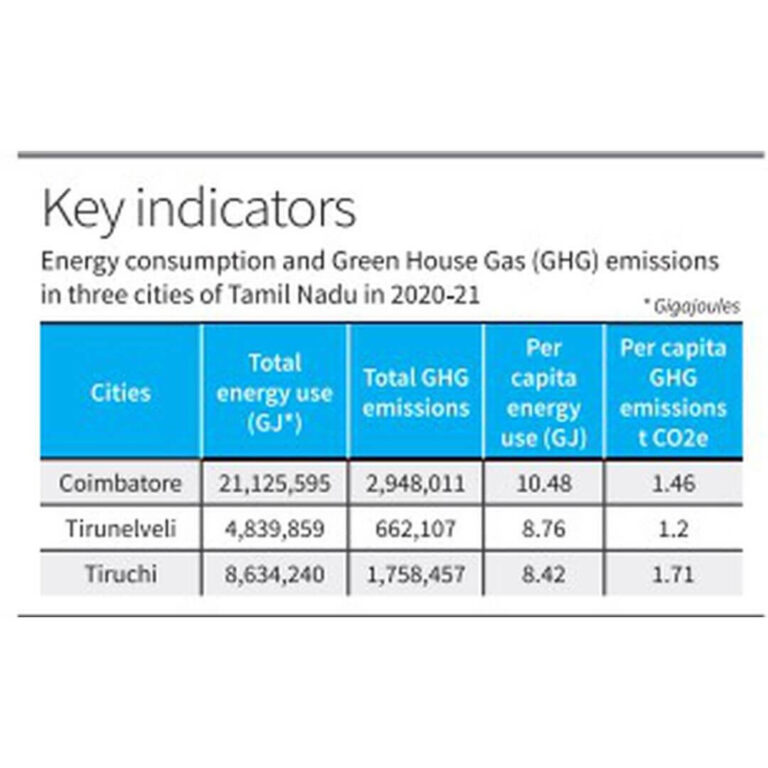
Tamil Nadu comes up with Greenhouse Gas Inventory compendium for three cities
The Tamil Nadu government has come up with a greenhouse gas inventory compendium to prepare inclusive climate-resilient actions plans for the cities of Coimbatore, Tiruchi and Tirunelveli. With industries, residential areas and transport being the major contributors of greenhouse gas in these cities, the effort of the municipal administrations is central to tackle Climate Change. Cities can lead Climate Change efforts by framing strategies and programmes, integrating the action into the ongoing urban development and forging partnerships for effective responses. To support the State government of Tamil Nadu, the CapaCITIES project, funded by the Swiss Agency for Development and Cooperation (SDC) is working to integrate climate action plans into urban planning processes. “The Tamil Nadu government has been at the forefront of creating environmental benchmarks across industries. The release of the compendium of greenhouse gas inventories in these three cities will inspire other cities in Tamil Nadu as well as other States,” said Supriya Sahu, Additional Chief Secretary, Environment, Climate Change and Forests Department.

Holiday rush keeps Amazon employees overworked, exhausted
As holiday shopping reaches a climax this week, Amazon’s two-day Prime shipping remains one of the few options left for desperate shoppers still hoping to order online. It’s a notoriously exhausting and demanding time for workers at the company, where the period between Black Friday and Christmas day is known as “peak season”. Amazon’s facilities have developed a reputation for punishing working conditions. The injury rates in Amazon’s fulfilment and delivery centres are about 50 per cent higher than the warehousing and fulfilment industry average, and more than double that of Walmart’s, according to 2020 and 2021 injury data reported to the US Occupational Health and Safety Administration and analysed by the Strategic Organizing Center. Jennifer Crane, an employee, says she wishes more of Amazon’s customers knew about the humans working behind the scenes when they click Buy Now. “I want the public to know that there is a cost to their two-day Prime shipping,” she says. “They don’t realise what it’s doing to us as workers, what kind of pressure it puts on us.”

Scientists freeze Great Barrier Reef coral in first-ever trial
Scientists are scrambling to protect coral reefs as rising ocean temperatures destabilise delicate ecosystems. The Great Barrier Reef has suffered four bleaching events in the last seven years including the first ever bleach during a La Nina phenomenon, which typically brings cooler temperatures. Cryogenically frozen coral can be stored and later reintroduced to the wild but the current process requires sophisticated equipment including lasers. Scientists say a new lightweight “cryomesh” can be manufactured cheaply and better preserves coral. “If we can secure the biodiversity of coral…then we’ll have tools for the future to really help restore the reefs and this technology for coral reefs in the future is a real game changer,” Mary Hagedorn, Senior Research Scientist at Smithsonian National Zoo and Conservation Biology Institute told Reuters from the AIMS lab. The trials involved scientists from AIMS, the Smithsonian National Zoo and Conservation Biology Institute, the Great Barrier Reef Foundation and the Taronga Conservation Society Australia as part of the Reef Restoration and Adaptation Program. “This new technology that we’ve got will allow us to do that at a scale that can actually help to support some of the aquaculture and restoration interventions,” said Jonathan Daly of the Taronga Conservation Society Australia.
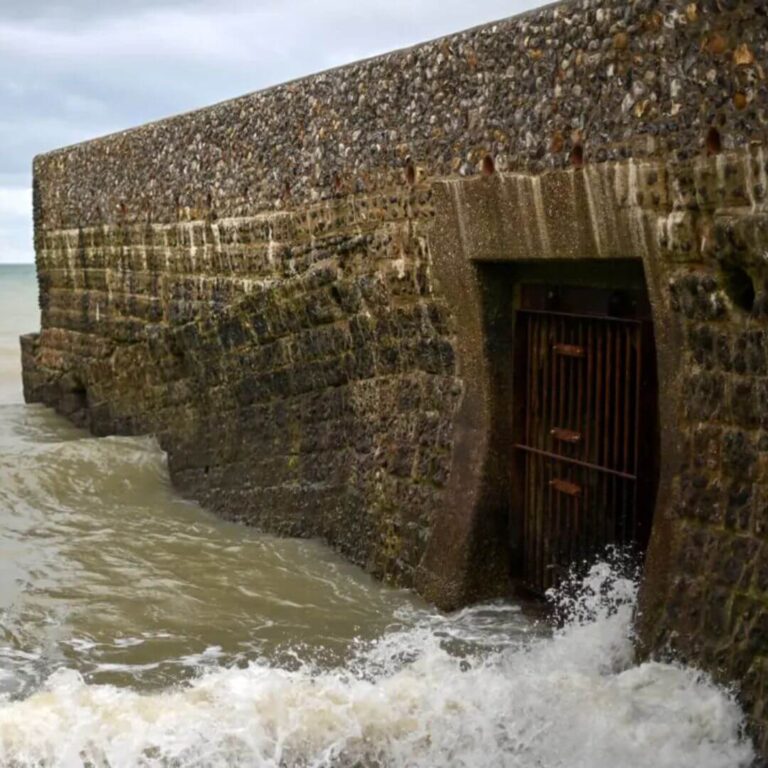
Target for cleaning up waterways in England moved back by 36 years
Targets to clean up the majority of England’s rivers, lakes and coastal waters suffering from a cocktail of agricultural and sewage pollution have been pushed back from 2027 to 2063. Not one English waterway, including rivers, lakes, estuaries and coastal waters is in good ecological and chemical health at present, with pollution from water treatment plants and agriculture the key sources of the damage. The Environment Agency said 5.3 billion pounds were being invested for the next five years to stop the further deterioration of waterways. But the summary documents within the plan reveal the target for all 3,651 water bodies to achieve good chemical and ecological status – a state in which they are as close to their natural state as possible – was now decades away in 2063. Until Brexit the UK government was signed up to the water framework directive, which required countries to make sure all their waters achieved “good” chemical and ecological status by 2027 at the latest. By 2027, only 4 per cent of waters are currently on track to be in good overall condition.

Why China shouldn’t let COVID undo 40 years of urbanisation
Economist Lu Ming writes about the explosive spread of the COVID-19 and its impact on high-density urbanism. At the beginning of the pandemic, large, dense cities were viewed as especially susceptible to the spread of infectious diseases. Now, between the economic and psychological fallout of “zero-COVID”, sky-high real estate prices, and growing concern over “urban diseases” like traffic, many Chinese are questioning whether the past four decades of rapid urbanisation might have gone too far. Similar criticisms were levelled at large cities in the West during the initial wave of COVID-19 outbreaks there. But are the downsides of population agglomeration really enough to offset its well-documented role in boosting labour productivity, innovation, and consumer service industries? An analysis of Chinese cities after the outbreak of COVID-19 in Wuhan in 2020 found that stronger a city’s economic ties were with Wuhan, the higher the rate of infection in that city. After controlling for the possible spread of the virus between cities due to economic links, cities with a high population density had lower infection rates than their less dense peers.

13 films you can watch on Climate Change
Here’s a list of 13 films focused on the planet’s future. From all-time classics and silly action flicks to serious documentaries and science fiction, you might be surprised by the number of films in which Climate Change has a major part. Read the gist of the 13 movies chosen. David Attenborough: A Life on Our Planet (2020); Waterworld (1995); Snowpiercer (2013); Chasing Coral (2017); Interstellar (2014); FernGully: The Last Rainforest (1992); Soylent Green (1973); Princess Mononoke (1997); Wall-E (2008); The Nice Guys (2016); The Day After Tomorrow (2004); Alcarràs (2022); The Mist (2007). Among these, Alcarràs is the latest one and it won this year’s the Golden Bear at the Berlin International Film Festival. The film shows a family of peach growers who are shaken when the landowner decides to cut the trees, install solar panels and switch to farming clean power. Shot in Catalan and featuring non-professional actors from the Spanish fruit-growing region of Lleida, the film is an intimate portrait of a rural way of life that’s disappearing, and of the disruptive side of the clean-energy transition.
December 16, 2022

Win for Worli fisherfolk: BMC increases navigation span
It took six years of struggle for the Worli fisherfolk to make the Brihanmumbai Municipal Corporation (BMC) agree to their demand of increasing the width of a proposed navigation span — as part of its ambitious Mumbai Coastal Road Project (MCRP) — to 120 metres. The 10.5-km-long coastal road is being built on reclaimed land with an aim to decongest traffic and connect Nariman Point with Bandra-Worli Sea Link (BWSL) at Worli. At the Worli end, the BMC is constructing a traffic interchange to connect MCRP with BWSL. The interchange is going to be an elevated structure, which would come up on pillars constructed in the shallow waters of the sea. While engineers of the MCRP had said that the gap between each pillar would be around 60 metres, members of the fisherfolk community from the Cleveland Bunder in Worli had claimed that it will be difficult to safely navigate their boats through such a short span, as the Bunder has shallow water with rocks and their boats could get damaged by tidal waves.
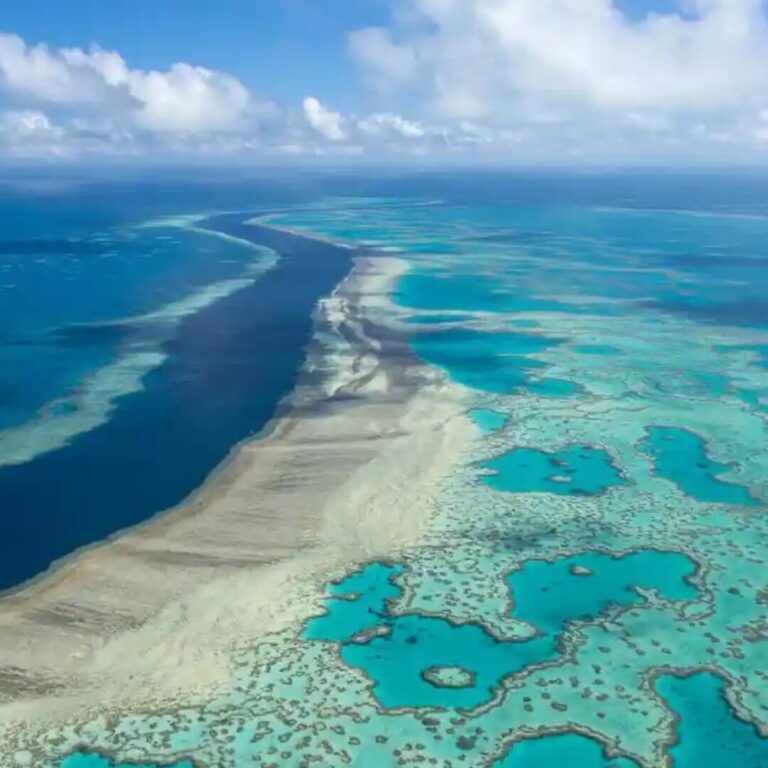
Indigenous women rangers bag prize for protecting Great Barrier Reef
The Queensland Indigenous Women Rangers Network (QIWRN) has been awarded a £1m ($1.8m) Earthshot prize for its work on protecting the Great Barrier Reef. The network was awarded the Revive Our Oceans category of the prizes. The QIWRN, established in 2018, has trained more than 60 women, many of whom have subsequently found work as rangers or in conservation in Queensland or elsewhere. The Earthshot prize describes the programme as “vital”. The initiative is described by the Earthshot prize as “an inspiring women-led programme” that combines 60,000 years of First Nations knowledge with digital technologies to protect land and sea. “The data they have collected has given us critical insight into one of the most important ecosystems on the planet. As custodians of the land, the rangers have also protected sites of great cultural and spiritual significance. With greater support, Indigenous women rangers could span the planet, helping to repair ecosystems from Hawaii to Nepal and Tanzania,” it says. Only an estimated 20 per cent of Indigenous rangers in Queensland are women.
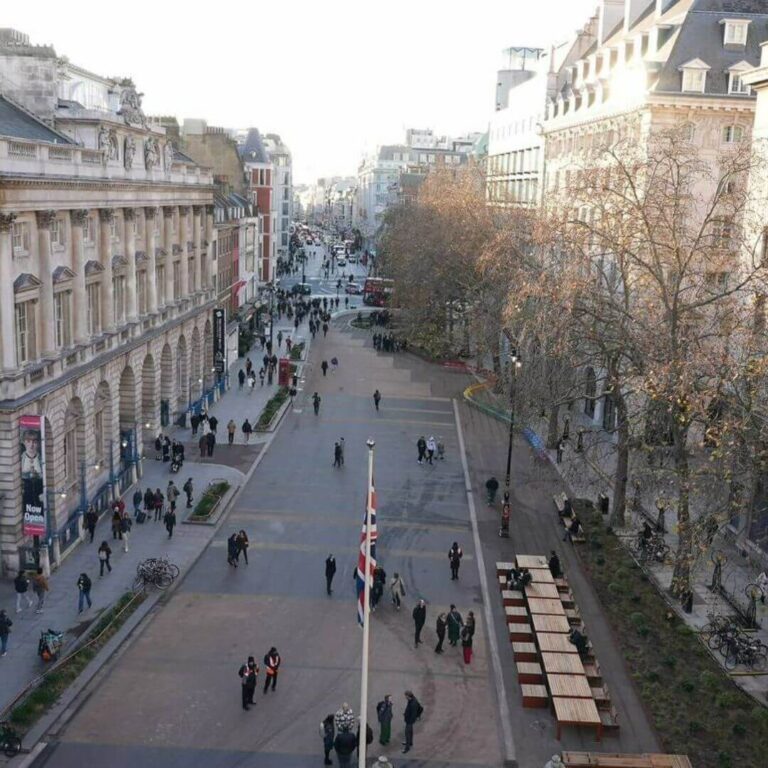
Central London makes space for pedestrian zone
A brand-new outdoor spot opened in Central London, transforming a polluted and gridlocked stretch of the Strand into a pedestrianised hangout. The area in front of Somerset House, the beautiful St Clement Danes church and King’s College London is now traffic-free. The 170-metre-long new space is designed to encourage people to linger, and is laid out with benches, landscaping and trees that will blossom come spring. Once, Aldwych – the elegantly curving street that acts as the gateway to the West End – was notoriously dangerous to cross. Now, it has two lanes of traffic instead of the four it previously had, making room for wider pavements and new crossings, designed to make it safer for pedestrians and cyclists. Westminster City Council’s redevelopment project has been three years in the making and has cost a whopping £22 million. It’s been put together in consultation with partner King’s College London, which will use the new space for various lecturer-led projects: the Geography Department is already monitoring air, noise and pollution levels, and more plans are in the pipeline for next year.
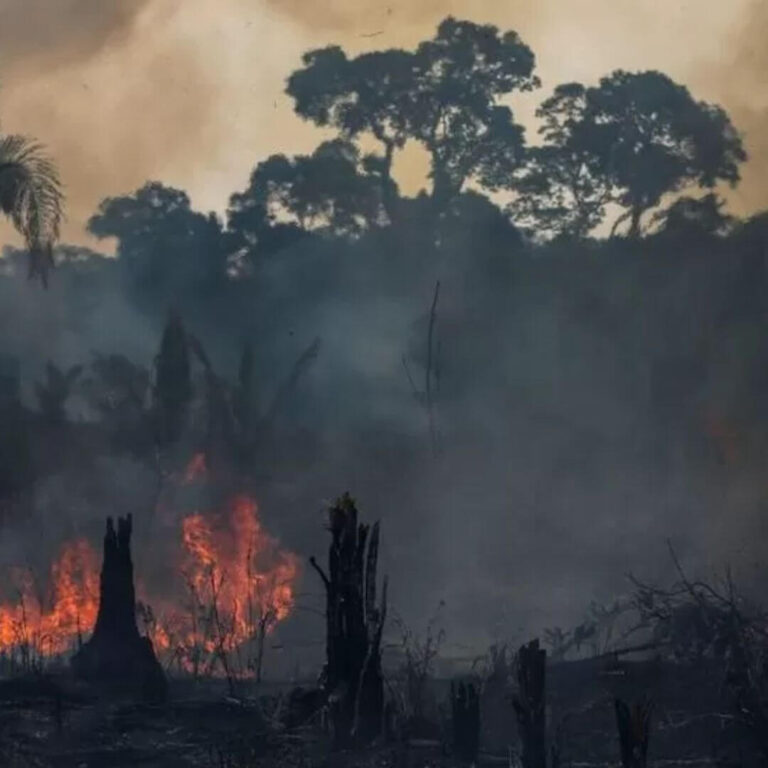
EU bans the import of products linked to deforestation
Companies selling household products such as coffee, chocolate, and some furniture to the European Union (EU) will have to prove their goods are not linked to deforestation, or face fines of up to four per cent of their annual EU turnover. Companies will have to specifically prove their goods were not produced on land that was deforested after December 2020. The law change would have little or no impact on prices to consumers, a European Commission spokesperson said. An impact assessment from the European Commission estimated that the new law would protect at least 71,920 hectares of forest annually — around 100,000 football pitches. It would also reduce annual global carbon emissions by 31.9 million metric tonnes per year, the commission said — roughly the same as the carbon emissions of Denmark in 2021, according to World Bank data. The European Council – where member states agree on policy – and the European Parliament are yet to ratify the agreement. Environmental group Greenpeace called it a breakthrough, but some countries said the rules would hurt international trade.
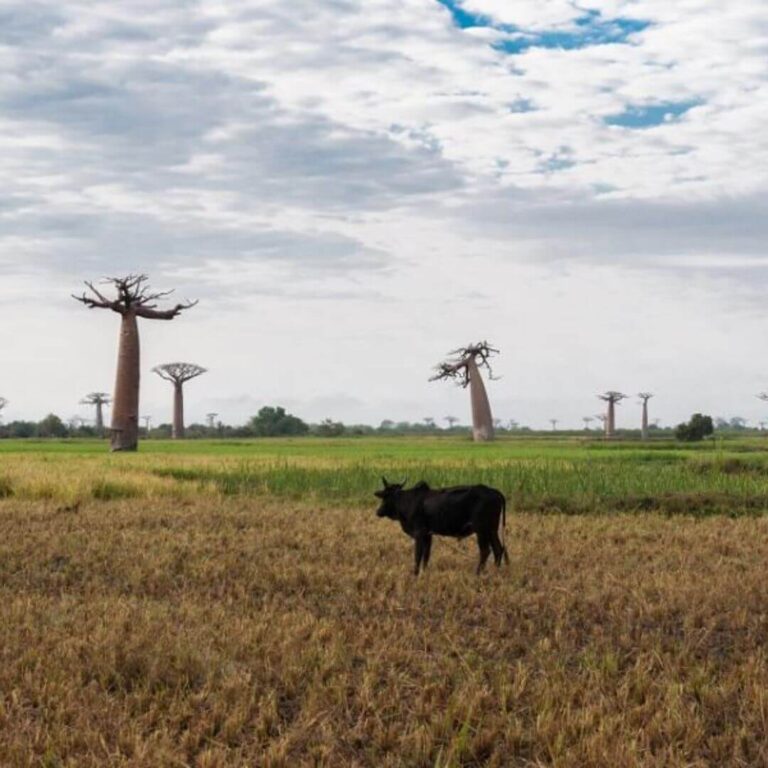
Rice may be hastening biodiversity loss in Madagascar
The cultivation of rice in Madagascar, especially using shifting agriculture, is causing deforestation and subsequent biodiversity loss, according to research papers. Rice, the main food crop of the island, could be hastening the loss of biodiversity in the fourth-largest island of the world, according to two exhaustive studies published in the Science journal December 2, 2022. The papers also urged that collection and analysis of data on Madagascar’s remarkable biota must continue and accelerate “if we are to safeguard this unique and highly threatened subset of Earth’s biodiversity”. Madagascar, classified as a ‘Least Developed Country’ by the United Nations, has been in the throes of upheaval in the past few years. Rice is integral to Malagasy cuisine. Drought has been affecting vulnerable regions over the last four decades. More than one million people needed food emergency assistance in the island country in 2020. Climate Change has wrought havoc on the island, with the latest being Tropical Storm Ana earlier this year. The paper said agriculture primarily led to deforestation on the island, a biodiversity hotspot.

Meiteis forced to dismantle lake Loktak homestays in Manipur
The Manipur government has plans for multimillion-dollar projects on the 287-square-kilometre Loktak lake, which is a biodiversity hotspot and home to the Meitei community. To the people who have lived on and off Loktak, the lake is more than a source of their livelihoods. Listed as a “wetland of international importance” under the 1971 Ramsar Convention, a global treaty on the conservation and sustainable use of wetlands, Loktak is home to hundreds of varieties of fish, molluscs, aquatic plants, migratory birds and the rare Sangai deer. Since 2013, it has become a key income stream for the Meitei, many of whom built floating homes on the thick vegetation characteristic of Loktak, which they opened up to visitors for a unique experience. Homestay owners have been forced to dismantle their homestays or face eviction. The state has not offered any compensation, resettlement or rehabilitation to the homestay owners. Neither has the government formally notified the lake under the wetland rules, which would have required it to acknowledge the existing livelihood rights of the people.
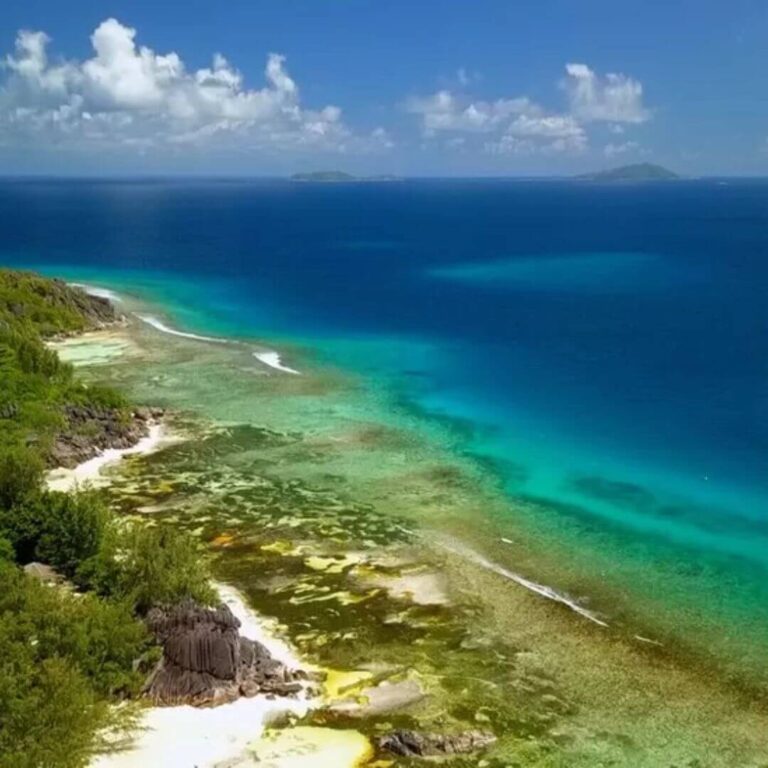
Protecting Seychelles’ seagrass can help combat Climate Change
The seagrass in Seychelles island is declining, creating the risk of this marine plant going extinct soon, according to researchers in the US. A study published in the Royal Society’s flagship biological research journal says seagrasses capture carbon at a rate 35 times quicker than rainforests. If undisturbed, they can hold carbon for thousands of years, far longer than terrestrial plants. They play the role of a natural carbon sink. At last month’s COP27 climate conference in Egypt, activists and international bodies called for a greater drive to protect and use these nature-based solutions to combat Climate Change. The Seychelles government has committed to protect half of its seagrasses and mangroves by 2023, and 100 per cent by 2030. A project by the independent trust SeyCCAT has mapped and analysed the seagrass. This analysis means Seychelles could be the first nation to report its blue carbon stocks to the UN as part of its greenhouse gas emission report. Having mapped the ecosystems, the government can define its policy strategy, ongoing management, and legal protection for them.
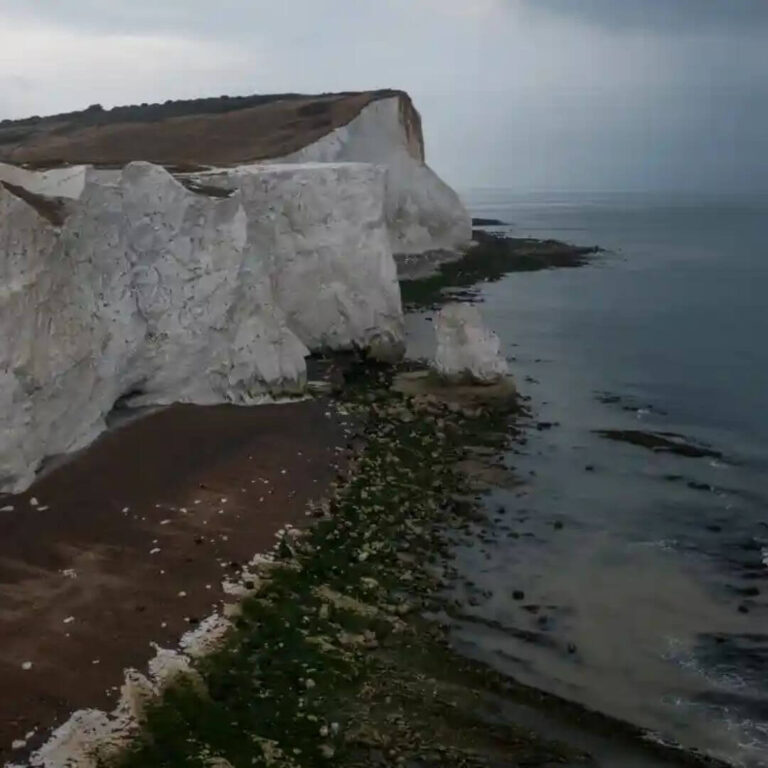
River campaigners upset as UK set to weaken water pollution goals
The UK government is set to weaken water pollution goals and despite demands from water campaigners, there will be no overall target for river health. River campaigners have said this is proof the government has not dropped its “attack on nature”. The government has caused widespread anger with its failure to tackle sewage and agricultural pollution, after cutbacks to farm inspection and an approach to polluting water companies described by critics as soft. It was also originally proposed that the agriculture sector would have to reduce pollution into waterways by 40 per cent by 2037. This goal, according to leaked plans seen by the Guardian, has been pushed back to 2040. Environment secretary Thérèse Coffey has been scrambling to release the legally binding targets mandated by the 2021 Environment Act, which gave the Department for Environment, Food and Rural Affairs (Defra) until October 2022 to set ambitious goals on air and water pollution as well as biodiversity. Coffey is preparing to announce the targets, but the ambition for river pollution is set to be weakened.
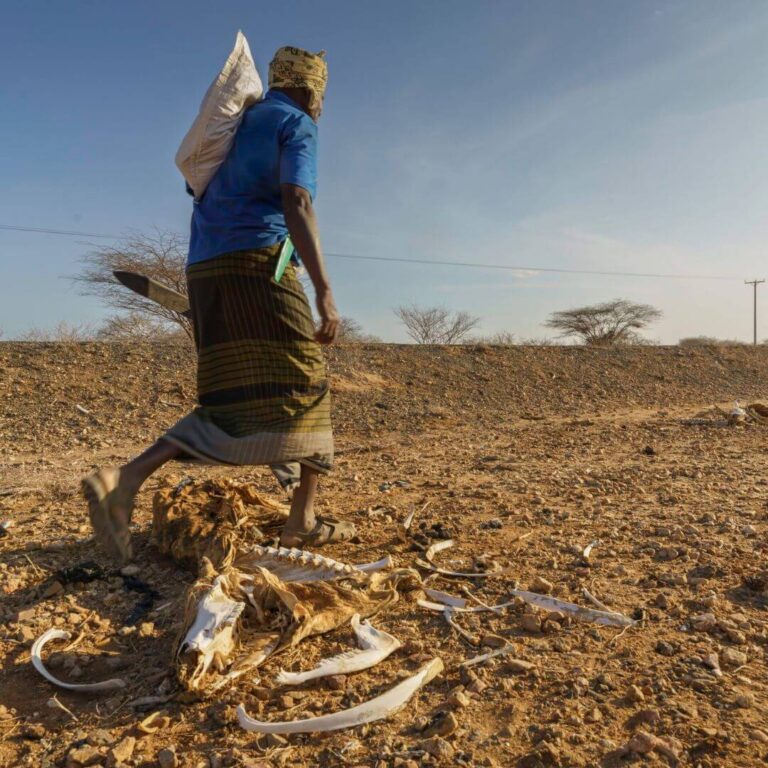
Drought-hit Horn of Africa faces food crisis
Nearly 26 million people in the Horn of Africa are facing extreme hunger, with some areas already reaching catastrophic famine levels, according to the United Nations. Food crisis threatens a record number of people around the world, with nearly 345 million at acute levels of hunger and nearly 50 million people on the brink of famine. “We are on the way to a raging food catastrophe,” UN Secretary General António Guterres tweeted recently. This year’s droughts and severe weather decimated crops across the world — in parts of the United States, Europe, China, Australia and the Indian subcontinent. The current emergency foreshadows what researchers call “multiple breadbasket” failures, which will likely occur more often and with greater intensity as Earth’s atmosphere warms. Battered by more climate-induced weather shocks or chronic conditions like drought, the world’s farmers are projected to produce less food in the coming decades. “There are other drivers of food insecurity,” said Francesco Tubiello, a senior statistician at the UN’s Food and Agriculture Organization. “But those related to Climate Change will increase and become more and more important.”
December 2, 2022

COP27 decides to set up fund for climate disasters
All nations attending the annual climate conference in Egypt’s Sharm el-Sheikh in November decided “to establish new funding arrangements for assisting developing countries that are particularly vulnerable to the adverse effects of Climate Change in responding to loss and damage”. There had been a longstanding demand by vulnerable countries to establish a fund to pay for climate disasters that have been brought on by global warming. “I welcome the decision to establish a loss and damage fund and to operationalise it in the coming period,” UN secretary general Antonio Guterres said in a statement at the conclusion of COP27. “Clearly, this will not be enough, but it is a much-needed political signal to rebuild broken trust.” Although many questions remained unanswered on the mechanism of the loss and damage fund, climate experts and activists welcomed the move. Despite the breakthrough on loss and damage, there was virtually no progress on other crucial aspects of action on Climate Change, particularly on climate finance for mitigation and adaptation and faster phase down of all fossil fuels.

Fossil fuel fight at COP27 frustrates delegates
The fight on fossil fuels dominated the last-hour political wrangling at the COP27 on November 26. For hours, negotiators engaged in heated, but futile, debate on whether to call for a phaseout of coal, oil, and gas. An alliance of more than 80 developed and developing countries backed a call to wind down fossil fuels. Egypt kept disagreements behind closed doors and did not include the proposal as an option in the cover text – to the frustration of many. The final decision text barely changed from the penultimate draft. Laurence Tubiana, CEO of the European Climate Foundation, accused the Egyptian presidency of producing a text “that clearly protects oil and gas petrostates and the fossil fuel industries”. Tina Stege, climate envoy for the low-lying Marshall Islands, said the COP27 decision must reflect that we hold fast to our commitment to 1.5C. “That should reflect scientists’ findings that global emissions must peak before 2025 to keep 1.5C within reach and put the world on a path to phasing out all fossil fuels,” she said.

India releases framework of sovereign green bonds
The Sovereign Green Bonds (SGrB) framework in India was released on November 9, one and a half months after the announcement of capital mobilisation through SGrB. The framework draws a blueprint for investments in the green sector, including how to ensure transparency in picking green projects. The need for such a framework is highlighted in the fact that India’s climate actions are largely financed from domestic resources and it is now targeting global financial resources as well. SGrB issuances under the framework will help the government tap funds from potential investors for public sector projects to reduce carbon intensity which is a measure of greenhouse gases emitted per unit of electricity produced. The framework outlines how the government will monitor the investments and its plans to use the money. It says that all eligible green expenditures will include public expenditure in the form of investment, subsidies, grants-in-aid or tax foregone, R&D expenditures in public sector projects that help reduce the economy’s carbon intensity. The government has sought an independent second party opinion on the framework to establish its credibility.

Nicobar’s 130 square kilometres forest area to be diverted for megaproject
The Great Nicobar island will lose 130.75 square kilometres of forest area for a development project to build a trans-shipment port, an airport, a power plant and a greenfield township. The Union environment ministry has in principle granted its permission for the diversion of the nearly 130.75 square kilometres forest area. The environmental costs of the project are massive. Estimated to cost Rs 72,000 crore, the project by Andaman and Nicobar Islands Integrated Development Corporation (ANIIDCO) will see the felling of nearly 8.5 lakh trees. About 15 per cent of the 900 square kilometres of the thickly forested area will be affected. The proposed diversion of forest land is the largest in recent times, for it is about a quarter of all the forest land diverted in the past three years across the country as per the information revealed by the government in the Lok Sabha in July. According to the Union ministry of environment, forest and climate change estimates, the proposed deforestation will affect what are primarily evergreen tropical forests with high biological diversity and also high endemism.

Hong Kong tops best public transit systems survey
According to a new study, Hong Kong has the best public transit systems. It ranked first based on factors including distance to public transit, affordability, operating hours, crowding and commute speeds. The study was conducted by the Oliver Wyman Forum, a think tank affiliated with the consulting firm by the same name, and the University of California Berkeley’s Institute of Transportation Studies. Zurich, Stockholm, Singapore, and Helsinki are the five best cities for public transit, with Zurich boosted by its investment in transportation and an advanced master plan. Hong Kong’s mass transit railway was cited for its low fares, limited delays, or service disruptions, and for supporting itself financially. “Cities like Hong Kong help their transit systems when they make “usage of individual mobility less attractive,” said Andreas Nienhaus, an Oliver Wyman partner who focuses on the automotive industry and worked on the report. “They have either large green zones or large car-free zones, or just make it very expensive to drive personal vehicles in the city. And this helps.”

Architect relocates, recycles Japan’s heritage buildings
As many as 8 million old houses in Japan are lying empty as the population is shrinking and younger generations gravitate toward the city. Known in Japan as minka, these locally crafted structures were built during a post-World War II construction boom that lasted into the 1980s. In 1997, architect Takumi Osawa set up an organisation to find, relocate and restore minka before they become uninhabitable. Minka are typically designed like an interlocking puzzle, without nails or screws, which allowed Osawa and a team of craftsmen to take the buildings apart, move them and reassemble them near Tokyo. Osawa’s efforts are motivated by a desire to preserve Japan’s heritage architecture, with its focus on high-quality materials sourced locally, crafted by hand, and built to be functional, adaptable and ultimately recyclable. They also place him within a global movement of progressive architects and urban planners who want to change the way we view the purpose and lifecycle of buildings, from design to demolition. And in the ethos of the minka, they see a historical blueprint for a sustainable future.

European cities dim Christmas lights to cut energy costs
The famous Christmas lights on London’s Oxford Street will use two-thirds less energy this year by reducing operating times to eight hours a day and switching to LED lighting, according to the New West End Company, which organises the display. Cities including Helsinki, Lisbon and London are pulling the plug on some decorative lighting in main streets and squares. Russia’s invasion of Ukraine has upended relations with the continent’s most important energy supplier, and residents are being asked to lower heating. Zurich’s Bahnhofstrasse, the prime shopping street in Switzerland — and among the most expensive in Europe — prides itself on “Lucy,” an annual light display that fills the night sky with “diamonds”. But this year those kaleidoscope eyes will only illuminate the Louis Vuitton and Gucci shops for five hours. In Frankfurt, authorities are not only curtailing holiday lighting — they also will not heat the toilets in the city’s storied Roemer Square Christmas Market. Livigno, one of the most popular ski resorts in the Italian Alps, is set to save €50,000 ($48,000) by not putting up Christmas lights.
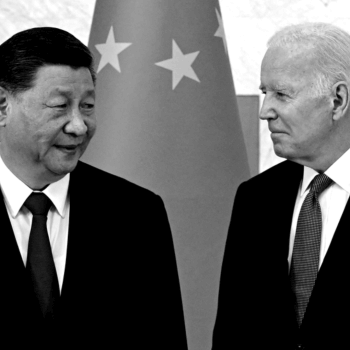
Seven years on, new risks emerge in climate war
Countries have made remarkable progress averting worst-case climate scenarios since 2015: Canada taxes carbon pollution, Europe has its Green Deal, and the United States somehow passed the Inflation Reduction Act. What’s more, elected leaders have run on these policies and won. Thanks to a global turn away from coal power, the world will likely not warm nine degrees Fahrenheit by the end of the century, as had once seemed possible. Since 2015, the risks of climate war have not entirely decreased. Instead, the risks have shifted. As more countries have integrated the energy transition into their economies, a chance now exists that efforts to address Climate Change could encourage conflict in their own right. This shift has not happened intentionally, to be clear. It’s the result of a process that climate advocates, to their credit, were among the first to note: that batteries, renewables, and zero-carbon energy are the next rung on the technological ladder. For years, climate advocates argued that their issue deserved to be at the centre of economic and social policy making.
November 18, 2022
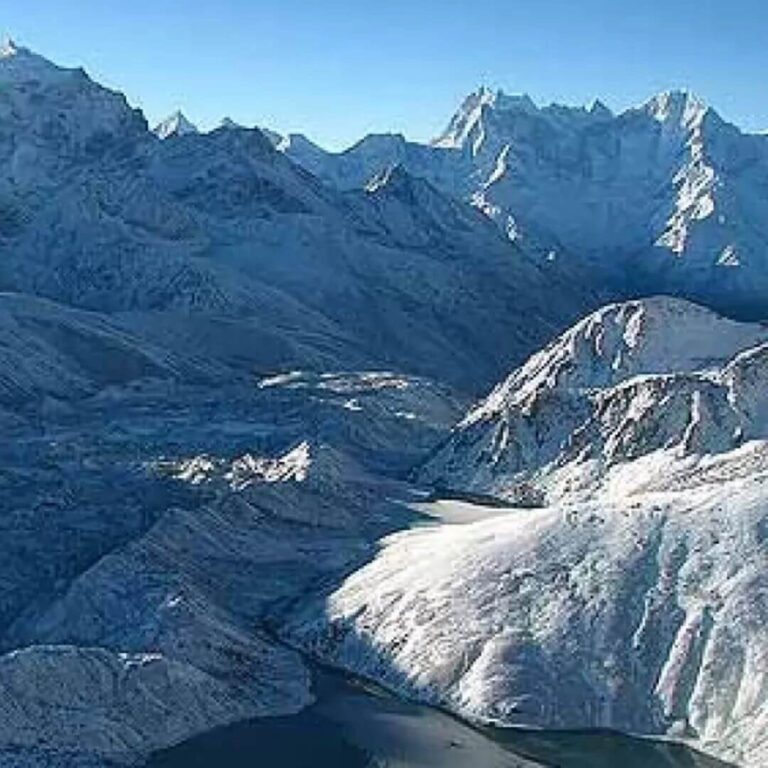
India faces erratic monsoon, glacier retreat threats: Report at COP27
Glacier retreat in the Himalayas threatens water supply, particularly under drought conditions. The Himalayas provide water for 1.3 billion people in the vicinity of 10 major river basins in Asia. Lack of water resources increases agricultural vulnerability to the changing climate, affecting the food security and health of large populations, said a report released at the 27th United Nations Climate Change Conference or Conference of the Parties (COP27) of the UNFCCC in Egypt. The report titled ‘10 New Insights in Climate Science’ is a work of more than two dozen scientists and researchers from around the world. Aditi Mukherji, one of the authors of the report, said glacial retreats not only reduce water availability in the rivers but also put hydropower projects in the Himalayan region under greater risk from events of glacial lake outburst floods. The reduction in water flow due to glacial retreats will impact the Indus region more than Ganga and Brahmaputra because the former has greater dependence on glaciers while the latter two are significantly dependent on monsoon.
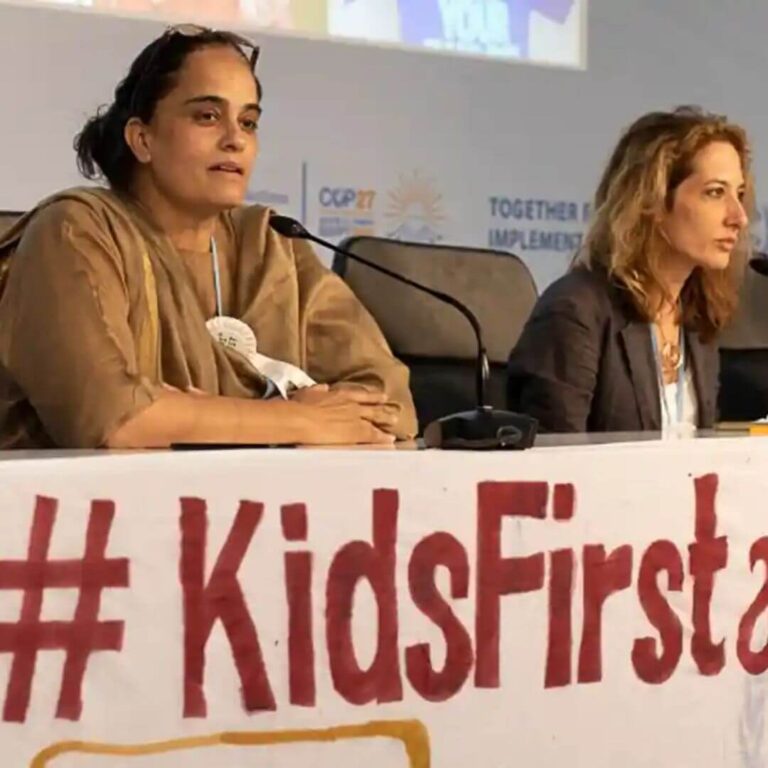
India’s Warrior Moms joins clean air fight at COP27
Indian campaigners have joined global delegation at COP27, representing one billion children affected by climate crisis. Bhavreen Kandhari, the co-founder of Warrior Moms in India, a network of mothers pushing for clean air and climate action, is part of mothers from the Our Kids’ Climate and Parents For Future Global networks at COP27 making an impassioned plea to world leaders to put children’s health, rights and futures at the heart of the climate summit. The mothers launched a short film at COP27, featuring children from 16 countries. Xoli Fuyani is part of Our Kids’ Climate and the South African group Black Girls Rising which works with young black girls from marginalised communities. “The climate clock is no longer ticking, it has exploded,” she says. Children have been heavily affected by climate-related disasters this year. Lais Fleury, from the Alana Institute in Brazil, which promotes children’s rights, said that in almost 30 years of COP summits, the final decisions agreed have never included the rights of children: “So let’s fight to incorporate children’s rights into climate action.”
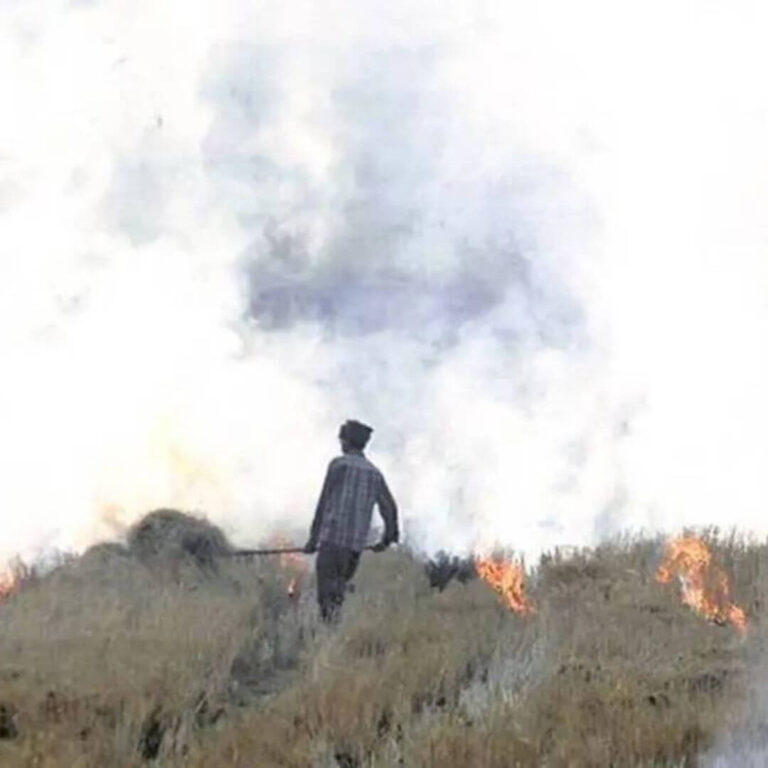
India’s pollution boards lack experts to deal with stubble burning
The state pollution control boards (SPCBs) of Haryana and Punjab, two states which report the highest number of stubble burning, have seen frequent changes at the top. Since January 2008, Haryana and Punjab have appointed 18 and 10 chairpersons respectively for their SPCBs. According to a report titled ‘the State of India’s Pollution Control Boards’ by the Centre for Policy Research (CPR) the constitution of the boards largely comprise officials including retired personnel from government departments, public sector units and other industry representatives. “The statutory requirement of having at least two Board members who have knowledge of and experience in air quality management is not met by most Boards,” said the CPR report. The role of SPCB in taking long-term measures for curbing air pollution remains largely on paper, a former Punjab government official told Financial Express. Haryana and Punjab have reported 86 per cent of the total 50,688 incidents of stubble burning in the current season in northern India. The air quality in the Delhi/NCR region has been in ‘unhealthy’ range for the last many weeks.
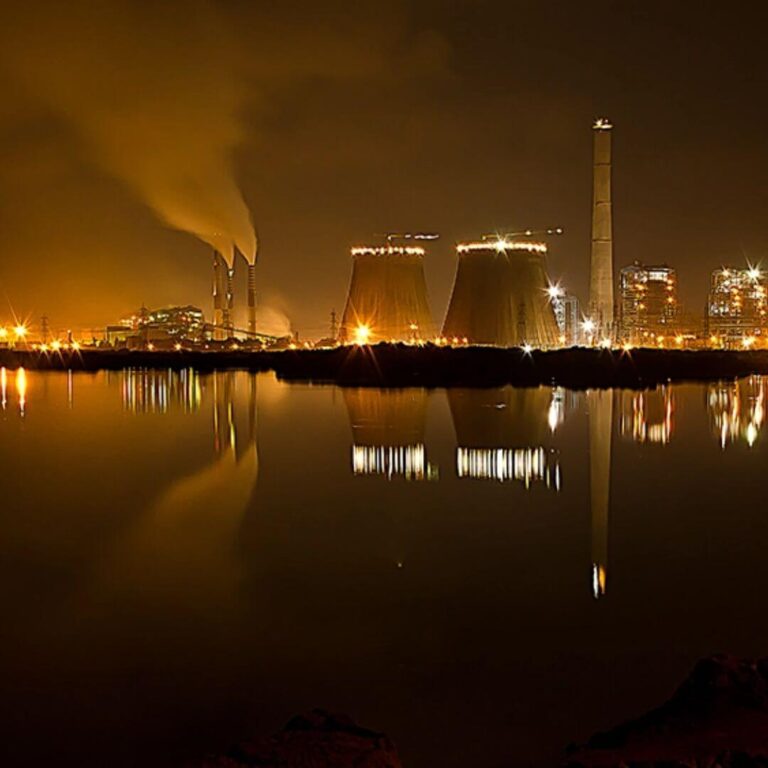
Energy models push India’s efforts for net zero emissions
India, in its updated climate action plan to cut emissions and adapt to climate impacts (Nationally Determined Contributions) in line with the Paris Agreement, announced that it would achieve 50 per cent of its total installed energy capacity through non-fossil fuels and reduce emission intensity of its GDP by 45 per cent by 2030 and becoming net zero by 2070. Analysis based on the modelling tool IDEEA (also called Indian Zero Carbon Energy Pathways), an indigenous open-source energy model, for example, shows that a 100 per cent renewable-energy-based electricity system is technically possible by 2050, based on solar and wind-energy-based systems. Additional energy sources, including hydro energy and biomass, can further complement and reduce the required balancing infrastructure. The model uses 41 years of weather data; India’s installed capacity and technology-based generation profile for FY 2019–2020 were used to validate the model. The findings reinforce that India can “confidently consider a higher share of renewables” in power generation in moving towards a net zero emissions future. The IDEEA model can help gauge different levels of RE transitions.

Paris wants dark stores out of city centre
For months, officials in Paris had raised concerns about the legal ambiguity that allowed distribution centres, or dark stores, to mushroom in densely populated areas. Firms such as Getir, Flink, Frichti, Gorillas and Gopuff, all of whom deliver groceries, leased spaces reserved for businesses that, under Paris urban-planning laws, require the presence of actual shoppers. Around 100 centres in Paris that are at the heart of a legal and political battle over the type of business-space use that should be allowed in the city centre. The government’s decision was intended to pave the way for municipalities to regulate the stores. The Paris authorities began slapping fines on dark stores. Officials said nearly 50 were operating illegally. The French government in September said it intends to classify the stores as warehouses, which gave city officials the ammunition they needed to try to force them out of the heart of the capital. Warehouses are banned from operating out of residential zones. A Paris court decision last month ruled that the sites were “urban logistics spaces” and hence allowed to remain.
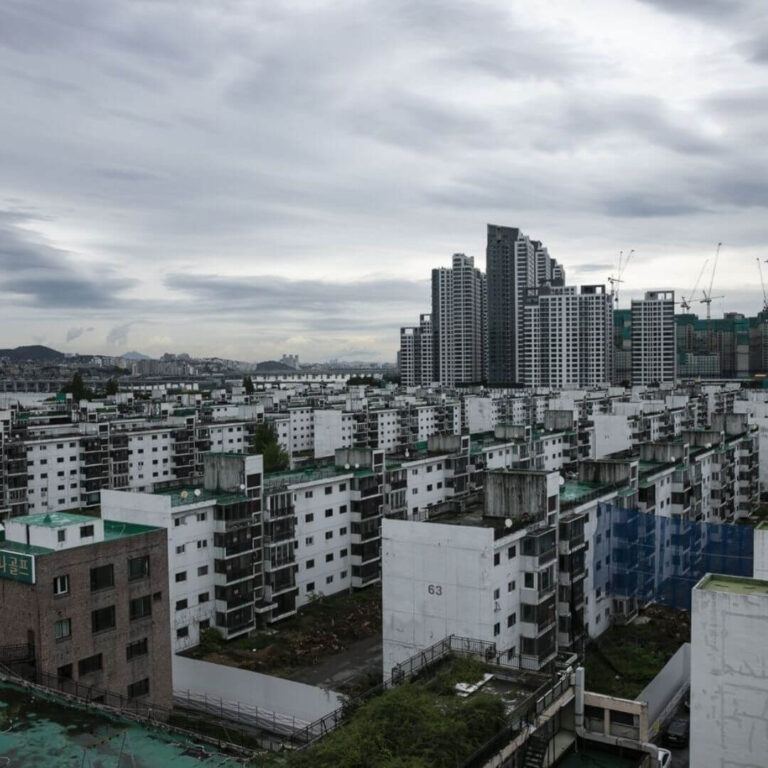
Seoul residents protect depleting greenery
Deforestation is a serious issue in and around Seoul. The greater Seoul area had a forest area of 5,806 square kilometres (2,242 square miles) in 2000, down nearly 500 square kilometres since 1980, according to an urban planning report from Seoul city. The pace of deforestation has slowed since, but Seoul lost close to 150 square kilometres of forest from 2000 to 2020, according to the Korean Culture and Information Service. Some residents are taking tree preservation into their own hands. In 2020, Seoul Green Trust, a non-profit, recovered 22 Metasequoia tree trunks left behind from a redevelopment site in the upscale Gangnam district, where some 50,000 trees once surrounded an old apartment complex. The trunks were then taken to Seoul Forest, one of the city’s few large green spaces, to be reused as bridges and benches. More people in South Korea are reassessing the impact of such rapid development on the environment, particularly after calamities such as acute levels of air pollution, hotter and more frequent heat waves and a recent bout of flooding.
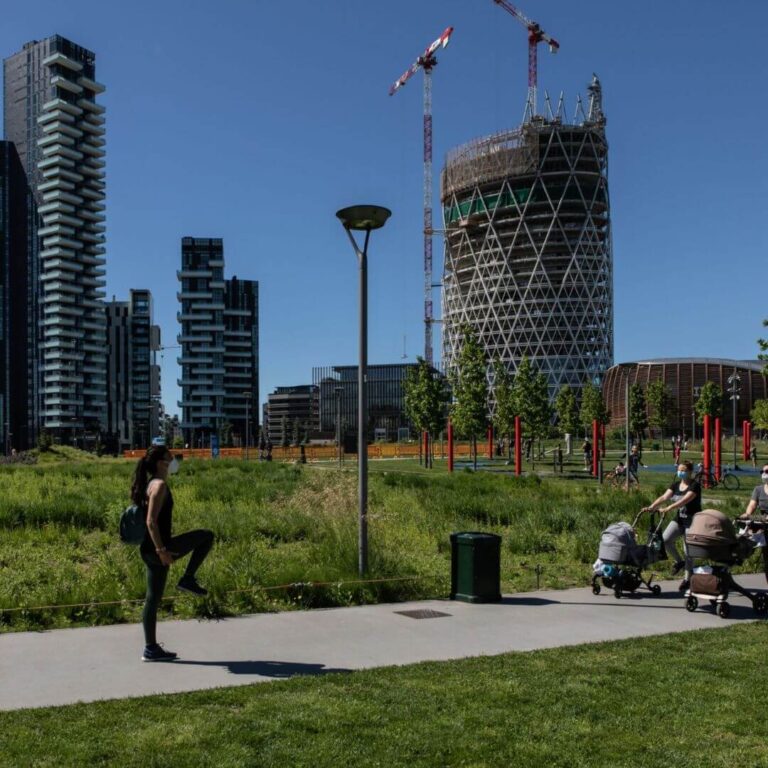
How can cities boost liveability and equity?
A Barcelona-based researcher’s study published in Nature found that a majority of European and US cities saw waves of green infrastructure investment, leading to gentrification within roughly a decade. In nearly half of those cities, “greening, and greening alone,” accounts for the shift. According to the researcher Isabelle Anguelovski, cities are yet to internalise the consequences of a growing divide: In city after city, she argues, new green infrastructure has brought real estate speculation, rising housing costs and community displacement. It’s an increasingly urgent question, as cities need more trees, shade, parks and clean transportation options as the risks of extreme heat multiply. A survey from CDP found that 80 per cent of cities report faced significant climate hazards this year, with 46 per cent citing extreme heat. “It is absolutely part of a growing green orthodoxy of cities,” she said of what she considers a systemic problem. To ward off green gentrification, experts agreed that projects must be paired with policies that focus on equity, discourage speculation, and maintain or add affordable housing.
November 04, 2022

Heat deaths in India rose by 55 per cent in 17 years: Study
Deaths caused due to heat in India increased by 55 per cent between 2000-2004 and 2017-2021, found a study published by medical journal The Lancet. Titled ‘Countdown on health and climate change’, the report analyses 42 indicators across five domains – Climate Change, adaptation, planning and resilience for health, mitigation actions and health co-benefits, economics and finance as well as public and political engagement. “The average maximum temperature of March 2022 had been the highest for all India (33.1 degrees C) and northwest India (30.7 degrees C) and it had been the second highest for central India (35.2 degrees C) as per the data during the period 1901 to 2022. The average maximum temperature of April 2022 was the highest for central India (38.04 degrees C) and for northwest India (36.32 degrees C) and third highest for all India (35.3 degrees C) during the period of 1901 to 2022,” read the report. The study found that biomass accounted for 61 per cent of household energy consumption in 2019 in India, while fossil fuels accounted for 20 per cent.”

Glasgow makes town planning women-centric
Glasgow became “the UK’s first feminist city” after councillors passed a game-changing town planning motion. Submitted by Green councillor Holly Bruce, the motion — the first of its kind in the United Kingdom — states that women should be “central to all aspects of planning, public realm design, policy development and budgets.” Because town planning has historically been led by men, many practical and safety considerations that are particularly relevant to women have been overlooked. For example, improving street lighting to make the city safer for women after dark is just one way in the motion could have a real (and relatively quick) impact. “Safety is one of the aspects of feminist town planning, but it’s also about accessibility to public spaces and public services and affordability,” Bruce told The Scotsman ahead of the motion being debated in Glasgow’s city chamber. “For too long, our streets, parks and buildings have been designed by men. The apparently ‘gender-neutral’ approach that we’ve used for centuries has meant that the male perspective has become the default.”

Lula’s victory gives Brazil chance to build new democratic ecosystem
Marina Silva, an Amazon-born environmentalist who is tipped to become Brazil’s new environment minister, has paid tribute to the murdered British journalist Dom Phillips and said Luiz Inácio Lula da Silva’s incoming government will battle to honour the memory of the rainforest martyrs killed trying to safeguard the Amazon. Speaking to The Guardian after Lula’s historic victory on October 30, Marina Silva said Brazil now had the chance to build “a new democratic ecosystem” in which conservation, sustainability and climate crisis will take centre stage after Jair Bolsonaro’s era of Amazon destruction. Silva was Lula’s environment minister from 2003 until 2008. In his first speech as president-elect, Lula pledged to make the environment one of his government’s top priorities. “We are going to fight for zero deforestation in the Amazon,” he said. Lula, who managed to dramatically reduce deforestation during his two-term government, said Brazil would retake a lead role in the fight against the climate crisis and that he was open to international collaboration to protect its environment.
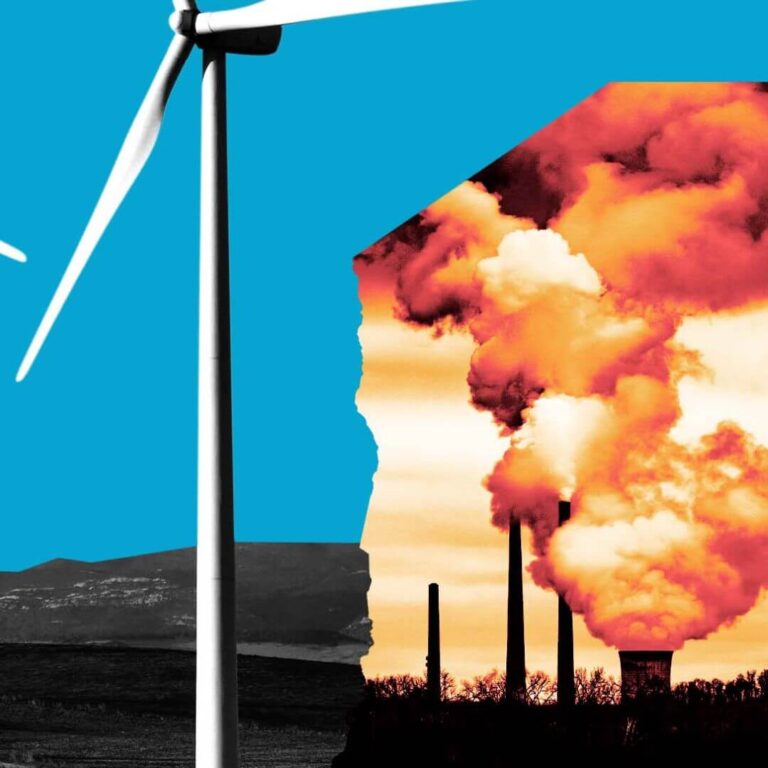
UN climate talks may get off to rocky start
As the United Nations Climate Change Conference (COP27) is all set to start on November 6 at Egypt’s Sharm el-Sheikh, there has been talk of an “agenda fight” as developing countries want “loss and damage” finance added to the formal list of issues that are up for discussion. They could face resistance from developed countries. Such disagreements have become routine in recent years and can either be smoothed over pre-COP or lead to drawn-out, public disagreements, write Dr Jennifer Allan, and Dr Rishikesh Ram Bhandary. In 2013, one arm of the process did not meet at all because most parties did not agree to Russia’s bid for a new agenda item. It will be up to the Egyptian presidency to broker a deal on the loss-and-damage question before COP27, or the opening may signal fractured views rather than momentum for climate action. Agendas can tell us how countries view the priorities of climate governance. All countries must agree to the agenda and the issues it lists. With the attention of the UN climate process largely focused on implementing the Paris Agreement, raising new issues may be a challenge.

How a Berlin neighbourhood succeeded in fight against Google
In 2018, Berlin residents opposed Google’s plans to build a tech campus in the city’s bohemian Kreuzberg neighbourhood. The company that had reimagined the way the world finds information had leased space in an Umspannwerk, an old electrical substation on the edge of the Landwehr Canal, to build the startup campus. Josh O’Kane tells the story of the people’s fight in his book Sideways: The City Google Couldn’t Buy. Google’s opponents in Kreuzberg and across the rest of Berlin were not just challenging an annoying new neighbour – they were contesting the way the world’s richest companies were reshaping cities and democracies. The ragtag band of Berliners saw Google as parasitic – accelerating the arrival of more startups and real-estate investors into Kreuzberg, and pricing out the people who made the neighbourhood special. The nerds brought their fight with the internet giant back to its own turf: Online. The protest intensified into the residents entering the electrical substation and driving away the three workers and the security guard, narrates the book. Eventually, the tech giant gave up the project.
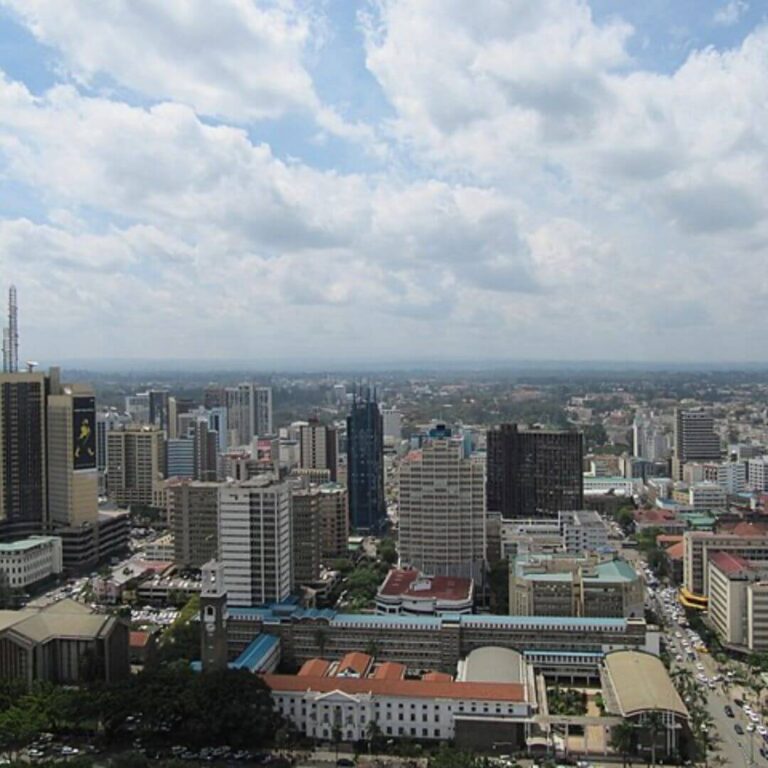
Online tool maps how Climate Change affects daily temperatures
A new online mapping tool called the Climate Shift Index (CSI), developed by the US-based research and communications group Climate Central, illustrates how daily average temperatures in more than 1,000 cities around the world are made more or less likely by global warming. The challenge of making Climate Change local is that weather still fluctuates day to day. Over the past decade, heat waves have increased in length across the Pacific, and states including the Marshall Islands have seen a significant rise in the number of hot days and hot nights. Particularly in the context of the approaching COP27 talks, where “loss and damage” is expected to be a focus, coalitions of island nations could use the map to argue in broad strokes the toll of Climate Change and the need for greater climate finance from rich nations. with the launch of a global version of the index, people in Jakarta, Addis Ababa and Shanghai can also track how much human-induced Climate Change is making their days (and nights) hotter or oddly mild in colder months.

Huge emission gap between top 1% and poorest, finds study
A new finding has highlighted the enormous gaps between what have been termed “the polluting elite”, whose high-carbon lifestyles fuel the climate crisis, and the majority of people, even in developed countries, whose carbon footprints are far smaller. According to Autonomy’s analysis of income and greenhouse gas data from 1998 to 2018, the top 1 per cent of earners in the UK are responsible for the same amount of carbon dioxide emissions in a single year as the bottom 10 per cent over more than two decades, new data has shown. Flying, driving large, expensive cars, owning multiple homes and travelling between them, eating a diet rich in meat and imports, buying more clothes and imported luxury goods are all reasons for the richest generating far higher carbon footprints. Poorer people tend to stay closer to home in small houses and use public transport, while their expenditure on luxuries and items such as “fast fashion” is much smaller. However, the government has preferred to reduce taxes on activities such as flying and driving, despite their environmental impact.
October 21, 2022
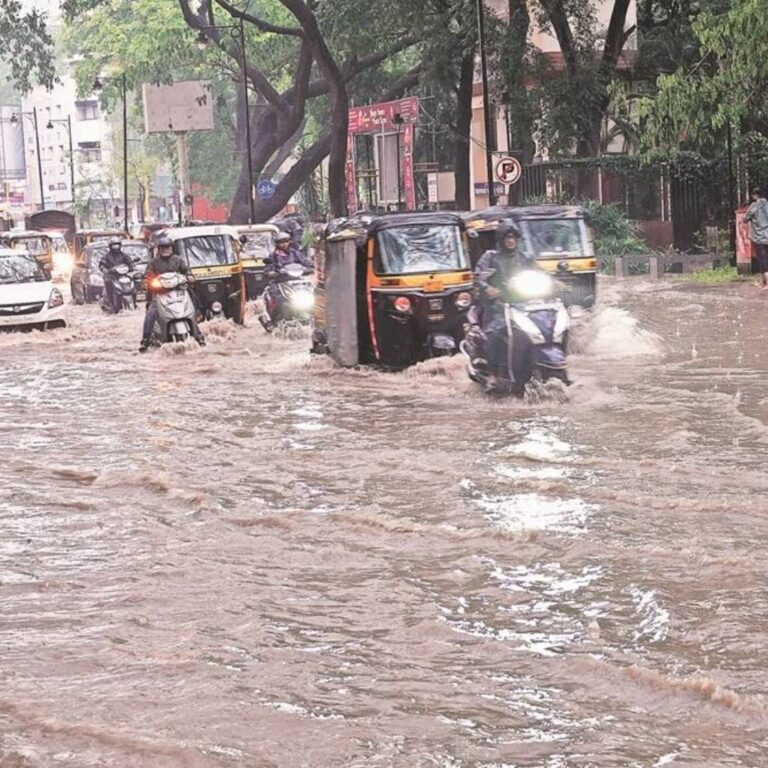
India gets month’s rain in only 14 days in October
The country received 82.5 mm of rainfall from October 1 to 14, of which 58.5 mm of rainfall took place during October 6 to 12, the India Meteorological Department (IMD) said. October is the first post-monsoon month during which the southwest monsoon normally withdraws from the entire northwest and most parts of central India by the middle of the month. However, rainfall trends during recent years, including 2022, point towards a ‘delayed’ monsoon withdrawal because of which rainfall activity continues over north and central regions until the third week of October. The latest long rainfall spell — between October 7 and 11 — was associated with the cyclonic circulation in lower atmospheric levels emerging over north Madhya Maharashtra on October 7 and its subsequent movement over south Gujarat, northeast Rajasthan, south Haryana and Punjab. This system attracted moist winds from the Bay of Bengal which interacted with the passing western disturbances, resulting in one of the wettest October spells over Rajasthan, Delhi, Haryana, Uttar Pradesh and Uttarakhand. Since 1901, only 25 per cent of October months have reported an all-India rainfall of over 80 mm.
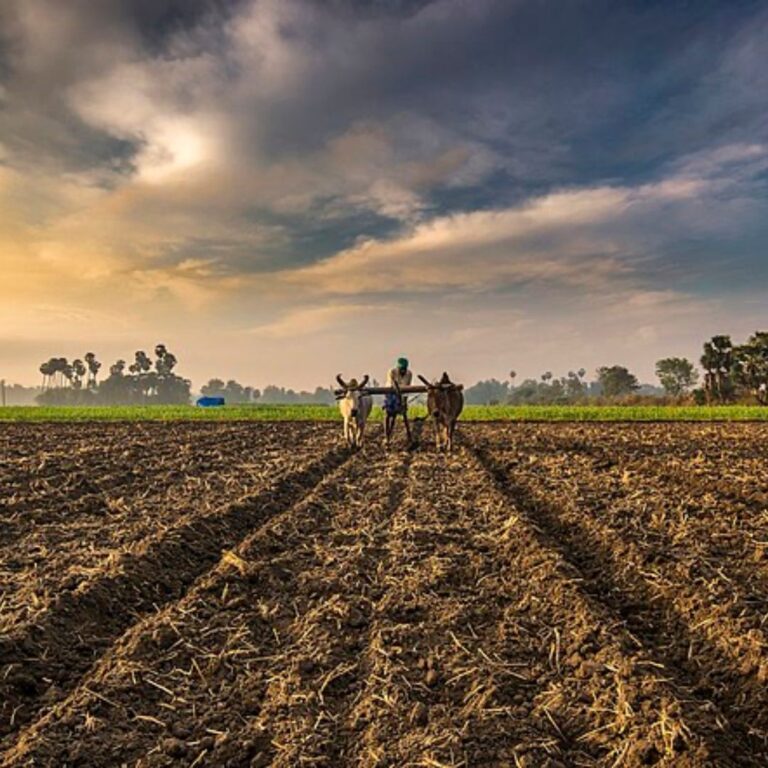
Torrential rains damage crops, threaten to push food prices
Heavy rains have damaged crops such as paddy, pulses, and vegetables which could have been harvested in a fortnight. This could stoke food inflation in Asia’s third biggest economy, farmers, traders and industry officials said. Crop damage is likely to push already rising food prices up further, said a Mumbai-based dealer with a global trading firm. “The government and RBI are under pressure to bring down inflation. The downward revision in crop production numbers means more and prolonged export curbs,” the dealer said. Higher food prices could prompt New Delhi to slap additional restrictions on exports of food commodities. The RBI has already raised its benchmark repo rate by 190 basis points this year. Neighbouring Madhya Pradesh, West Bengal, Haryana and Rajasthan have also seen heavy rainfall, which has damaged summer-sown crops, dealers said. That could lead to a reduction in yields and a deterioration in harvest quality, since crops were ready for gathering and in some places harvested crops were already drying, said Harish Galipelli, director at ILA Commodities India Pvt Ltd, which trades farm goods.

Climate Change helps invasive species thrive in India’s waterbodies
All species (alien and native) are affected by environmental change. Most invasive alien species (IAS) are more adept at taking root, multiplying and altering the ecosystem to suit them. Climate Change gives them a further edge and compounds their impact. It facilitates their spread and establishment, and creates new opportunities for them to become invasive, especially in our waterbodies. Waterbodies are being constantly altered, too. Their environment is affected by changing temperatures, salinity, chemistry, sea levels, ice content and weather patterns. It can make previously unsuitable habitats more suitable for IAS, accelerating their proliferation. Changing conditions can also make waterbodies less suitable for some native species. This year’s first-ever census of Kerala’s Ashtamudi lake found that 85 per cent of the 51 species present in the lake are marine varieties. It included the super-invasive Charru mussel. Researchers attribute the reason to a decline in freshwater flow from the Kallada river due to Climate Change. In India, the Zoological Survey of India lists 157 animal species as invasive. It includes 99 marine species and 19 species of freshwater fish.

Make air travel expensive to levy fair carbon tax
Carbon taxes on energy that people use in their homes – for heating, cooking or watching TV – charge consumers for the emissions per kilowatt-hour (kWh) of electricity, gas or oil used. Economists would say that these kinds of carbon taxes are regressive, because using energy to heat and power your home is a necessity and poorer people will use a much higher share of their income to pay for these things – and the taxes – than richer people. While total emissions have been falling in several rich countries over the past few years, emissions from cars and other means of transport are growing. The rise in air travel emissions has been especially rapid: a roughly sevenfold increase between 1960 and 2018 globally. Air travel taxes that apply to passengers could be levied on the emissions of each passenger per flight, the distance travel, or their seat class. An aeroplane’s economy class occupies the least space per person, while business- and first-class passengers take up more room and so are responsible for more emissions than the average passenger.
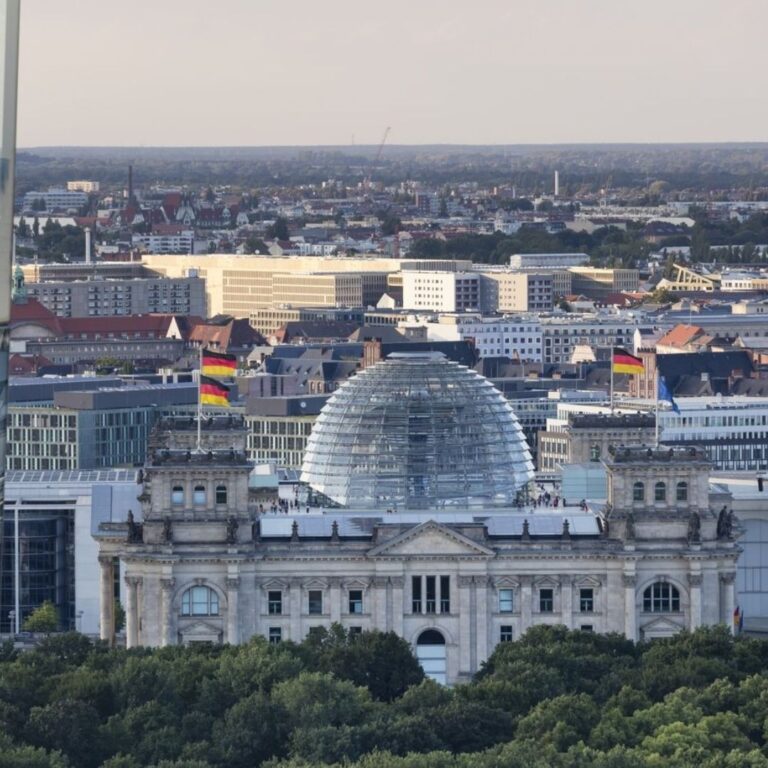
Plans afoot to rebuild war-ravaged Kharkiv
Even as Russia continues its attack on Ukraine — missile strikes hit Kyiv, Lviv and other cities on October 10 — plans for rebuilding are already taking shape. The city of Kharkiv in Ukraine has engaged British architect Norman Foster and his foundation to consider a post-war plan. Foster met with the city’s mayor, Ihor Terekhov, in Geneva earlier this year, where the architect presented a “Kharkiv manifesto” and announced his ambition to recruit a team of the “best minds” in architecture, planning and engineering to develop a new city masterplan. Foster said that Ukraine should start thinking now about rebuilding sustainable cities — a sentiment echoed by the mayor of Kyiv, Vitali Klitschko, who said that Ukraine will need “a Marshall plan” for reconstruction. Such a plan appears to be underway for Kharkiv, at least. Located close to the border — the Ukrainian city is only 50 miles from the Russian city of Belgorod — Kharkiv has been hit especially hard during the war with one-quarter of the city’s buildings been destroyed since the Kremlin began shelling Kharkiv in February.

Australian research agency to introduce gender quotas from next year
The National Health and Medical Research Council (NHMRC), Australia’s leading health and medical research funding organisation, plans to award half of its research grants for its largest funding programme to women and non-binary applicants, starting next year. It will apply to researchers at the mid-career and senior level applying for the agency’s investigator grants, which fund research and salaries. Grants will also be fixed at Aus$400,000 (US$252,000) each. “It’s game-changing,” says Anna-Maria Arabia, chief executive of the Australian Academy of Science in Canberra. The plan “directly removes a barrier that’s historically led to attrition in the research workforce and has led to the significant under-representation of women at senior levels,” she says. The gender disparities in grant applicants and recipients among senior researchers reflect disparities in the science, technology, engineering and mathematics (STEM) workforce, says Isabelle Kingsley, a research associate at the office of the Australian government’s Women in STEM Ambassador in Sydney. She hopes the NHMRC’s policy will help women to stay in research and progress in their careers.

Use gender-sensitive data to respond to climate security
Women should be consulted as sources of climate security innovators and champions. Incorporating their ideas and solutions into community strengthening strategies is important to increase the number of system-level resources and tools available for achieving climate resilience and avoiding climate-driven conflicts, write Steve Recca and Maryruth Belsey Priebe. Within the Women, Peace and Security (WPS) agenda, the issue of climate security presents a multifaceted test to humanity’s ability to collectively solve problems. Climate Change can exacerbate violence, conflict, and human-induced threats across the world, especially if women’s voices are absent from our response strategies. One of the major gaps in identifying and understanding the scope of local climate security risks is gender-disaggregated data. A 2022 collaborative study by the United States Indo-Pacific Command (INDOPACOM) and the University of Hawaii’s applied science and research centre, known as the Pacific Disaster Center (PDC), produced a science-based assessment of the key drivers of risk and vulnerability. It must be shared with local governments, security agencies, and also with women’s groups to develop disaster plans and climate resilience strategies at the local level.
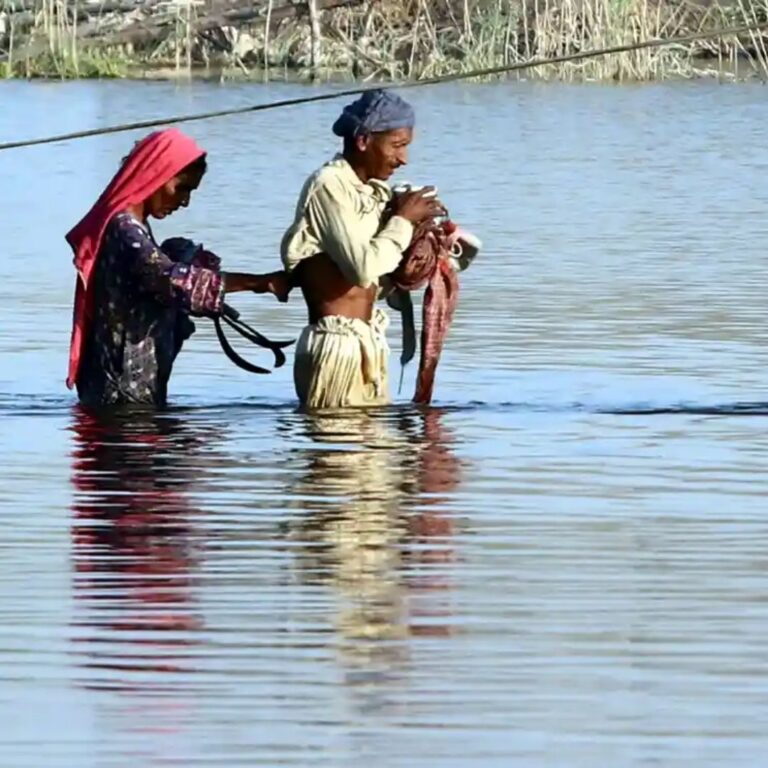
V20 urges rich nations to help poor countries hit by Climate Change
The V20 – made up of the 20 vulnerable countries facing the worst impacts of the climate crisis, and least able to cope with them – set out its proposals on October 17 for how rich countries should pay for the “loss and damage” caused by the Climate Crisis. Its demands are likely to be a key issue at the Cop27 UN climate summit, which starts in Egypt on November 6. Loss and damage refer to the most disastrous impacts of climate breakdown, such as hurricanes or severe floods. The V20 points out that it is the G20 countries – the world’s biggest economies, made up of both developed and rapidly industrialising nations – that produce about 80 per cent of global greenhouse gas emissions. Although some countries have put stiff targets in place, the G20 has made limited progress on cutting carbon. Shauna Aminath, minister of environment for the Maldives, said it was the failure of the world’s richest nations to help poor countries build resilience to extreme weather by constructing seawalls or preserving natural flood barriers.
October 7, 2022

Karnataka’s Kodagu coffee growers reel under Climate Change
Between June 1 and 17 this year, the district of Kodagu in Karnataka received 109 per cent excess rain, resulting in massive damage to coffee plantations. Besides Kodagu, Chikkamagaluru and Hassan districts were the worst affected. Kodagu also suffered an unexpected dry spell in March 2022. Coffee growers have suffered a major blow as 39 villages in Kodagu witnessed landslides and floods. Hundreds of acres of plantations were washed away due to excessive rainfall and cloudbursts. While plantation owners pleaded with the state government and also approached the court for compensation, environmentalists and planners accused the government of allowing the construction of roads and other buildings without proper consultation. They say that in addition to nature, there are reasons to also call this a man-made disaster. According to data shared by the Coffee Board of India, export from India dropped to Rs 5388.90 crore in 2021-22 from Rs 5451.90 crore in 2020-21. Experts believe the main reason behind this is Climate Change, which destroyed over 300-500 kilograms of coffee per plantation in Kodagu district alone.
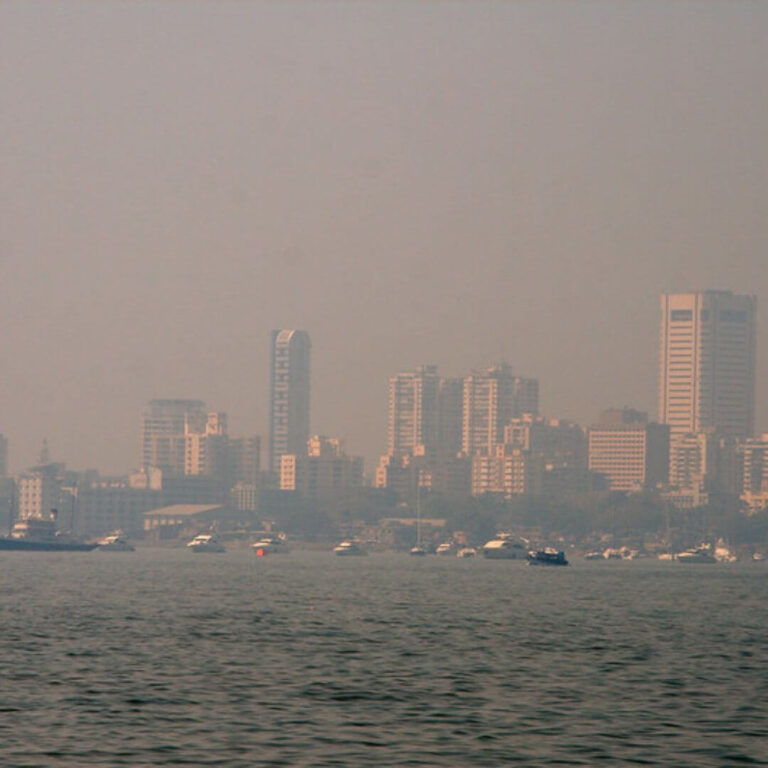
Clean energy could reduce anaemia prevalence among women
The prevalence of anaemia among women of reproductive age (15 to 49 years) will fall from 53 per cent to 39.5 per cent if India’s clean air targets are met, taking 186 districts below the national target of anaemia reduction. At 53.1 per cent, anaemia prevalence among women of reproductive age in India is among the highest globally, with urban India having slightly fewer cases compared to rural, according to a study that links exposure to fine particulate matter (PM2.5) to a high anaemia prevalence among women. The evidence comes against the backdrop of the latest review by the Lancet Commission on pollution and health, which underscores that “we are going backwards,” on actions to control pollution and prevent pollution-related disease. The review also emphasises the links between pollution, Climate Change and biodiversity loss. However, the Indian government has maintained that “no conclusive data is available in the country to establish direct correlation of death/disease exclusively due to air pollution.”
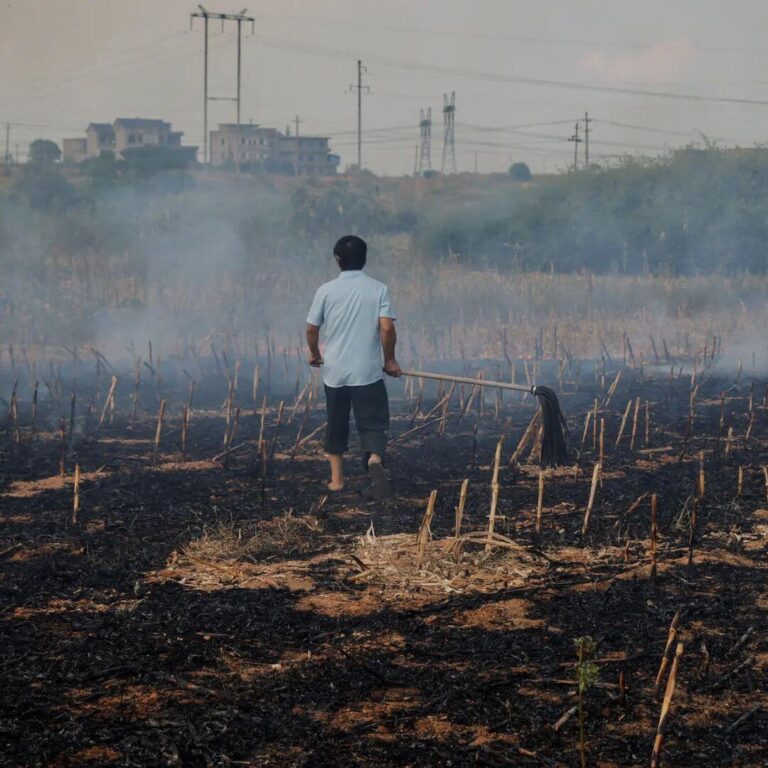
Climate Change leads to extreme heat across the world
Europe, China, and North America were parched by extreme heat — the latest evidence of how Climate Change caused by the burning of fossil fuels is imperilling food, water and electricity supplies around the world. Human-caused global warming has made severe droughts like the ones this summer in Europe, North America, and China at least 20 times as likely to occur as they would have been more than a century ago, scientists said. Such high average temperatures, over such a large area, would have been “virtually impossible” without the influence of greenhouse gas emissions, they said. China had its most brutal summer since modern records began in 1961, according to the country’s meteorological authority. To keep production lines running at car and electronics factories, China dug up and burned more coal, increasing its contribution to global warming. In the United States, nearly half of the area of the lower 48 states experienced moderate to extreme drought this summer. For Western and Central Europe, global warming increased the chances of this summer’s dryness by a factor of three to four.
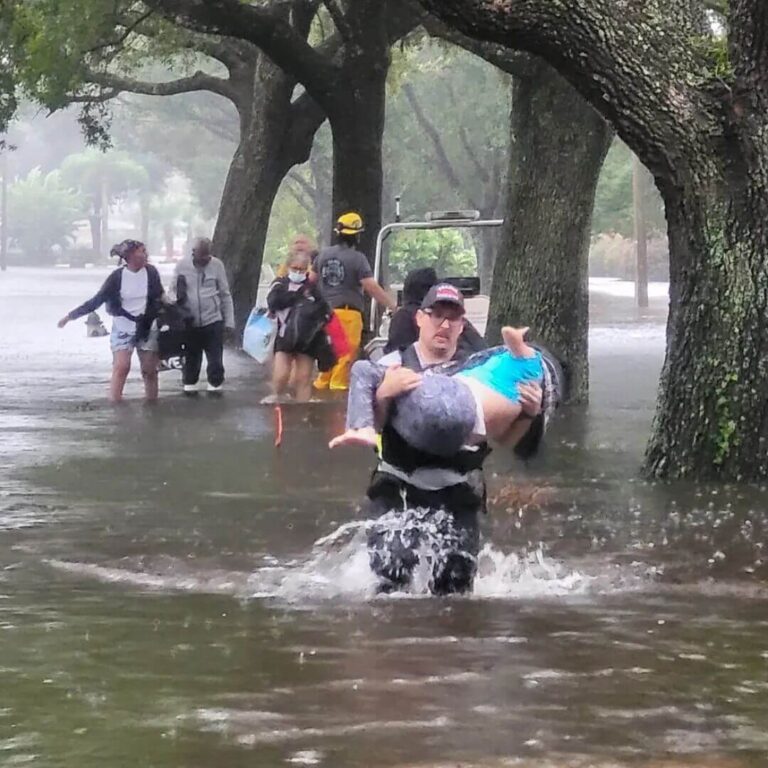
Hurricane devastation in Florida highlights need for better planning
Hurricane Ian wreaked havoc in Florida on September 28 and 29 as flood waters entered homes and flooded roads. Researchers who study flooding, development and Climate Change were horrified by the emerging images but not surprised. For years, they have warned that sprawling development in Florida and other coastal states was not sustainable, especially with the warming climate supercharging hurricane rainfall. “This is kind of what we had expected for days in advance, and it’s still heart-breaking to see so many people stranded,” said Kevin Reed, associate professor in atmospheric science at Stony Brook University in New York. Reed and colleagues recently published a study looking at all hurricanes during the 2020 season and concluded Climate Change was adding up to 10 per cent more rain to today’s hurricanes. They used the same models to compare Ian’s rainfall and concluded it was at least 10 per cent higher than it would have been without the warming climate. “This is one of the clearest indicators of how Climate Change is impacting storms,” Reed said.

Tech-savvy Chinese opt to work remotely from rural regions
China is catching up with the global trend of tech-savvy workers choosing cheaper and prettier locations to base themselves — a lifestyle that gained traction since the Covid-19 pandemic prompted a rethink of work-life balance. Digital nomadism in China offers a middle path between two quite extreme attitudes to work — the “996” culture prevalent in some tech firms of toiling 9am to 9pm for six days a week, and the protest culture of doing as little work as possible, known as “tang ping” or lying flat. An influx of creative, entrepreneurial people that include live-streamers, vloggers, online teachers and tech support workers can also help local authorities revitalise towns depleted of tourists by the pandemic. About 28 per cent of China’s web users were living in rural regions as of June, according to the China Internet Network Information Centre. The remote working culture benefits “location-independent professionals” and also companies, which can save on office rents and the higher salaries demanded by employees in big cities, says Olga Hannonen, a post-doctoral researcher at the University of Eastern Finland.

Road design changes in Mexico City reduce car traffic
Mexico City, one of the world’s densest places, has been changing and rethinking its right of way. Its design changes have removed space for cars, incentivised other transport modes and enabled more productive land use. The city’s bus rapid transit (BRT) system (which was recently expanded) works because it has right-of-way carve-outs. The rider benefits from elevated platforms, allowing prepayment and level boarding with buses. Another of the city’s alternative right-of-way carve-outs has been for “parklets” — structures on curbs that serve as an extension of the sidewalk. Mexico City also has begun hosting “car free” events, in which major roads are closed to private automobiles. The city abolished minimum parking requirements in 2017, causing developers to build 50 per cent less parking, and likely reducing car ownership. It has funded multiple modes of transit and allows a private bus network (peseros) that makes car ownership less necessary. This particular step is more granular; the city has allowed alternative uses on a block-by-block basis, often in cooperation with private interests that see benefit in more attractive streets.

Melbourne’s pop-up libraries help residents heal from lockdown
Small pop-up libraries have taken over abandoned shops in areas in Melbourne, Australia’s cultural capital. The lure of literature is one of the city council’s more creative solutions in bringing residents and visitors back into its centre. While the success of the library project — about 40,000 people have visited them since the programme’s launch at the end of last year — isn’t solely enough to revive the centre, the council is betting that it’s a sign of a comeback. For the Lord Mayor of Melbourne — a title bestowed on elected mayors of some Commonwealth cities — and self-described “mad book person” Sally Capp, the special dynamics of inner-city libraries were an obvious cure for the social wounds inflicted by COVID. With the weather warming up and work-from-home advice lifted, Capp expects only an upward trend in daytime foot traffic in the central business district. Among six pop-up venues is a children’s library at Federation Square, a major arts and culture venue, which offers story time for pre-schoolers. The council has included a mobile library that tours the city in a colourful van.
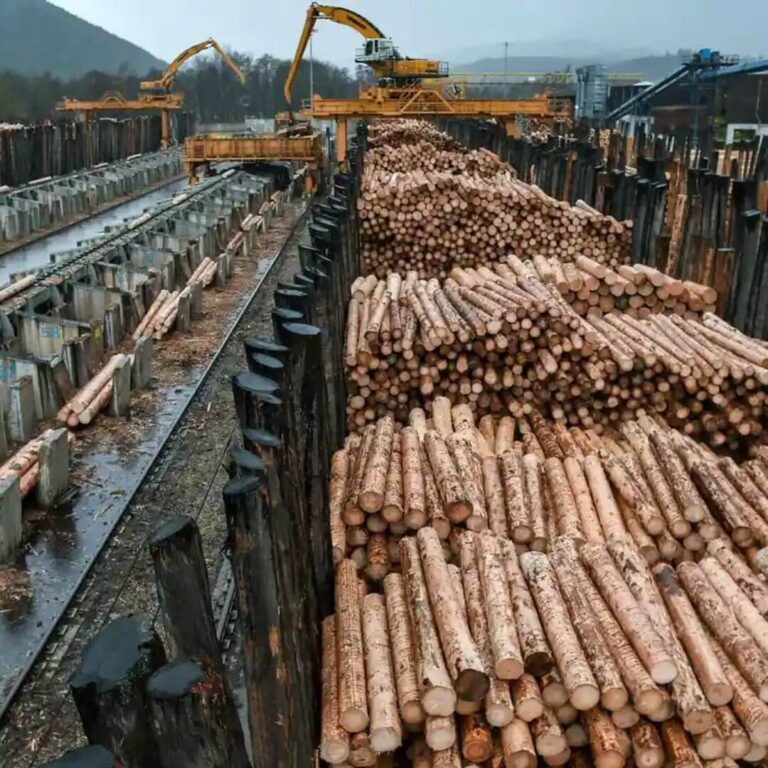
EU votes to cap subsidies for burning trees
The Members of the European Parliament (MEPs) recently voted to end subsidies for “primary woody biomass,” namely healthy standing trees logged for fuel or fallen trees. Trees cut down for fire protection or road safety reasons may continue to benefit from renewable energy subsidies, under the parliament’s proposals. Alex Mason, head of EU climate and energy policy at World Wide Fund for Nature (WWF), said: “For the first time, an EU institution has recognised that burning trees might not be the best way of getting off fossil fuels and stopping runaway Climate Change.” The EU wants to expand renewable energy as fast as possible, as it seeks to accelerate the green transition and end dependence on Russian fossil fuels. More than 500 scientists last year called on EU and world leaders to end subsidies for wood burning, saying the large increase in carbon emissions caused by felling trees creates a “carbon debt” the world does not have time to repay. “Trees are more valuable alive than dead both for climate and for biodiversity,” they wrote.
September 23, 2022

UNGA 2022 begins in the backdrop of heightened climate crisis
After two years of in-person restrictions due to the Covid-19 pandemic, leaders from across the world convened in New York for the 77th session of the UN General Assembly (UNGA). The theme for this session is “A watershed moment: transformative solutions to interlocking challenges,” which emerges from the recognition that the world is at a critical moment due to “complex and interconnected crises”. UN Secretary-General António Guterres remarked that, “Our world is blighted by war, battered by climate chaos, scarred by hate, and shamed by poverty, hunger, and inequality.” The Assembly meetings are also taking place after a heightened climate crisis has led to deadly floods in Pakistan, leaving thousands dead and millions more displaced, while severe droughts affect parts of Europe and China. India’s External Affairs Minister S Jaishankar is the country’s official representative at the event. The key issues that India focused on during the high-level UN General Assembly session are counter-terrorism, peacekeeping, reformed multilaterism, climate action and equitable access to COVID-19 vaccines.

US libraries turn into early childhood spaces
In the United States – the only rich country without paid parental leave – babies, toddlers and their caretakers are routinely neglected by both policy and city planning. It’s rare to find even a step stool in a public restroom, said Kristy Spreng, a child-care program director and former librarian who co-created a baby play area with a workstation for Ohio’s Loudonville Public Library. Public libraries – those perpetually underfunded beacons of inclusiveness – are picking up some of the slack, distinguishing themselves in recent years as one of the only American public institutions actively planning for very young kids. A public library literally crawling with babies is a relatively recent phenomenon, but getting children to love books has long been a goal of the American institution, which was built on the notion that “good books will create good citizens who will then create a good society,” as one library expert put it. Early childhood organisations turned to public libraries as the natural venue for connecting with hard-to-reach babies, including those living in shelters or whose parents are undocumented.
Chicago’s decaying icon to get a makeover
Google is set to give Thompson Center a corporate makeover. The Sbarro Urbanists, as they dubbed themselves, are an informal troupe of Midwest transit nerds, historic preservationists and devotees of the late architect Helmut Jahn, whose most famous building, the James R. Thompson Center, stands in Chicago’s Loop. Its soaring atrium, encircled by baby-blue and salmon-coloured glass, is also home to a vintage 1980s food court, whose fast-food offerings perfume the Illinois state offices that occupy the 17-story structure. The Sbarro Urbanists first gathered to share their affection for the polarising landmark in December 2021, and returned this summer after reports of the troubled building’s impending transformation into offices for Google. For them, excitement over the prospect of a second chance for the Thompson Center, which has been threatened with demolition, was laced with concern over what might happen to the building once Google takes over. They are less convinced that the search giant can restore the feeling of civic pride that many Chicagoans felt when they stepped into the Thompson Center’s psychedelic atrium.
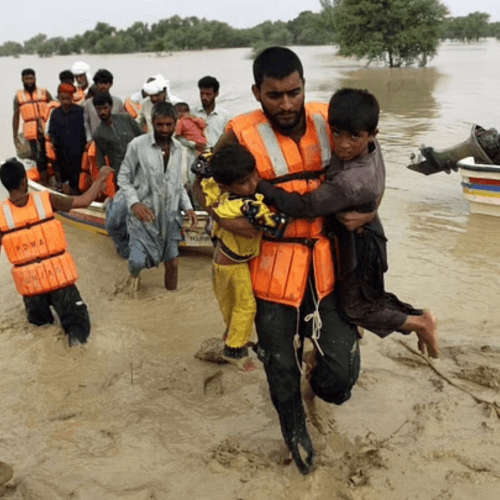
56 percent people from 34 nations say Climate Change severely affected them
There has been an increased amount of extreme weather events seen globally, especially in the past few months. Countries have been ravaged by floods, droughts, and heatwaves. The World Economic Forum conducted a survey to understand how people perceive Climate Change and how they think it is impacting their lives. According to the survey, more than half the adults around the world claim that they have been directly impacted by Climate Change. More than one third of them fear that the effects of climate change may force them out of their homes. Approximately 56 per cent of people from over 34 nations believe that Climate Change is having a severe impact on their lives. What was especially alarming in the survey was that over a third of people globally, around 35 per cent, expected that they may have to migrate from their places of residence within the next 25 years. Gender was also an attribute the survey considered – 54 percent men reported concern about Climate Change as compared to 59 per cent women.

One of Vietnam’s tourist hotspots shut over safety fears
Authorities in Vietnam’s capital have ordered the temporary closure of one of the city’s most popular attractions, a 300-metre stretch of railway narrowly bordered by cafes, restaurants and shops. Officials in Hanoi’s downtown Hoan Kiem district blamed safety violations raised by the national railway, and said all shops in the area have to close in the next three days. It wasn’t clear how long the shutdown would last. The Hanoi Train Street, as it’s popularly known, is a tourist hotspot for taking selfies or seeking to catch a glimpse of a train passing just in front of them. The controversy is the latest twist in the uncertain life of a landmark that has faced repeated threats due to clashes between small businesses and the local government. It’s also a sign of the Southeast Asian nation’s cautious embrace of foreign visitors as regional neighbours rush to rebuild tourism industries decimated by the Covid-19 pandemic. District authorities are working on their own plan to develop the area as a tourist attraction to meet locals’ and visitors’ needs and comply with safety regulations.

Prince William likely to focus on Climate Change, green energy
Green energy, Climate Change, and mental health are likely to be key policy areas Prince William will continue to speak out on as he steps into his father’s footsteps as a campaigning heir to the throne. King Charles III hinted he will no longer be lobbying on matters close to his heart now he is head of state. The King’s charities will face change, with their patron no longer able to spend as much time working with them, or appearing at fundraisers. In contrast Prince William, now officially the Prince of Wales, and his wife have used their Royal Foundation to focus on specific aims – and will continue to do so. Their projects revolve around conservation, the early years, mental health, and the emergency services. The couple’s work on Climate Change will continue with their Royal Foundation stating that “it’s clear that the time to act is now” and that nations must work together not only to overcome climate change, but also to combat the illegal wildlife trade, unsustainable development, and use of resources.
Shanghai’s Silicon Valley remains empty of residents
Chinese President Xi Jinping has a goal of turning a quiet Shanghai suburb into the country’s next Silicon Valley, but more than three years into its making, that vision is facing mounting challenges. Lingang, a 120 square kilometres (46 square miles) patch of land southeast of Shanghai, roughly a sixth the size of Singapore, was designated by Xi in 2018 as the country’s top free-trade area, to be modelled after Singapore and Dubai. It was also to be a new centre for high-end technological industries that would drive indigenous innovation and wean China off its reliance on foreign technology. Yet Lingang’s future as China’s new Silicon Valley remains far from certain, despite the Communist Party’s experience in building tech parks and special trade zones to attract investment, and drive China’s opening up. As the domestic economy slows and the geopolitical tensions that have hammered China’s tech sector worsen, Lingang is likely to find it harder to attract private capital and talent.
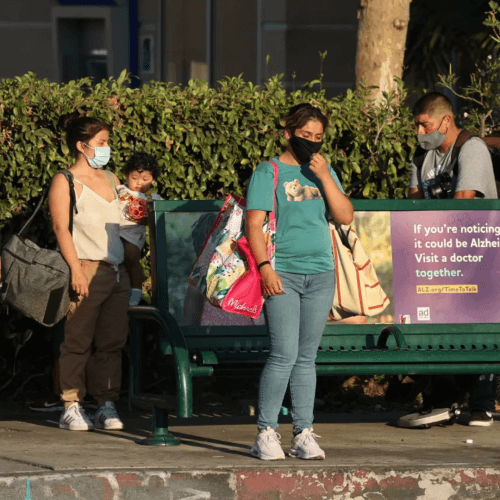
No shelter for Los Angeles bus riders as mercury rises
Of the 12,200 bus stops served by the Los Angeles County Metropolitan Transportation Authority, only a quarter have some kind of shade or rain shelter, and only half have a seat for those waiting. And waiting is what most bus riders do. While the average trip on a Metro bus is less than five miles, about half the time of that journey is spent looking down the road for signs of a bus. Now with Climate Change threatening ever more heat waves and wetter storms in California, riders and transit advocates are demanding that officials do something to provide cover from the elements. On hot days in the valleys, the nearby asphalt can approach 130 degrees Fahrenheit, making conditions dangerous. The searing weather is yet another setback for largely low-income bus riders who often face long, difficult commutes. While more public transportation is a crucial step in California’s push to lessen Climate Change by reducing greenhouse gases, the system in Los Angeles County is largely one of last resort. The majority of riders are Latino and among the region’s poorest. The median household income for 62 per cent of Metro riders is under $20,000.
September 9, 2022
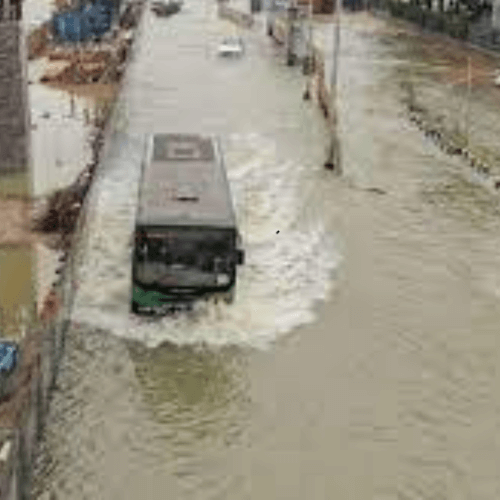
Flooded Bengaluru a wake-up call
Bengaluru continues to be devastated by torrential rain and waterlogging, turning the city into Venice. Harini Nagendra writes that such unusual weather conditions will become more frequent, perhaps even more intense in the future. But it’s not just the rains and just the local flooding that we need to worry about. The floods in Pakistan are exacerbated by the melting of the glaciers above. For some years, scientists warn, the rivers in Pakistan will be over-full; after the glaciers melt, the rivers will run dry. A disaster beyond imagination. Six of the world’s major rivers have run dry this summer, in areas as far flung as Europe, China and the US. Earlier this week, a group of scientists from Europe and the US found the Greenland ice sheet to be on an irreversible path towards melting, making sea levels rise by at least 10 inches. The paper, published in Nature Climate Change, calls this an ominous prognosis – in layman’s terms, this is the scary-as-hell future we have to deal with.

Devastating floods in Pakistan more than a natural disaster
Monsoon rains and melting glaciers have combined to displace at least 35 million people from their homes in Pakistan while over a thousand people are already reported dead. Agriculture and livestock have been destroyed on a massive scale, triggering fears of severe food shortages in the coming months. While political commentators in Islamabad and abroad were busy reporting every detail of the political gossip generated in the centre, faint cries of help began circulating on social media from people affected on the peripheries of Pakistan. Soon, floods began overwhelming areas in Sindh and south Punjab. The first time floods became the main headline on a Pakistani channel was August 23. By this time, more than 20 million people had already been affected, making it the worst natural disaster in the country’s recent history. Pakistan was already dealing with a dire economic crisis when the floods hit the country. Even before the floods, it was clear that Pakistan’s economy could no longer sustain the exorbitant taxes demanded by the IMF, particularly without touching the privileges of the elites.

Berlin’s e-buses aim to meet climate goals
Berlin rolls out new electric buses, heralding the biggest overhaul to Germany’s largest city bus system since it adopted the internal combustion engine in 1906. This is significant for Berlin and the country as a whole as searing summer temperatures linked to climate change coupled with an energy supply crisis in the wake of Russia’s war on Ukraine have made it more urgent for countries across Europe to overhaul how they power everything from homes and factories to the daily commute. And Berlin, the capital of the continent’s largest economy, is on the front line. The overall goal is to make the city’s buses emission-free by 2030, replacing 1,600 diesel vehicles with 1,700 electric ones at an estimated cost of 2 billion euros ($2 billion) when you include the new infrastructure needed. It’s part of a wider plan to have 50% of Germany’s public buses climate neutral by that year. Germany wants to become carbon neutral by 2045. But the energy shortage caused by Russia’s reduction of natural gas flows to Europe threaten to derail that target.
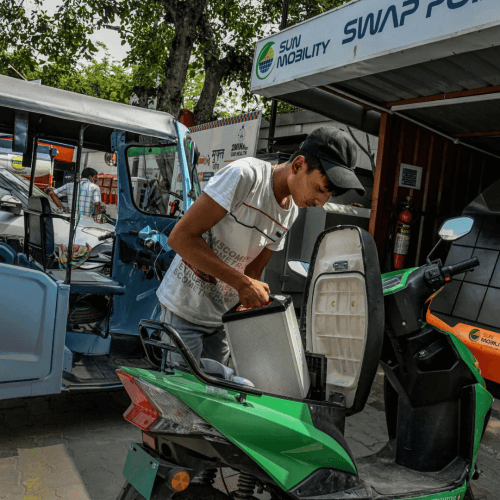
India’s e-vehicle push a template for developing nations
Electric mopeds and three-wheeled rickshaw taxis that sell for as little as $1,000 are zipping along India’s congested urban thoroughfares, cheered on by environmentalists and the government as a way to clear some of the oppressive smog. India’s success with low-cost vehicles is also providing a template for how developing countries could ditch combustion engines and combat climate change without pricey electric cars. Indian automakers sold 4,30,000 electric vehicles in the 12 months that ended in March, more than three times as many as a year earlier. Most were two- and three-wheeled vehicles, with cars accounting for just 18,000, according to industry data. Americans bought about 4,87,000 new electric cars in 2021, a 90 percent increase from 2020, according to Kelley Blue Book. Now, the Indian government and auto industry are betting heavily on affordable electric vehicles. Competition and subsidies have made electric mopeds and rickshaws as cheap as or cheaper than internal-combustion-engine models. The recent surge in oil and natural gas prices has made it much more expensive to operate combustion-engine vehicles.

Tokyo plans hi-tech city on reclaimed land
Japan’s capital Tokyo is embarking on an ambitious project to build a futuristic city by creating more land where there’s currently water. Called the Tokyo Bay eSG Project, the goal is to boost international competitiveness by creating a sustainable city and embracing cutting-edge digital technologies. There are plans to extend an unused parcel of land in the middle of the bay to 1,000 hectares (2,470 acres) eventually, with about one-fifth of the development completed so far. The unpopulated area hosted canoe and rowing competitions during the 2020 Tokyo Olympics, and is now being used for storing containers and garbage processing. Tokyo is seeking to attract about nine companies to focus on new technologies such as reducing traffic congestion and greenhouse emissions or generating clean energy by mid-October, with as much as 30 million yen ($7.3 million) in funding per project for the first year. “The challenge is to build a city that will be strong against the crises we face,” said Manabu Miyasaka, a deputy governor for Japan’s capital, “whether it’s infectious diseases, climate change or energy supply.”
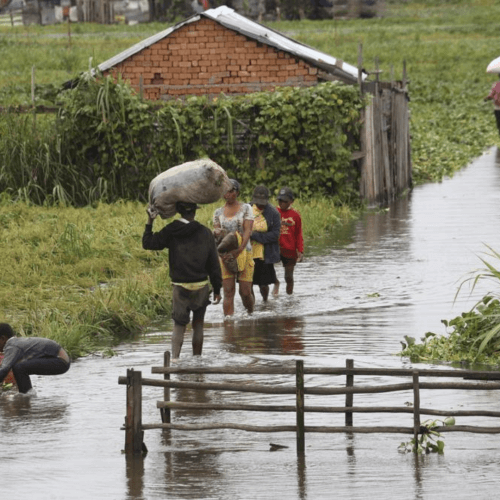
As Africa’s climate warms, rich countries pledge more funds
The amount promised by the Africa Adaptation Acceleration Program — a joint initiative between various nations and organizations — is billed as the largest ever adaptation effort globally. Half of the amount is pledged by the African Development Bank with representatives from Denmark, the United Kingdom, France, the Netherlands, the International Monetary Fund and others also offering their support for the initiative. The continent emits just 3% to 4% of emissions despite being home to nearly 17% of the world’s population but experts say it is particularly vulnerable to climate change as it less able to adapt. African nations hope to use the funds to improve their resilience to extreme weather events, such as droughts or floods, increase tree cover and protect biodiversity, as well as expand their renewable energy capacity. After decades of developed countries falling short on their funding promises, many African nations remain skeptical that the funds will ever reach the continent. The U.N. Climate Change High-Level Champion for Egypt, Mahmoud Mohieldin, said the existing global climate financing structure is “insufficient and ineffective,” especially for Africa.

Typhoon Hinnamnor leaves South Korea with floods and outages
Hinnamnor hit near the southern cities of South Korea Geoje and Ulsan at 4:50 a.m. and 7:10 a.m. respectively said the Korea Meteorological Administration. About 3,500 people were evacuated and 20,000 homes along South Korea’s southern coast line suffered power outages, Yonhap reported. Posco said a minor fire broke out at two of its plants in the coastal city of Pohang and the company was checking for damages. The meteorological agency had warned of potential casualties from what was expected to be the most powerful storm ever to hit the country. At least one person was reported missing. The nation suffered the second major storm in a matter of weeks after Seoul was hit by the heaviest rains in a century in early August, killing at least 11 people. President Yoon Suk Yeol faced criticism for his response to the floods and apologized to the nation for “inconveniences” caused by the storm. While the typhoon is moving away from land, the impact of the massive storm is still being felt across South Korea and even parts of Japan.
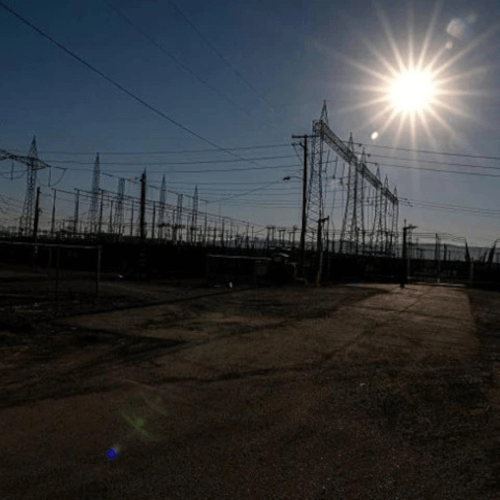
California calls grid emergency amid heatwave
With millions of homes and businesses cranking air conditioners to cope with temperatures above 110 degrees Fahrenheit (43.3 Celsius), electricity use in the largest US state is forecast to hit 48.9 gigawatts Monday, the most since 2017. The state’s grid operator is forecasting an energy deficiency between 5 p.m. and 9 p.m. local time. The prospect of blackouts underscores how grids have become vulnerable in the face of extreme weather as they transition from fossil fuels to renewable energy. Much of California is under an excessive heat warning for the next four days. Sacramento could reach 113 on Monday and 115 on Tuesday shattering records for those days, Oravec said. Downtown Los Angeles reached 103 on Sunday, which was the first time the temperature broke 100 this year. The heat wave, which began the last week of August, is remarkable for both its ferocity and duration, officials said. Each day the heat drags on, the risk of power failures rise. California Governor Gavin Newsom has issued an emergency proclamation to free up extra power supplies.
August 26, 2022

Scientists welcome US climate bill, urge stronger action
On August 16, US President Joe Biden signed the Inflation Reduction Act of 2022 into law. Several US agencies, including the National Oceanic and Atmospheric Administration (NOAA) and the Department of Energy (DOE), will see a significant influx of cash from a massive climate and tax bill. Scientists around the world welcome the legislation which pledges US$369 billion in climate investments over the next decade — while acknowledging that more work is needed to counter global warming. The legislation would cut US greenhouse-gas emissions by about 30–40 per cent below 2005 levels by 2030, scientists estimate. More than $60 billion is slated to go to US manufacturing of clean-energy technologies, such as solar panels and electric vehicles, and billions more are included in tax credits for decarbonization, clean-vehicle purchases and household-level efficiency improvements — making this the largest climate investment in US history. Even if all nations hit their climate targets, the global temperature will rise above the 1.5 degrees Celsius mark, says Roxy Matthew Koll, a climate scientist at the Indian Institute of Tropical Meteorology in Pune.

Thane creek granted Ramsar status
The Thane creek was granted Ramsar status on August 14. It is also the largest wetland area to be declared a Ramsar site in Maharashtra. its western bank is in Mumbai and Mumbai suburban districts, the eastern bank is in Thane district and adjoins Thane city and Navi Mumbai. The creek extends 26 kilometres north of Mumbai harbour where it connects with the Ulhas river, one of its primary sources of fresh water, via a narrow channel. It encompasses an area of 6,521.08 hectares of which 1,690.5 hectares were declared the Thane Creek Flamingo Sanctuary and 4,832 hectares were notified as an eco-sensitive zone around the sanctuary in October 2021. In its proposal, the government had observed that several bird species are found in the Thane creek area including flamingos, making the mangrove forest an area of special importance from the global point of view and Ramsar status would help to preserve its biodiversity. The creek is fringed by mangrove forests that protect the land from cyclones, tidal waves, seawater seepage and intrusions.
Tracking global warming: India ahead of deadline to submit national goals
India will submit its nationally determined contribution (NDC) well before the September 23 deadline of the United Nations Framework Convention on Climate Change (UNFCCC). The NDCs will be analysed for a report to be published by the UNFCCC secretariat later this year. The NDC synthesis report measures the impact of NDCs submitted to understand the current emissions trajectory and assess whether the world is on track to meet the Paris Agreement goal of limiting global warming to below 2 degrees Celsius. The synthesis report released on September 17 last year found, based on NDCs submitted until last year, that greenhouse gas emissions for 2030 would be 59.3 per cent higher than in 1990. The total GHG emission level resulting from implementation of the unconditional elements of the NDCs is projected to be 7.8 per cent higher in 2030 than in 2019. As per the Intergovernmental Panel on Climate Change’s findings, CO2 emissions need to decline by about 45 per cent from the 2010 levels by 2030 reaching net zero around 2050 in order to keep global warming under 1.5 degrees Celsius warming level.
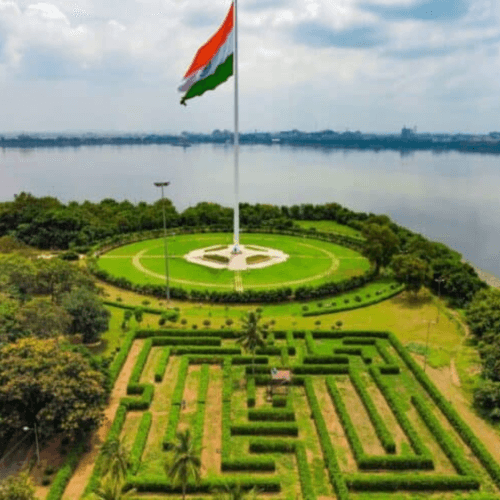
Hyderabad may build wind garden to cool city
The Hyderabad Metropolitan Development Authority (HMDA) is exploring the option of a ‘Wind Garden’ on the lines of the one coming up in Madrid in Spain that is designed to significantly lower the temperature and cool the city. After Telangana Municipal Administration and Urban Development Minister K T Rama Rao about exploring the idea of a wind garden, Urban Development Special Chief Secretary Arvind Kumar responded, ‘’We are ascertaining details on wind gardens in Madrid and Bangkok, Thailand and will take it up in Hyderabad, especially in green field projects and open spaces.’’ The garden is likely to be created in Sanjeevaiah Park or any of the urban parks maintained by HMDA. The vast Sanjeevaiah Park has plenty of greenery with the Hussain Sagar lake around it and appears to be suitable for implementing such a model. Madrid is building the ‘wind garden’ that is expected to lower temperatures by around 4 degrees Celsius. It is hoped that the garden will help to cool the surrounding areas and create some much-needed shade for residents.

Arctic is warming four times faster than rest of the world: Study
A new study shows that the Arctic has warmed nearly four times faster than the rest of the world over the past 43 years. This means the Arctic is on average around 3 degrees Celsius warmer than it was in 1980. This is alarming, because the Arctic contains sensitive and delicately balanced climate components that, if pushed too hard, will respond with global consequences. Besides sea ice, the Arctic contains other climate components that are extremely sensitive to warming. If pushed too hard, they will also have global consequences. One of those elements is permafrost, a (now not so) permanently frozen layer of the Earth’s surface. As temperatures rise across the Arctic, the active layer, the topmost layer of soil that thaws each summer, deepens. This, in turn, increases biological activity in the active layer resulting in the release of carbon into the atmosphere. Arctic permafrost contains enough carbon to raise global mean temperatures by more than 3 degrees Celsius. The release of previously stored carbon dioxide and methane will contribute to further Arctic warming, subsequently accelerating future permafrost thaw.

China’s Yangtze dries up, hydropower affected
A severe heat wave and drought in China has caused some rivers in China – including parts of the Yangtze – to dry up, affecting hydropower, halting shipping, and forcing major companies to suspend operations. The loss of water flow to China’s extensive hydropower system has sparked a “grave situation” in Sichuan, which gets more than 80 per cent of its energy from hydropower. The demand for electricity has increased by 25 per cent this summer. The Yangtze is the world’s third largest river, providing drinking water to more than 400 million Chinese people, and is the most vital waterway to China’s economy. It is also crucial to the global supply chain, but this summer it has reached record-low water levels, with entire sections and dozens of tributaries drying up. Water flow on the Yangtze’s main trunk is more than 50 per cent below the average of the last five years. Shipping routes in the middle and lower sections have also closed. Last week, Sichuan suspended or limited power supply to thousands of factories and rationed public electricity usage due to the shortage.
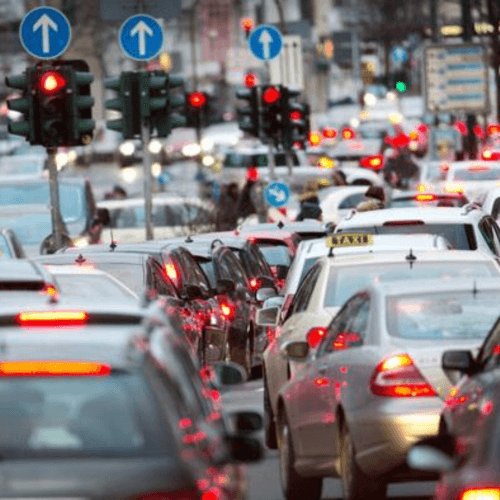
Germany’s cheap rail travel reduces car use
Germany’s three-month experiment with nine Euros ($9.20) monthly ticket has proved to be hugely popular, with train journeys longer than 30 kilometres up by 42 per cent compared to 2019. The ticket allows travel anywhere on regional trains, trams and buses, an effort to help with a cost-of-living crisis and reduce car use as energy prices soar. The super-discounted tickets run out at the end of August, and some politicians want it extended in some form. In a Kantar poll last month, almost 80 per cent of respondents supported that idea. But the man in charge of the country’s finances is reluctant. Christian Lindner drew uproar on Twitter last week when he criticised citizens’ “freebie mentality,” and has argued that such a subsidy can’t be sustainably financed in the long term. The three-month offer cost the government about 2.5 billion Euros. A study in Munich found that only 3 per cent of people in the city used their car less after the ticket was introduced, while more than a third said they increased their public transport usage.
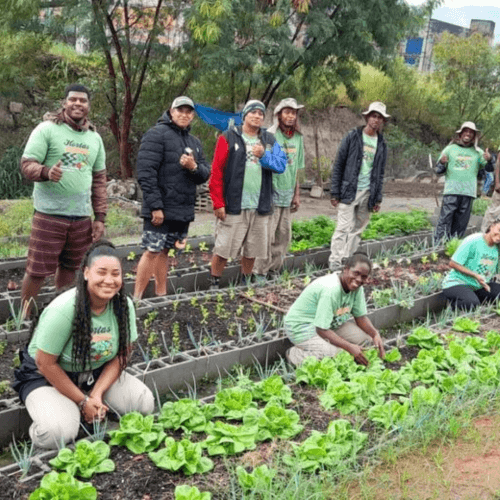
Brazil to build world’s biggest urban garden by 2024
The city of Rio de Janeiro is working to build the largest urban garden in the world. As part of a government-funded initiative known as “Hortas Cariocas”, the move intends to popularise the consumption of organic produce and provide a source of income to disadvantaged families. The urban garden will span several surrounding favelas connected by a green strip of land alongside the Madureira Mestre Monarco Park, located in the north zone of the city, including the communities of Cajueiro, Palmeirinha, Serrinha, Buriti and Faz-Quem-Quer. The garden will be as large as 15 soccer fields. The objective of building the world’s largest urban garden has strong support from Rio de Janeiro Mayor Eduardo Paes, who made it a goal of his administration to have the garden fully operational by 2024. The project will expand existing gardens in the communities of Cajueiro and Palmeirinha, creating 11 hectares of green space for the cultivation of organic produce for gardeners to sell and donate across surrounding communities. Up to 1,00,000 families will eventually benefit from the project every month.

Penn Station’s $6 billion makeover to ease travel woes
New York City’s Pennsylvania Station is set to get a $6 billion makeover. The prospect of a new, more pleasant Penn Station comes as work moves forward on the Gateway Project, which aims to ease the US East Coast’s toughest train bottleneck. That project will double the rail capacity between New Jersey and midtown Manhattan by building a new tunnel under the Hudson River and rehabilitating an existing tube. The Gateway Project plans to ramp up hiring over the next year as part of a requirement to show it has sufficient technical staff and controls in place to be eligible for its next round of federal grants. Built in 1910, Penn Station was regarded as a masterpiece of the Beaux-Arts architectural style. It was torn down in 1963 and rebuilt in 1968 to make room for the latest version of Madison Square Garden, sparking international outrage. Ideas for replacing or renovating Penn Station have circulated for decades. The biggest question has been whether to relocate Madison Square Garden to create room for something akin to the original station.
August 12, 2022
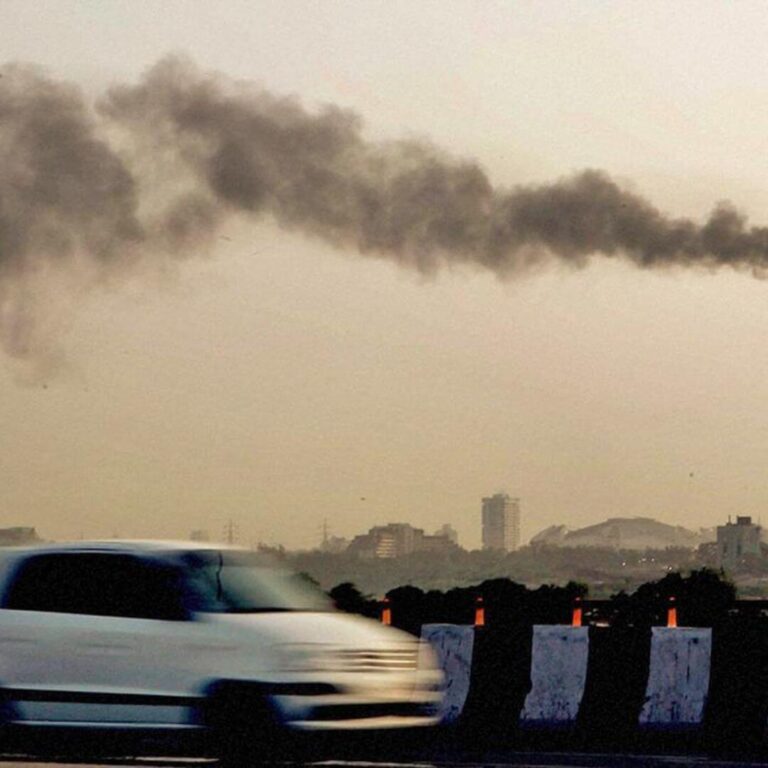
New plan to check air pollution in Delhi-NCR from Oct 1
The Graded Response Action Plan (GRAP), notified by the Ministry of Environment and Forests in 2017, comes into force in Delhi-NCR from October 15 every year when air pollution levels in the region start worsening. This year, the Commission for Air Quality Management (CAQM) will implement it from October 1. The revised plan, part of a new policy formulated by the CAQM to check air pollution in Delhi-NCR, focuses on proactive implementation of curbs based on forecasts and restrictions can be imposed up to three days in advance. Earlier, the authorities would implement the measures only after the PM2.5 and PM10 concentration touched a particular threshold. The new plan also entails a ban on BS IV four-wheeler diesel vehicles, barring those engaged in essential services, in Delhi and the bordering districts of NCR if the air quality index (AQI) breaches the 450-mark. The revised GRAP recommends a ban on the use of coal and firewood, including in tandoors in hotels, restaurants, open eateries; and on diesel generator sets, except for emergent and essential services under Stage I.

Plans to generate electricity from solar windows
The University of Michigan researchers have published the results of their work on a process to manufacture windows that can be large—up to two meters by two meters—and efficient in terms of electricity production. “You see a lot of these glass and steel buildings around which are just walls of windows,” said Stephen Forrest, an electrical engineering professor at Michigan and co-author of the study. “Why not turn that excess energy (from sunlight) into electricity to help power the home or the building?” The Michigan team, whose work appeared this month in the journal Joule, has come up with a process of making solar cells from dye-like materials, which are connected to lines of metal so small they are invisible to the eye. The window has an efficiency of 7 per cent, which is the share of solar radiation that gets converted to electricity. Much of the work on solar windows is to increase efficiency and reduce costs to the point that the product makes sense to a prospective buyer.

Cameras to make bike lanes safer in New York City
A groundbreaking bill in New York state could enable New York City to deploy its first bike lane cameras, boosting safety among supposedly protected bike lanes where cars remain frequent, unwelcome and dangerous interlopers. The bill would give the city’s transportation department the green light to install up to 50 such bike lane cameras, with violators mailed $50 fines. Cyclists are likely to welcome any measure that reduces lane blockages, a longstanding bugaboo for those on two wheels. One New York rider grew so incensed that he created a computer program in 2018 to quantify vehicular obstructions. In Northern Virginia, entrepreneurs built an app to identify cars blocking bike lanes; 9,500 were spotted in a handful of Arlington bike lanes in a single week. A cyclist has little recourse when facing a car obstructing their lane; confronting drivers can be a risky proposition. The obvious way to protect bike lanes is, literally, to protect them — with hard infrastructure that physically prevents motor vehicles from invading cyclists’ space.

Nepal villagers term Climate Change ‘divine revenge’
In the Himalayas, climate change is taking place faster than in almost any other region on the planet. This trend is set to continue: even if average global temperature increases are limited to 1.5 degrees Celsius, the Himalayas are predicted to warm at least a further 0.3 degrees Celsius. As highly ecologically sensitive zones, the profound impacts already wrecked across high mountain environments by even small degrees of warming have been no surprise for climate scientists. But for many residents of Walung, a Himalayan village in the Taplejung District of north-eastern Nepal, the cause of these environmental changes is unequivocal: it signifies the arrival of kawa nyampa – the bad times. “Yak herders are no longer able to depend on their traditional knowledge for forecasting weather,” said Tashi Dorji, who heads the conservation programme the Kanchenjunga Landscape Initiative at the International Centre for Integrated Mountain Development in Kathmandu. “The biophysical and astronomical indicators used for generations to make those predictions have vanished with climate change.” Yet, universally, residents of Walung agree that these environmental changes remain a bad omen.

Cities encourage healing with ‘trauma-informed placemaking’
In the fall of 2019, Haus of Glitter — a queer BIPOC art collective and performance lab based in Providence, Rhode Island — moved into a nearly three-century-old homestead tucked into an easy-to-miss park tucked between a freeway and an electrical substation in the city’s Oakland Avenue neighborhood. The 1756 Esek Hopkins House had been built by the naval commander commemorated locally for his role in the Revolutionary War, but his less-publicized history was as a key figure in the transatlantic slave trade. Thus would begin a truly unique example in an emerging field referred to as trauma-informed placemaking. Over nearly three years, the members of Haus of Glitter have used the space to sift through layers of trauma — from their own histories and personal experiences, from the legacy of American colonialism and racial violence, and from the pandemic and ongoing political turmoil. Haus of Glitter emphasizes body-based practices in its process of individual and community trauma healing. The site became a safe haven for the surrounding neighborhood and for queer and BIPOC communities throughout Providence during the pandemic.
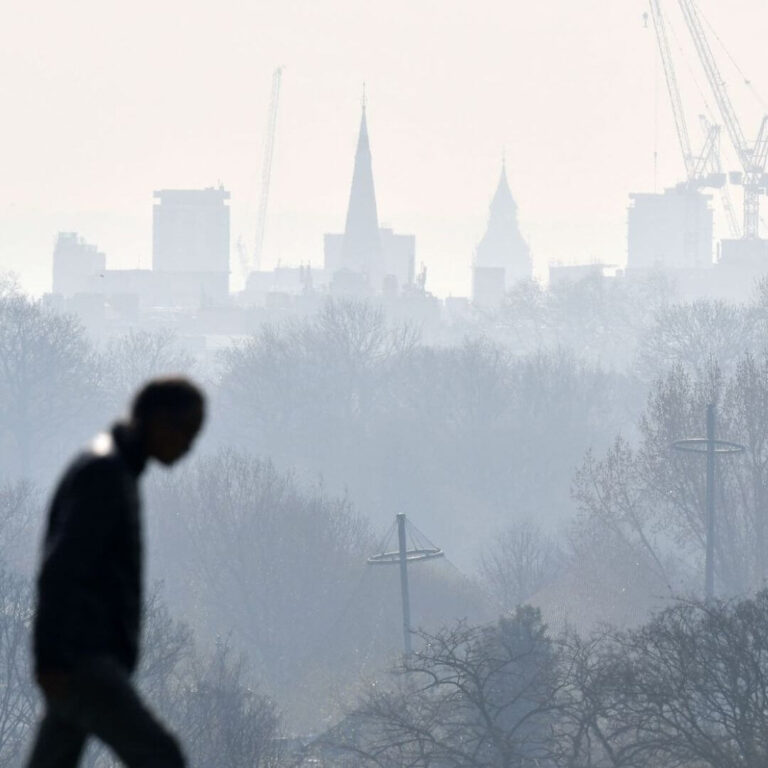
Air pollution likely to increase risk of developing dementia: Study
A report by the Committee on the Medical Effects of Air Pollutants concludes that air pollution “likely” increases the risk of accelerated “cognitive decline” and of “developing dementia” in older people. It has published its findings after reviewing almost 70 studies which analysed how exposure to emissions affect the brain over time. The three other health conditions with a known link to air pollution are respiratory conditions (such as asthma), heart disease and lung cancer. Dementia has been linked to air pollution previously. There is also more well-established evidence to show that exposure to air pollution increases the risk of heart disease. Breathing in emissions can damage the blood vessels by making them narrower and harder – increasing the likelihood of clots, abnormal heart rhythms and heart attacks, according to the British Heart Foundation. The authors of the new report said: “The epidemiological evidence reviewed fairly consistently reports associations between chronic exposure to air pollution and reduced global cognition and impairment in visuospatial abilities as well as cognitive decline and increased risk of dementia.”

Climate Change: Only female sea turtles hatch in Florida
Scientists studying sea turtle hatchlings and eggs in Florida have found only female sea turtles hatched in the past four years. The trend is just one of many signs that the climate crisis is interfering with the Earth’s natural ecosystems, advancing too rapidly for many species to adapt. When a female turtle digs a nest on a beach, the temperature of the sand determines the sex of the hatchlings. If a turtle’s eggs incubate below 81.86 Fahrenheit (27.7 Celsius), the turtle hatchlings will be male, whereas if they incubate above 88.8 F (31C), they will be female, according to NOAA’S National Ocean Service website. “The frightening thing is the last four summers in Florida have been the hottest summers on record,” said Bette Zirkelbach, manager of the Turtle Hospital in Marathon, a city in the Florida Keys. “Over the years, you’re going to see a sharp decline in their population because we just don’t have the genetic diversity,” said Melissa Rosales Rodriguez, a sea turtle keeper at the recently opened a turtle hospital at the Miami Zoo.
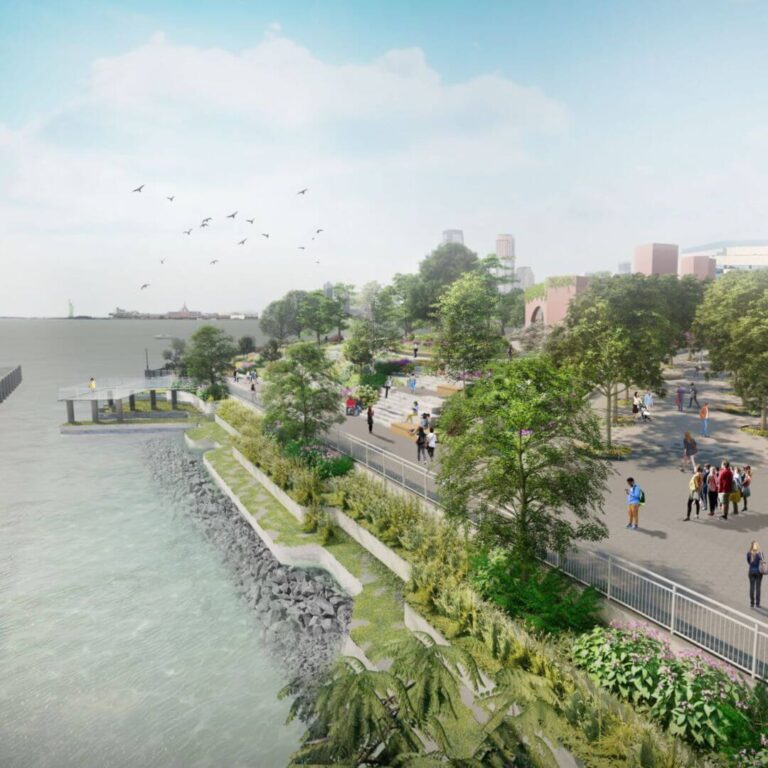
Reshaping Battery Park City to protect from floods
The Battery Park City Resiliency Project in New York City is a wholesale reconstruction of the already artificial Battery Park City — 92 acres created from soil and rock dug during the construction of the World Trade Center. The resilience projects around Battery Park City are billed as critical in an era of climate change. They’re also expensive — the first phase is expected to break ground in September, with an estimated price tag of at least $221 million; the second phase is estimated to cost at least $630 million. Advocates insist this investment is necessary to shield Lower Manhattan, a crucial node in the global economy and site of some of the most valuable real estate in the US. The overall objective: protection against so-called 100-year flood events, which are expected to be more frequent and intense. “It’s a good model for climate change resilience, in that they have this more collective organization that can represent the neighborhood,” said Thad Pawlowski, a professor and managing director at Columbia University’s Center for Resilient Cities and Landscapes.
July 29, 2022

Lack of toilet access a health hazard for Indian women
For millions of low-income residents across India, bathroom schedules are often dictated not by biological need, but by inadequate toilet infrastructure. Surveys show that the situation is especially acute in urban areas like Mumbai. Safety concerns, as well as cultural norms, deter women from practising open defecation as a fallback. (Men are more likely than women to practice open defecation even when public toilets are available.) Physicians and activists say the continued practice of caste- and class-based discrimination compounds the harms, as some women are forbidden from using the toilets in their workplaces. Toilet infrastructure is not just an issue of sanitation, said Deepa Pawar, a social activist focusing on gender and youth issues in marginalized communities. “It is a much larger problem that encompasses health, gender, and social justice issues,” she said. Although the city government ordered toilet fees to be waived for everyone, Pawar and residents of Subhash Nagar say women were still charged. “Essentially women were being penalized for their gender,” Pawar said.

India gets five more Ramsar sites
Five more Indian wetlands have got Ramsar recognition, bringing the number of such sites to 54. These are the Karikili Bird Sanctuary, Pallikaranai Marsh Reserve Forest and Pichavaram Mangrove in Tamil Nadu, the Sakhya Sagar in Madhya Pradesh and Pala Wetland in Mizoram. Environment Minister Bhupendra Yadav tweeted on Tuesday: “Delighted to inform that 5 more Indian wetlands have got Ramsar recognition as wetlands of international importance.” Being designated a Ramsar site does not necessarily invite extra international funds but that states — and the Centre — must ensure that these tracts of land are conserved and spared from man-made encroachment. Acquiring this label also helps with a locale’s tourism potential and its international visibility. Until 1981, India had 41 Ramsar sites though the last decade has seen the sharpest rise —13 — in designating new sites. India’s Ramsar wetlands are spread over 11,000 sq km — around 10% of the total wetland area in the country — across 18 states. No other South Asian country has as many sites.
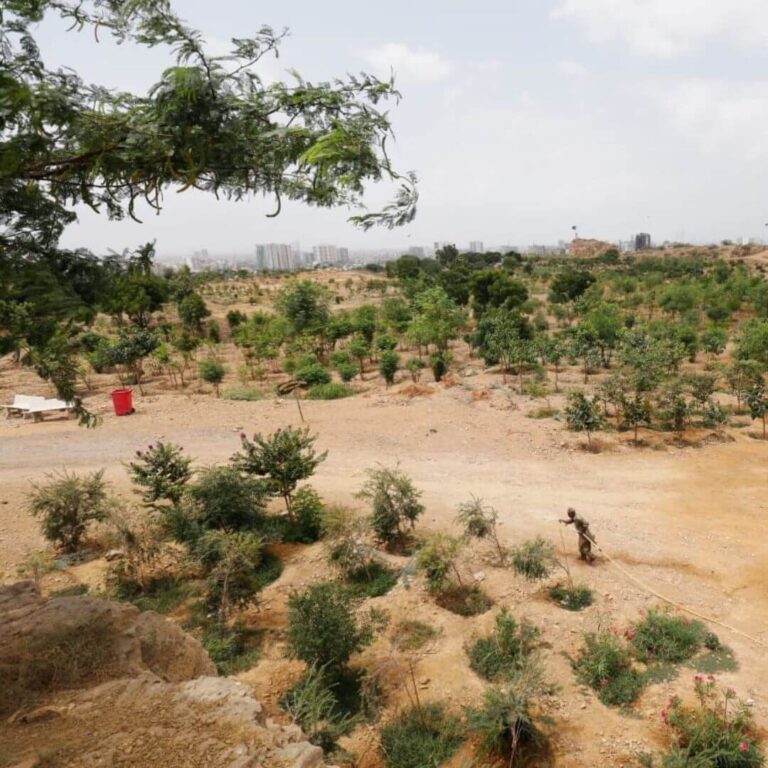
Seared by heat waves, Pakistan residents start plantation drives
Many residents in Pakistan, where forest cover lags far behind average levels across South Asia, are planting trees to provide shade to people. Trees absorb carbon dioxide, emissions of which contribute to warming global temperatures. The aim in conducting plantation drives at the Clifton area is to counterbalance rapid urbanisation in Karachi, a sprawling port city of some 17 million people where breakneck expansion of roads and buildings means there is less and less space for trees and parkland. A heatwave in 2015 killed more than 400 people in the city in three days, and temperatures in the surrounding Sindh region reached record highs this year. Overall forest cover in Pakistan, home to more than 220 million people, is around 5.4 per cent, according to Syed Kamran Hussain, manager for the Khyber Pakhtunkhwa province at the World Wide Fund for Nature’s national branch. That compares with 24 per cent in neighbouring India and 14.5 per cent in Bangladesh. “Pakistan is among the top 10 most vulnerable countries affected by global warming,” Hussain said.

TikTok spreads the gospel of urbanisation to Gen Z
TikTok videos breaking down topics such as housing, transportation, architecture and city planning have found a growing audience. In the burgeoning niche that is CitiesTok, dunking on the suburbs does well (800,000 of the 176 million views on the #suburbs hashtag are on a video about the “profoundly sad” homogeneity of modern suburban developments). Self-described “teen architecture enthusiast” Louisa Whitmore, 17, has racked up more than 13 million likes on her @louisatalksbuildings account, with critiques of Watergate’s brutalism and New York’s super-tall skyscrapers. Jonathon Stalls, 39, uses his growing platform as @pedestriandignity to share reflections from his months walking across the US by foot. While their content varies, these creators share a similar goal: to spread the gospel of urbanism to a new generation, and push policies that advance environmental adaptation and housing affordability. TikTok’s short-form video entries tailored to a Gen Z attention span set the platform apart from other cities-centric online communities.
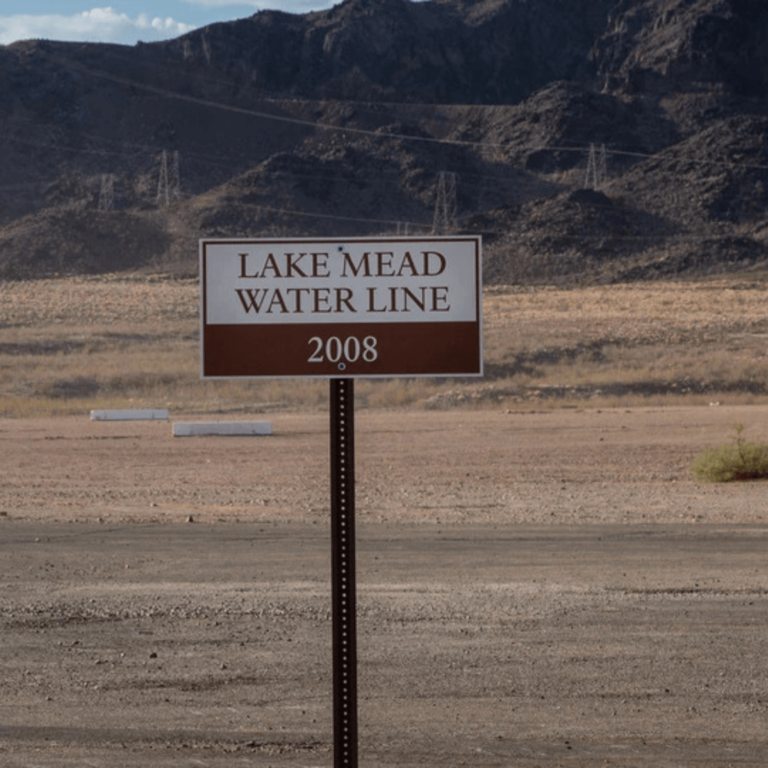
Drying Colorado river: First Climate Change disaster in US
The Colorado river water source for 40 million people across seven states and part of Mexico is rapidly drying out, leaving the two biggest reservoirs in the US thirstier and thirstier, and offering up what may be the first Climate Change impact that the country literally cannot ignore. It’s also one of the rare climate disasters that government officials will be legally required to address if current trends continue. In 2000, Lakes Mead and Powell, the two huge reservoirs along the Colorado, were about 95 per cent full. By the end of this year, Lake Mead is projected to be 27 per cent full, with a water level 45 feet lower than it was only two years ago; for Lake Powell, the number is 22 per cent, and its surface is 70 feet below the same time in 2020. The so-called Millennium Drought, now in its 23rd year, has reduced precipitation and snow runoff into the river and lakes so dramatically that a true water catastrophe now looms for an enormous chunk of the country.
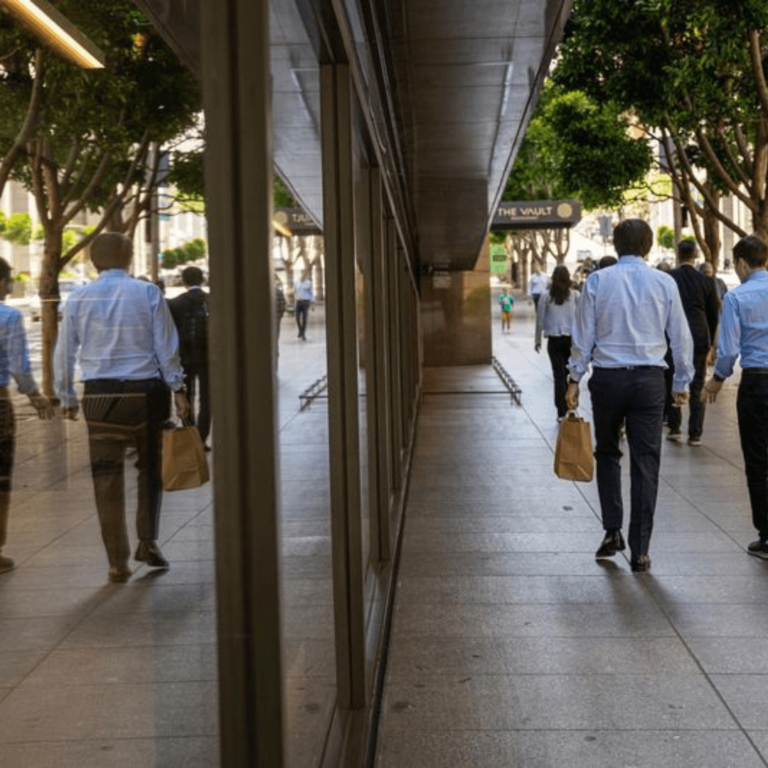
San Francisco lures workers, tourists as tech gloom deepens
San Francisco is embarking on its most ambitious push yet to revive its downtown, with initiatives such as hiring so-called ambassadors to welcome commuters and visitors, along with tapping vacant commercial space and public areas for recurring events, markets and festivals to lure them. The city consistently ranks at or near the bottom of a list of 10 US metro areas for the share of workers back at their offices, data from security company Kastle Systems shows. Every few weeks seem to bring an announcement of a notable firm giving up space, most recently with the city’s biggest private employer, Salesforce Inc., deciding to lease 40% of one of its massive towers. Economists from San Francisco-based Wells Fargo & Co. delivered a particularly dreary message in a report this month, saying the region “appears to be leading the state and nation into recession”. Mayor London Breed has made bringing back workers and tourists one of her key goals, including embarking on a 10-day trip to Europe in March to promote her city.

Climate Change may limit mangrove seeds dispersal
Mangroves are resilient ecosystems that help build coastlines. Their roots are home for fish nurseries while birds nest in their canopies. But they are threatened by different aspects of climate change ranging from sea level rise, storms, warmer temperatures and drought, said Michael Osland, an ecologist at the United States Geological Survey’s Wetland and Aquatic Research Center in Lafayette, Louisiana. A recent study published in the journal Nature found that the density of seawater could change as temperatures rise, precipitation increases and the salinity of ocean water drops. An international group of geographers and biologists found that mangrove propagules will sink more quickly in less dense oceans. That could potentially limit their dispersal over long distances. These findings suggest seawater density may deserve some additional research attention as an important effect of climate change, particularly for species like mangroves that depend on an exact ocean chemistry to survive.

Australia’s ecosystem severely deteriorating: Govt report
Australia’s coastal shores and waters are said to be in “poor condition”, and the land is even worse off. Of the 18 ecosystems deemed at ‘risk of collapse’, 10 are terrestrial. Today, a third of Australia’s original eucalypt woodlands have been cleared, as have nearly half of the nation’s casuarina forests and woodlands. Between 2000 and 2017, over 7.7 million hectares of potential habitat for threatened species was cleared, most of which without scrutiny under the Environment Protection and Biodiversity Conservation Act. This is the report by the Australian government on the state of the nation’s environment, put together by a panel of independent scientists. The overall conclusion of the report is that climate change, habitat loss, invasive species, pollution, and resource extraction have pushed Australia’s environment into a serious and severely deteriorating state. In the past five years, severe coral bleaching events have whitened a third of the Great Barrier Reef, torrential floods have devastated the tropical north, and catastrophic bushfires have collectively burned more than 46 million acres of land (72,000 square miles).
July 15, 2022
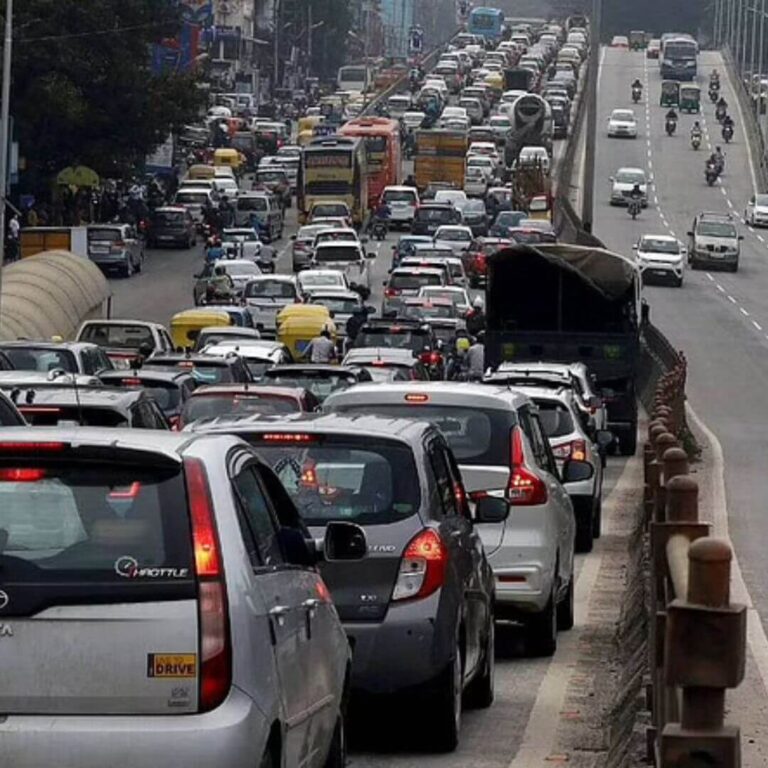
Bengaluru ranked least liveable city in India in global index
The EIU’s Global Liveability Index 2022 analysed living conditions in 173 cities across the world, six of which — New Delhi, Mumbai, Chennai, Bengaluru and Ahmedabad were in India. All five Indian cities were ranked between 140 and 146, which means they fell in the bottom quintile on the index. This is the first time that the index has included Chennai, Bengaluru and Ahmedabad. Earlier reports only featured Delhi and Mumbai among Indian cities. Bengaluru was claimed to be the least liveable among Indian cities by the index. The cities are ranked on the basis of five broad parameters — stability, healthcare, culture and environment, education and infrastructure. Though Bengaluru keeps pace with the other Indian cities when it comes to stability, healthcare, culture and environment and education, it is the city’s infrastructure — or the lack thereof — where it lags behind, according to the report. The infrastructure score is based on seven indicators — quality of roads, public transportation system, international links, energy provision, telecommunications, water and availability of good quality housing.
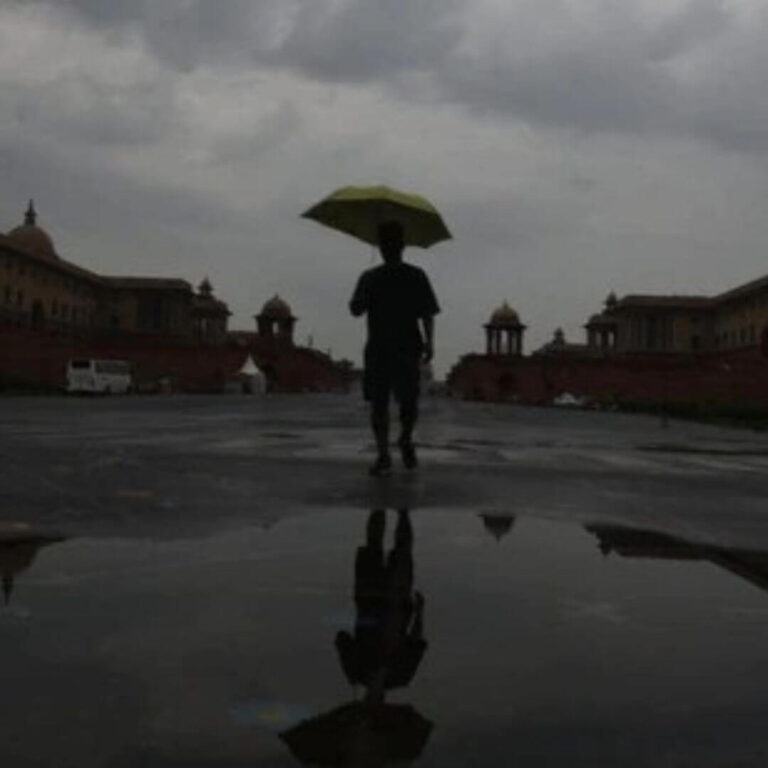
Delhi’s average air, surface temperature above baseline: Study
A study, ‘Urban Heat Stress in major cities of India: Delhi’ found that the Capital’s average air temperature from March to May (considered the pre-monsoon period) this year was 30.03°C, higher than the 30-year baseline (1981-2010) of 28.25°C, while the average land surface temperature was 1.95°C higher than its baseline. At the same time, Delhi’s heat index (also known as the ‘real feel’ of the weather) was 30.53°C, higher than the baseline figure of 28.89°C. The highest surface temperature this year was 51.8°C on May 14 at outer Delhi’s Narela, Bawana, Fatehpur Jat and south-east Delhi’s Badarpur. It also found that surface temperatures in some parts of the city hit a high of 53.9°C in the past eight years. The study also finds a considerable difference between the heat index and air temperature across the city during the pre-monsoon period this year, finding the gap to be as wide as six degrees between neighbourhoods. Chandni Chowk recorded the highest seasonal air temperature, with an average reading of 34.2°C, Aurobindo Marg at 28.1°C was the city’s coolest spot.
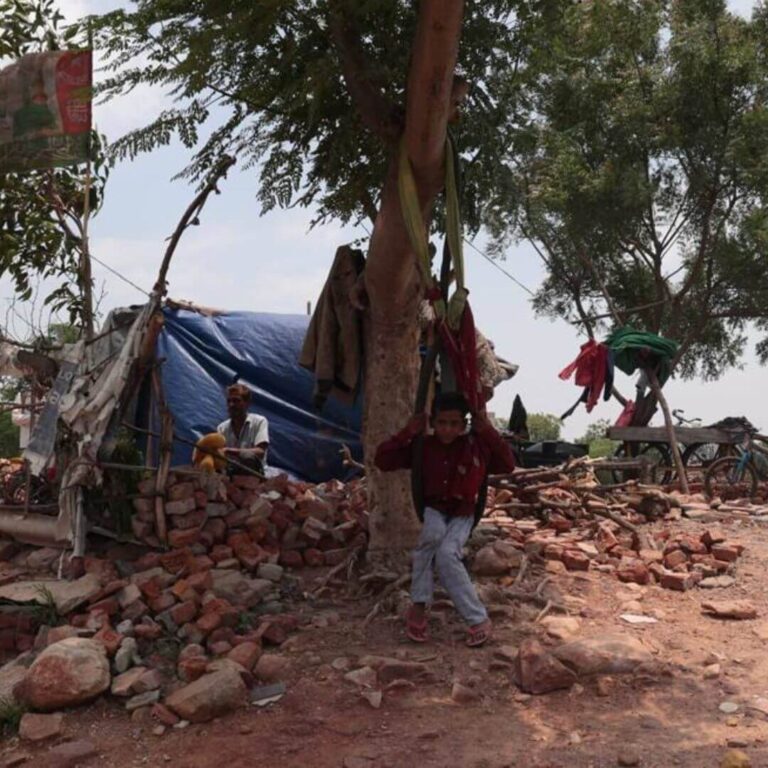
Rehab eludes evicted "encroachers" at Khori Gaon
A year after the eviction drive at Khori Gaon— a colony of “encroached“ settlements in Aravalli forests across Delhi and Haryana, the people continue to stay put in temporary plastic sheds at the basti. On June 7, 2021, the Supreme Court had directed the Municipal Corporation of Faridabad (MCF) to “take all essential measures to remove encroachments on the subject forest land without any exception”, giving the civic body six weeks to complete the task. It had stated that “there could not be compromise or concession on forest land”, and that “land grabbers cannot take refuge in the rule of law” and talk of “fairness”. Demolitions had started at Khori on July 14, 2021, and locals and activists claimed at least 10,000 residential units were razed. The MCF had said those evicted would be rehabilitated as per government policy and given EWS (economically weaker section) flats in Dabua Colony and Bapu Nagar in Faridabad. However, one year on, the civic body has given allotment letters to only 1,009 eligible people and a majority is yet to move into the flats.
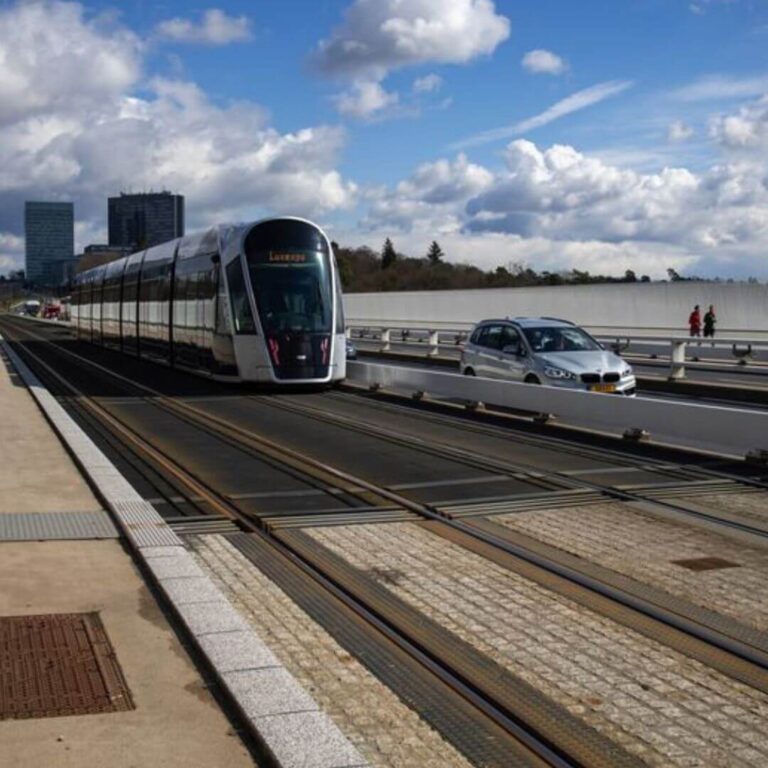
Is Luxembourg’s free public transport a success?
Luxembourg has the highest vehicle density in the European Union, with 696 cars per 1,000 people as of 2020. Almost nine out of 10 households here have a car; one in 10 families have three or more. Low tariffs and taxes gave Luxembourg the cheapest diesel in the EU and the cheapest gas in Western Europe. Traffic often moves at a crawl, while Luxembourg City, charm aside, is a checkerboard of parking lots. With its population set to surpass 690,000 by 2030, Luxembourg risks choking on its automobiles. To curb its driving addiction, this small country is trying an ambitious idea: On February 29, 2020, it became the first nation in the world to make all public transit entirely free, with the exception of (not especially popular) first-class tickets. But, how far is this successful? Even for those in close proximity to Luxembourg City, public transit coverage isn’t sufficient for many residents’ needs, and getting around exclusively via bus or train is an even bigger challenge outside the city centre.
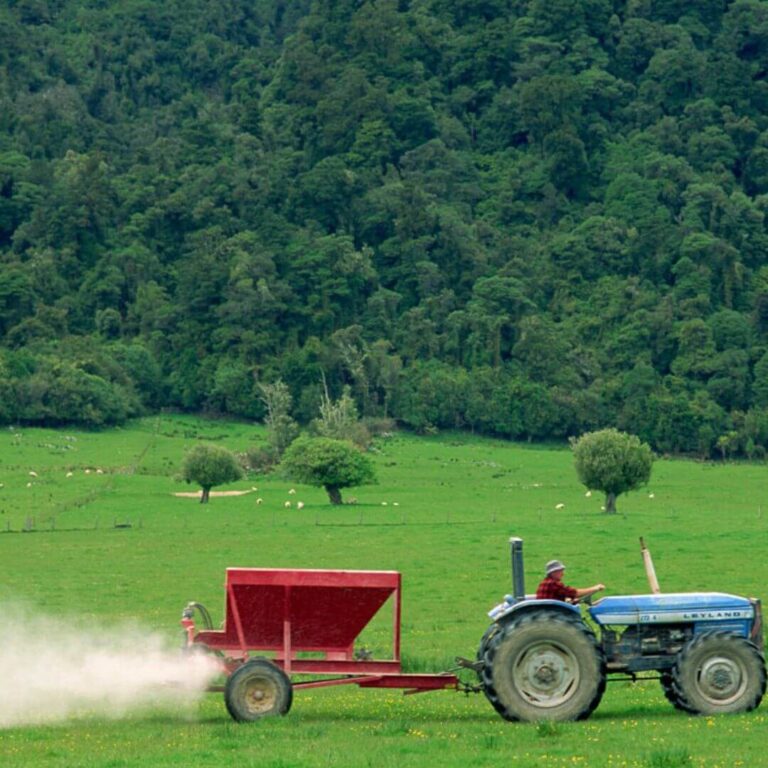
How can we reduce over-reliance on fossil fuel-based fertilisers?
The invention of nitrogen fertilisers has been called “the most important invention of the 20th century”. While fertilisers have allowed food production to expand around the globe, the intensification of agriculture has come at a cost – to the environment, climate and health of humans, animals and soil alike, scientists tell Carbon Brief. The global production of fertilisers is responsible for around 1.4% of annual CO2 emissions, and fertiliser use is a major contributor of non-CO2 greenhouse gas emissions. Scientists and farmers are faced with a new dilemma: how to feed a still-growing population while reducing agriculture’s impact on climate and the environment. Some are trying to end their fertiliser use altogether, while others are looking at how to reduce the amount of nutrients lost by optimising fertiliser application and management. Others are trying to recover lost nutrients from waste, where they can be recycled back into the farm. This piece explores the history of fertiliser use, the climate costs of agricultural industrialisation, and how the world can reduce its over–reliance on synthetic, fossil fuel-based fertilisers.

Passengers warned of heat after London train track fire
Train tracks on a London line near Battersea burst into flames on July 11 as the United Kingdom continues to face heat waves. The London train service was paused after flames engulfed the wooden beams on a track in South London. Network Rail warned passengers to check before they travel, saying that “very hot weather can cause the overhead wires that power electric trains to sag”. Transport for London (TfL) assured commuters that it was taking steps to ensure the Underground could handle the heat. Mark Evers, TfL’s Chief Customer Officer, said: “We have a comprehensive hot weather plan in place to protect the network’s infrastructure and keep services running. “During this hot weather, we advise customers to ensure they have water with them when they travel.” The Mayor of London, Sadiq Khan, commented on the Met Office’s extreme weather urging people to be “careful if travelling at the hottest times of day, and to utilise London’s 4,000 free refill locations, more than 100 new water fountains and our Cool Spaces across the capital”.

Poorer nations deprived of fuel as EU ramps up imports: WSJ
European Union (EU) members are actively buying up liquefied natural gas (LNG) as an alternative to Russian pipeline supplies, depriving poorer countries that cannot compete for the fuel due to high prices, The Wall Street Journal (WSJ) has claimed. According to the publication, the price of LNG has skyrocketed 1,900% from its low two years ago. Current prices are equivalent to buying oil at $230 a barrel, while LNG normally trades at a discount to oil. Developing countries cannot compete with Europe for the supplies at such prices of about $40 per million British thermal units (MMBtu). According to Wood Mackenzie data, cited by the Journal, European nations have ramped up their LNG imports by almost 50% year-to-date through June 19. At the same time, India’s imports during that period decreased by 16%, China slashed purchases by 21%, and Pakistan by 15%. In some cases, cargoes that were destined for poorer countries are diverted to Europe. Experts note that it’s profitable even if suppliers are forced to pay penalties under contracts with developing countries.

Vendors in Mexico forced to erase colourful art, citizens upset
Mexico’s iconic central neighbourhoods have been stripped off its colour. In April, the city’s Cuauhtemoc borough ordered the colourful signs taken off of 1,493 street food stands, replacing them all with the same pattern of white paint and a blue-grey stripe, a large sticker or stencil with the local government’s logo, and a new slogan: “Cuauhtemoc Borough is Your Home”. Mexico City Mayor Claudia Sheinbaum, an unofficial presidential candidate for the ruling Morena party, has said that there is no legal basis for forcing vendors to erase their own art and incorporate the Cuauhtemoc logo. “It is part of our culture and it is absolutely authoritarian to want to impose a single message from a borough government amid the city’s historical popular urban culture,” Sheinbaum said at a press conference on May 20. The borough’s mayor, Sandra Cuevas, says she held meetings with owners of street stands before making the decision to paint over their signs. Activists say those meetings fell short of a formal public consultation. A complaint has been filed with the Mexico City Human Rights Commission.
July 1, 2022
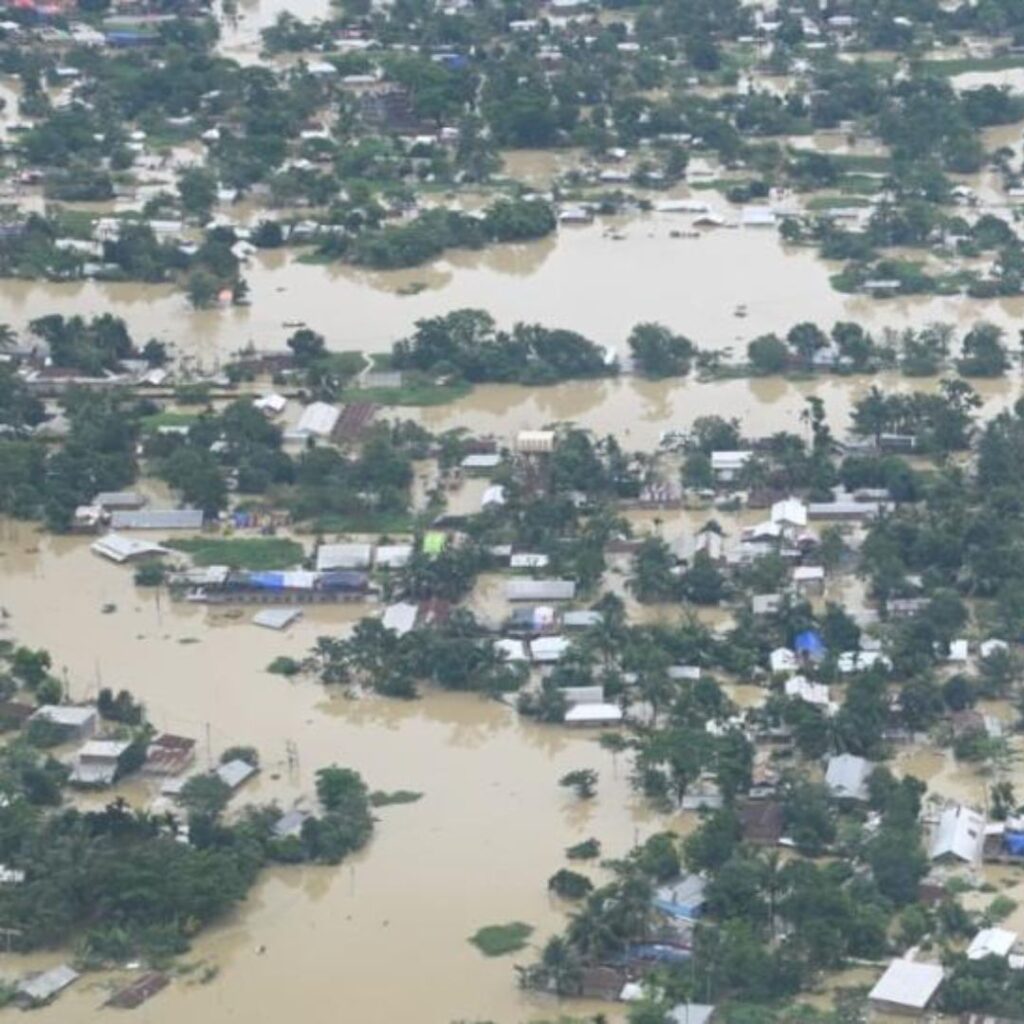
Assam’s drought changed to floods in a week
It took just a week for the situation in Assam to change from drought to deluge, a classic case of how Climate Change is exacerbating extreme weather events. Down To Earth analysed the data compiled by the Indian Institute of Technology, Gandhinagar’s drought monitoring service. It found that till June 14, 2022, nine districts — Karbi Anglong, Morigaon, Darrang, Golaghat, Jorhat, Tinsukia, Barpeta, Nalbari and Kamrup — were reeling under drought-like conditions. But, within a week’s time, the situation on the ground took a 360-degree turn. By June 21, Assam had recorded 83 per cent above average rainfall which comes under the large excess category, according to the Indian Meteorological Division. It was this incessant spell of rain in June that triggered the flooding of Brahmaputra and other tributaries. The Union Ministry of Science and Technology has stated that Assam is the most climate-vulnerable state in India, with 11 of the country’s 16 most climate vulnerable districts being located in it. But poor flood management is also responsible for the June flooding that the state is experiencing.

Five Indian cities most expensive for foreign employees
Mumbai is the most expensive city in India for foreign employees, according to the cost of living ranking by Mercer. The rankings by the international management consultancy are a way for global expats to assess living costs in cities that they may be required to move to, they also help employees and employers around the world with extensive and current data in unpredictable global markets to work out compensation strategies for expats. The rankings measure the comparative cost of living in cities around the world based on 200 items including housing, transport, food, clothing, and entertainment to devise the rankings of cities. In the rankings for 2022, Mumbai is placed at number 127 making it the most expensive city in India and New Delhi is a tad cheaper at number 155. Chennai (177), Bengaluru (178), and Hyderabad (192) bring up the others in India’s five, all considerably cheaper than Mumbai. Pune and Kolkata are the least expensive for global employees. Other Asian cities which are in the ranking include Singapore, Tokyo, and Beijing but the three are expectedly high up in the list taking the 8th, 9th and 10th spots and making them the most expensive cities in Asia to live in. The high rankings for these were driven by inflation and strong currencies, Mercer clarified in the ranking report.
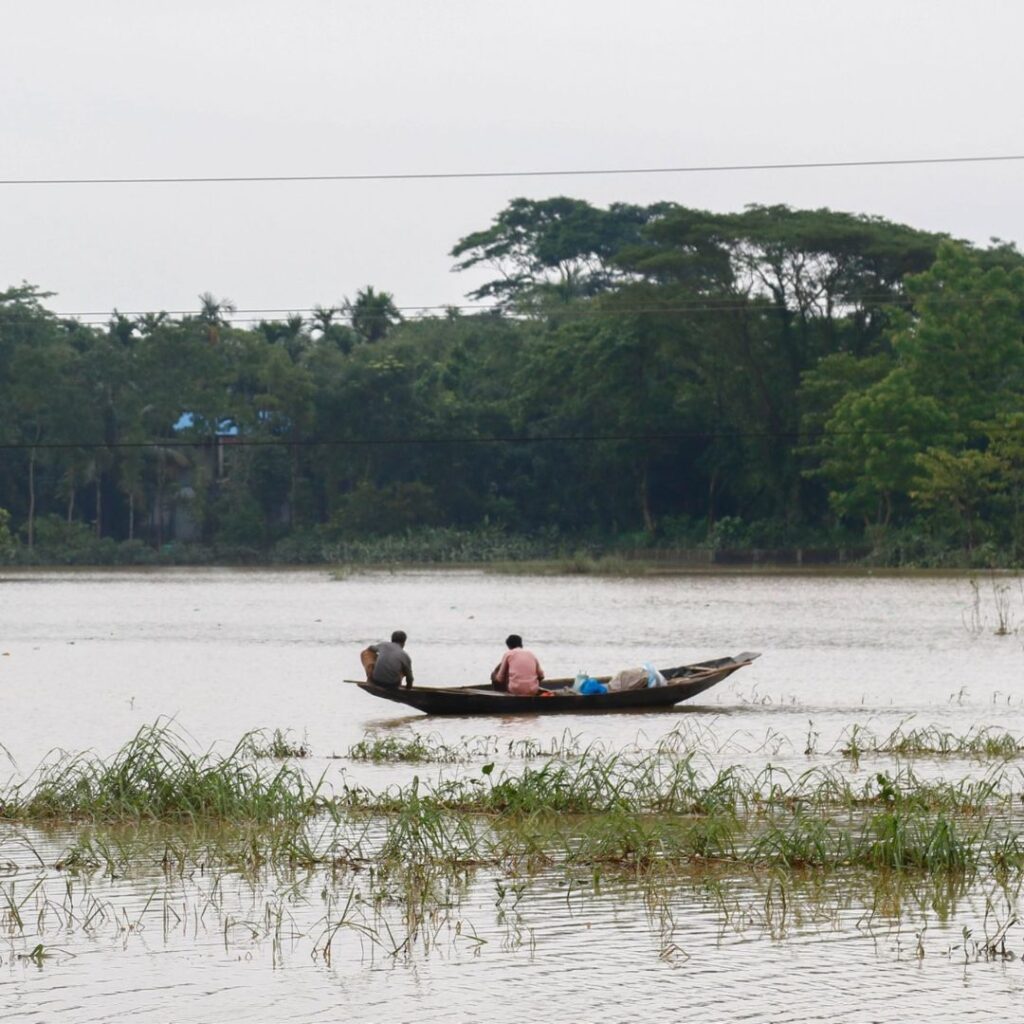
Climate Migration pushes Dhaka to the brink
Thousands of people from the coastal areas of Bangladesh are pouring into the country’s capital and megacity Dhaka every day to escape harsh weather events such as flooding due to Climate Change. The Dhaka Mayor’s Migration Council estimated that 2,000 people are moving to Dhaka every day but they are hardly safe in the city either. Climate Change has led to mass migration in many parts of the world, but Bangladesh is a unique case. Its low sea level, high population density and inadequate infrastructure make people in the country, and the over-crowded Dhaka, particularly vulnerable. Torrential monsoon rains in the last few weeks killed at least 60 people, submerged many villages and inundated major rivers, according to reports. Bangladesh has a population of 168 million and is beset by over 10 million climate refugees. With a couple of thousands making Dhaka their home every day, infrastructure has been stretched and slums have mushroomed in the city on low-lying areas making the migrants vulnerable all over again.
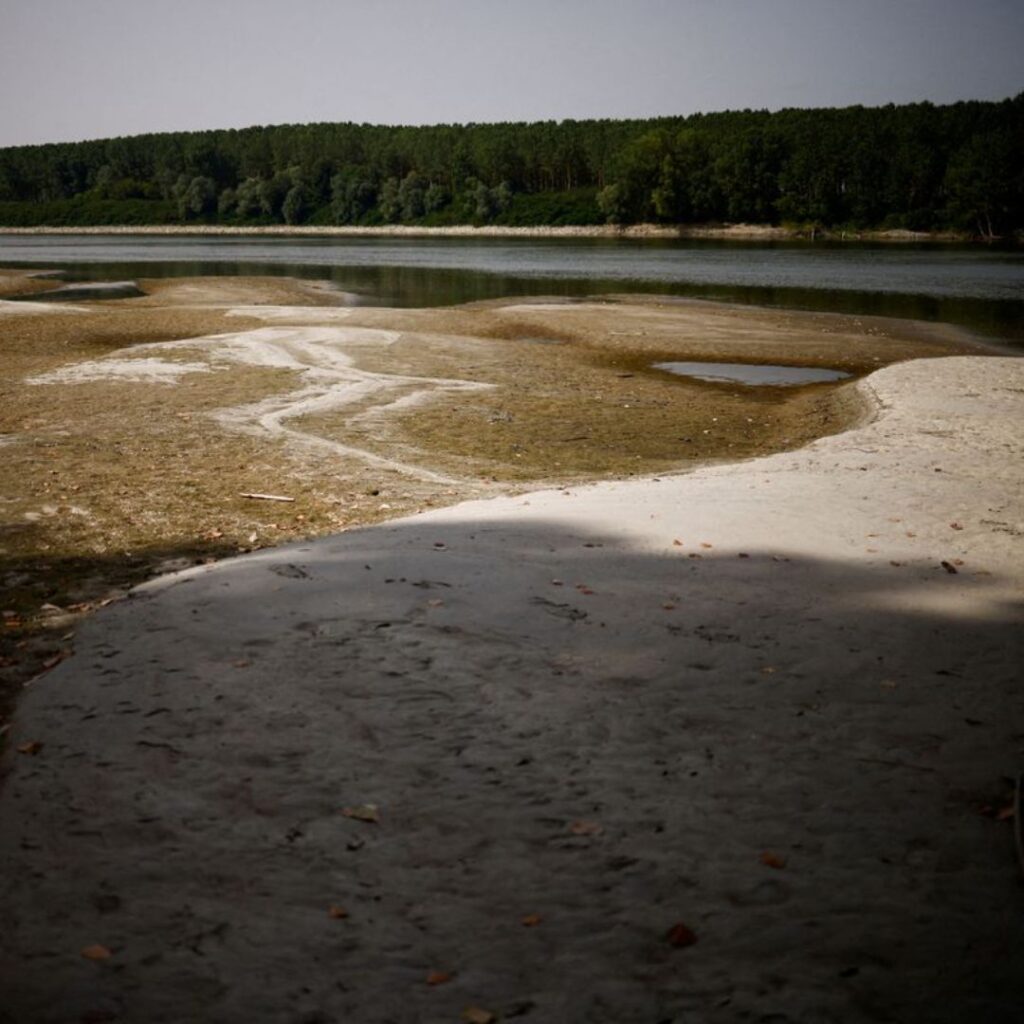
Italy’s longest river, Po, dries up
The rising temperatures and heat waves have dried Italy’s longest river, Po. The river, which crosses the major northern regions and accounts for around a third of the country’s agricultural production, is experiencing its worst drought in 70 years. “A combination of the worst drought in recent years and temperatures … touching 40 Celsius (104 Fahrenheit) at the end of June, are leading Italy towards a dramatic environmental and economic situation,” the ANBI irrigation body said. The Lazio region centred on Rome declared a state of emergency, imposing restrictions in some communities, including bans on hosepipe usage and filling swimming pools. A project funded by the European Space Agency said on Thursday that weeks of hot weather had raised the surface temperature of the Mediterranean by about 4C above the 1985-2005 average. “Understanding what exactly is happening to the current climate is increasingly important because the changes are starting to have a concrete impact on everyday life,” said Gianmaria Sannino, head of the ENEA Climate Modelling which took part in the project.
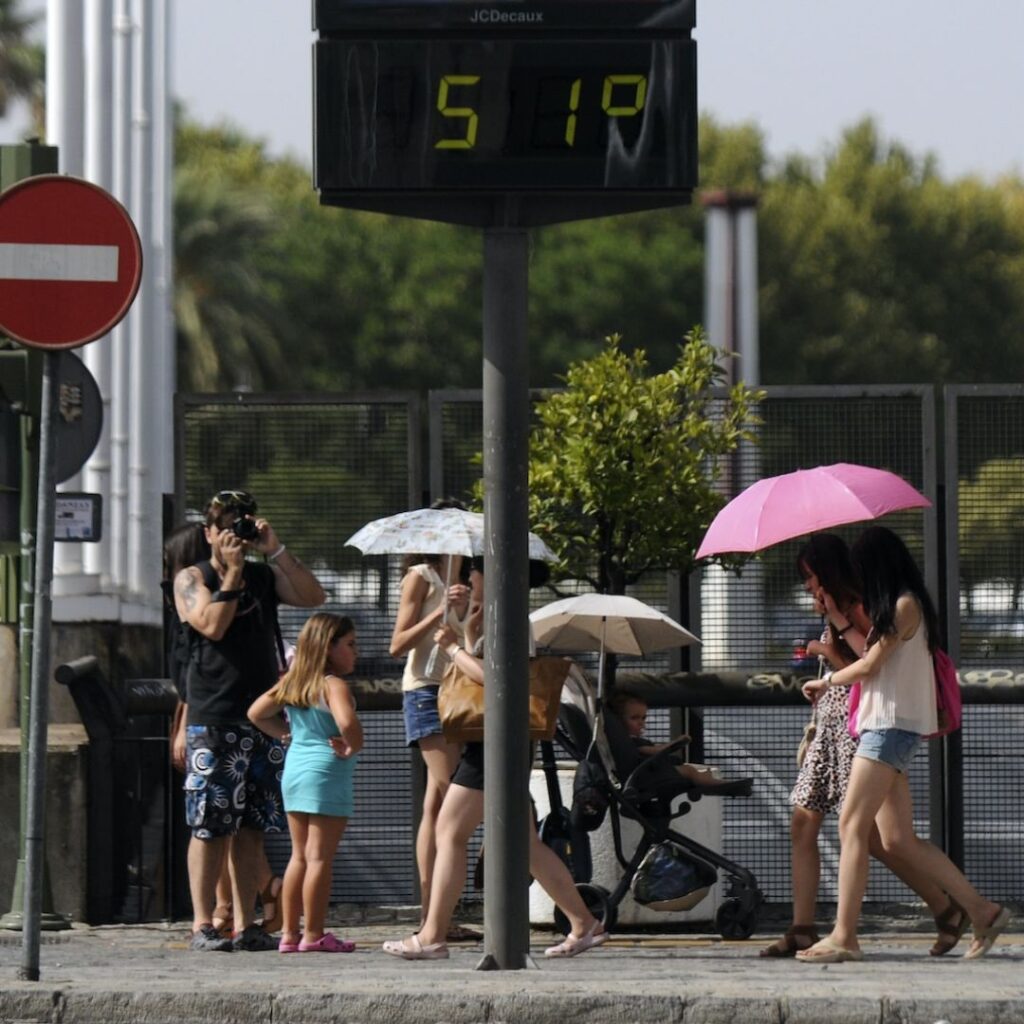
Spain’s Seville to name, rank heat waves
Seville in Spain became the first city in the world to introduce a naming and ranking system for periods of high heat. Seville is located in Andalusia, which is already one of the hottest regions in Spain. However, the climate crisis is making heat waves around the globe more frequent and severe “We are the first city in the world to take a step that will help us plan and take measures when this type of meteorological event happens — particularly because heat waves always hit the most vulnerable,” Seville Mayor Antonio Muñoz said in a press release. “The city government ratifies its commitment in the fight against climate change through the reduction of emissions and decarbonization, and second, through adaptation — to make Seville a resilient city with a model that truly tackles the big challenge of rising heat.” Heat waves will be assigned a severity category from one to three — with three being the most severe — based on a combination of temperature, humidity and conditions in the 30 days before the heat wave.
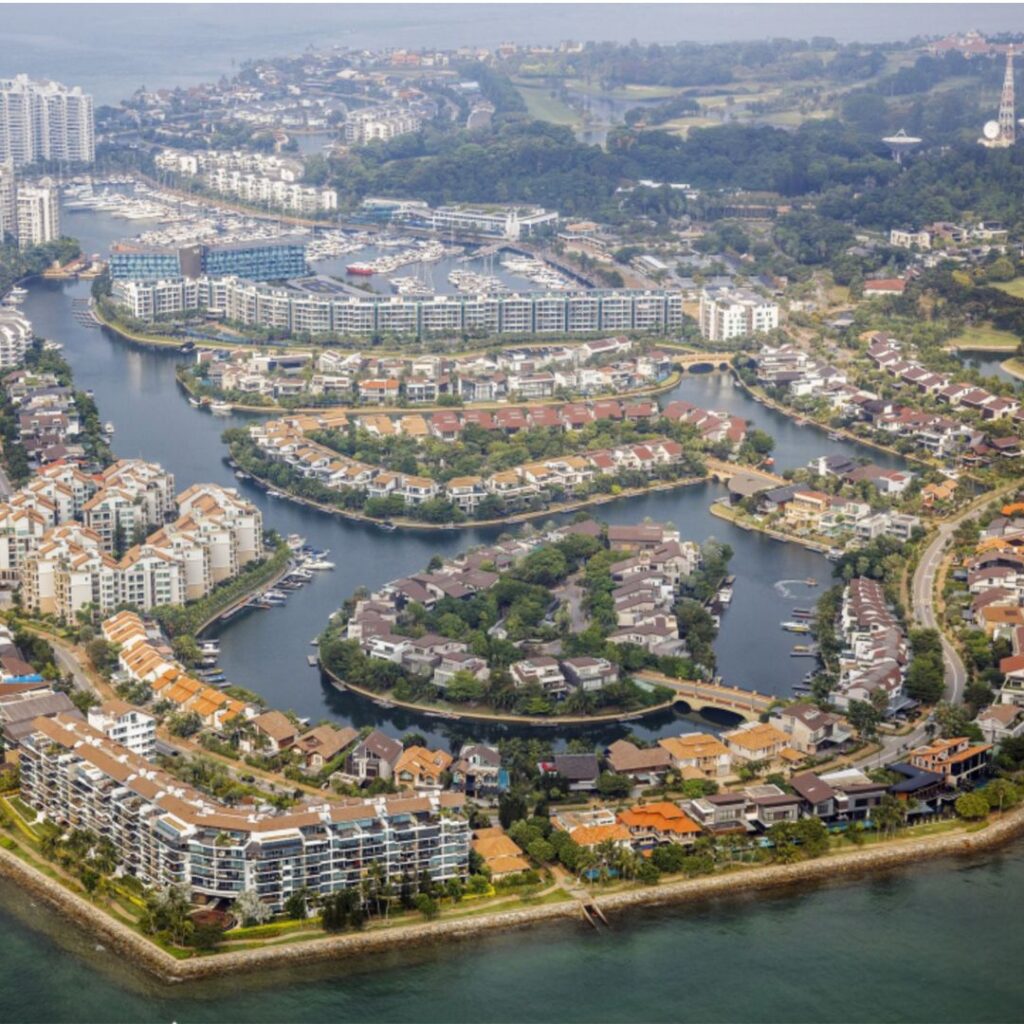
Singapore’s rents soar, worry expats
Singapore is seeing skyrocketing rents and some of the expats are being asked to pay 40 per cent more. The rising rents are part of a list of concerns for Singapore’s expats, which also include difficulties finding places for their kids in international schools, and rising prices for tuition due to inflation. Packages for expats are getting smaller, and the government has tightened its criteria for worker visas as it seeks to ensure citizens get more higher-paying jobs. The number of expatriate white-collar workers fell to the lowest in more than a decade last year, according to the Ministry of Manpower, partly as a result of travel restrictions from the pandemic. The red-hot market is giving rise to rental scams, where people posing as agents use fake online listings to lure deposits from unsuspecting home hunters. Singapore isn’t unique in seeing rising rents. They’re also surging in London and Dubai. In New York’s Manhattan, median asking prices jumped 36.9% in the first quarter from a year earlier, according to property portal StreetEasy.
June 17, 2022

Heat waves impact Punjab’s wheat yield this year
Punjab registered the lowest wheat harvest this year in two decades — at 43 quintals per hectare — due to the prevailing heat wave. Sarup Singh Sidhu, general secretary of the Bhartiya Kisan Union (Bathinda chapter), a farmer’s organisation, told Mongabay-India, that since mid-March this year, nine farmers in Bathinda and seven farmers in Mansa had died by suicide. He attributed these deaths to the stressful situation arising from the low wheat output. Climate Change increases the likelihood and intensity of heatwaves, which in turn impact the agricultural sector as is seen in the case of Punjab. Pavneet Kaur Kingra, head of the Department of Climate Change and Agricultural Meteorology, Punjab Agricultural University, said this has been the hottest March in Punjab since 1970. He attributes it to global warming and climate change impacts. “The heatwaves in March had a considerable impact on wheat yield and growth…,” said Rajesh Kumar Sharma, the senior researcher at the Indian Institute of Wheat and Barley Research.
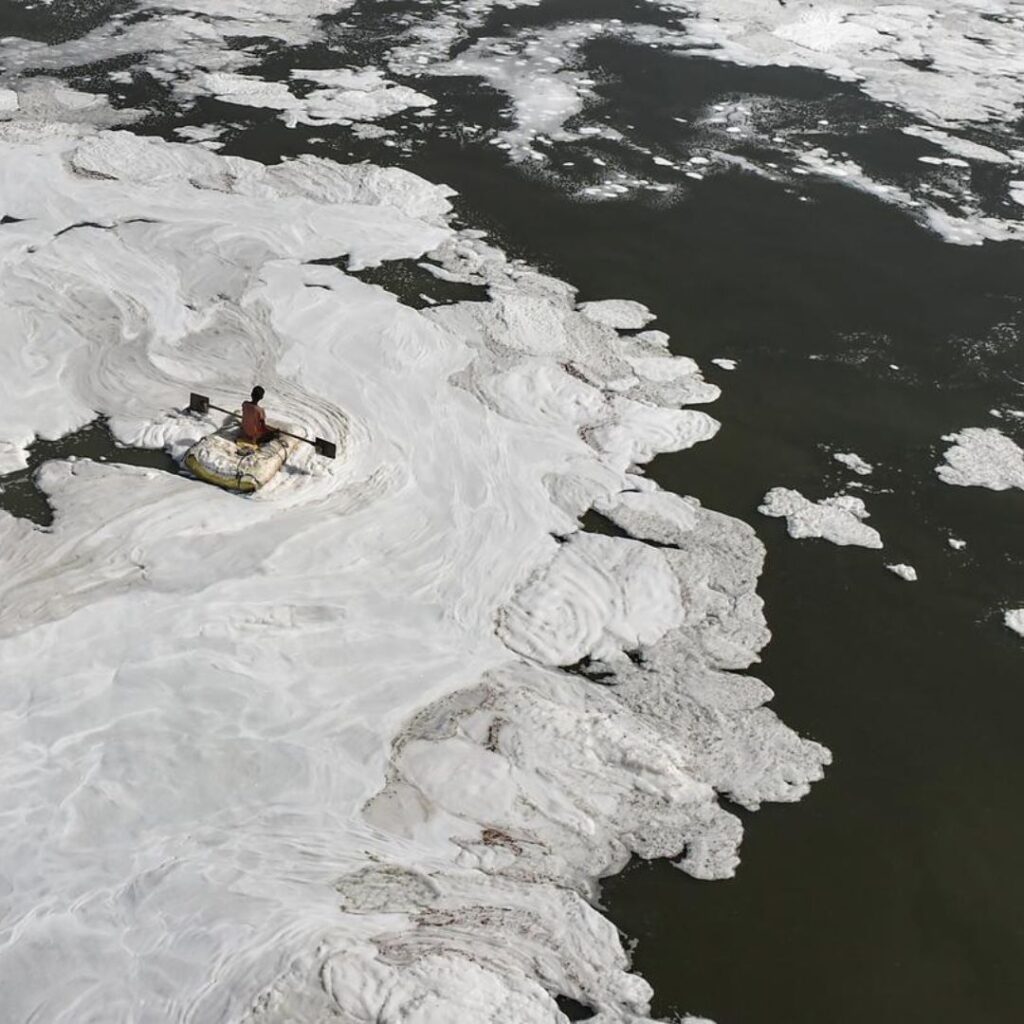
India last among 180 countries in environmental report
India has been ranked last in a list of 180 countries that were judged for their environmental performances in the 2022 Environmental Performance Index (EPI). The list is headed by Denmark, the world’s most sustainable country. The EPI 2022 report says: “Based on the latest scientific insights and environmental data, India ranks at the bottom of all countries in the 2022 EPI, with low scores across a range of critical issues.” Over the past 10 years, India has been slipping on many parameters, especially on climate-related ones. At a time when others are backing down from coal use, India has increased the use and dependence on black carbon. India’s response to Climate Change is sluggish. The government, instead of strengthening the existing environmental laws and creating new laws, is bent on erasing the existing ones. Environmental laws such as the Coastal Regulation Zone, the Wildlife Act, and laws pertaining to mining in forests are under threat. The government leans more towards facilitating industry than towards sustaining the environment.

Extreme weather pushes up dengue cases in Singapore
Singapore recorded more than 11,000 dengue cases in May, a month before the peak dengue season began. Experts warn that Climate Change might lead to the same situation in the rest of the world. Experts say the outbreak in Singapore has been made worse by recent extreme weather that brought prolonged hot weather spells and thundery showers. This weather condition spreads both the mosquitoes and the virus they carry, not only in Singapore but across the world. Ruklanthi de Alwis, a senior research fellow at the Duke-NUS Medical School and an expert in emerging infectious diseases, said that Singapore’s dengue surge is the result of several factors including the recent warm, wet weather as well as a new dominant virus strain. He added that Climate Change will most likely make things worse, referencing predictive modeling studies that show global warming will eventually expand the geographical areas in which mosquitoes thrive due to Climate Change. Winston Chow, a climate scientist from the College of Integrative Studies at Singapore Management University, said that dengue cannot be eradicated because the constant weather extremes create the perfect breeding conditions for mosquitoes.

Heat waves sear Spain, southern France
Spain and southern France are reeling under the second extreme heat event of the year, with temperatures hitting highs not normally recorded until July or August. Experts said summer heatwaves are happening earlier and more often. The French state forecaster, Météo France, said temperatures had already exceeded 35 degrees Celsius close to the Mediterranean and would rise further from midweek as the hot air mass moved northwards, with parts of the south-west and Rhone valley reaching 39C. Forecaster Patrick Galois said such events “very rarely” occurred in June and then only at the end of the month. Previous extreme temperature episodes in June, such as in 2005 and 2017, had not begun to develop before at least the 18th of the month, he said. A spokesperson for Aemet, the state meteorological office, said that the latest episode was the third-earliest on record and the first to arrive this early since 1981. Almost the whole of Portugal had been classified as being in “severe drought” by the end of May, according to the national weather service IPMA.

Fish ear bones help understand Climate Change
Fish ear bones (otoliths) are becoming increasingly important in reconstructing the past climate and understanding climate sensitivity to seasonal variations. Researchers in India are tapping into otoliths from live-caught fish and dead fish in fossil records to mine and analyse a wealth of growth data that advances paleoclimate science and can be plugged into climate models. Combined with other sources of data, otolith-based data also informs current practices in fisheries and their management amid human-caused pressures. The isotopes of oxygen in the otoliths depend on the temperature of the water in which the fish grew and record continuous snapshots of past temperatures during the lifetime of the fish for years. In a 2019 paper, archaeo-zoologist Arati Deshpande Mukherjee and colleagues at IIT Kharagpur and Physical Research Laboratory, Ahmedabad, write about climate evidence coming from high-resolution oxygen isotopes in snail shells Terebralia palustris which typically grow in mangroves and were a source of food for the Dholavirans. They linked the decline of Harappan city Dholavira to the disappearance of a Himalayan snow-fed river which once flowed in the Rann of Kutch.
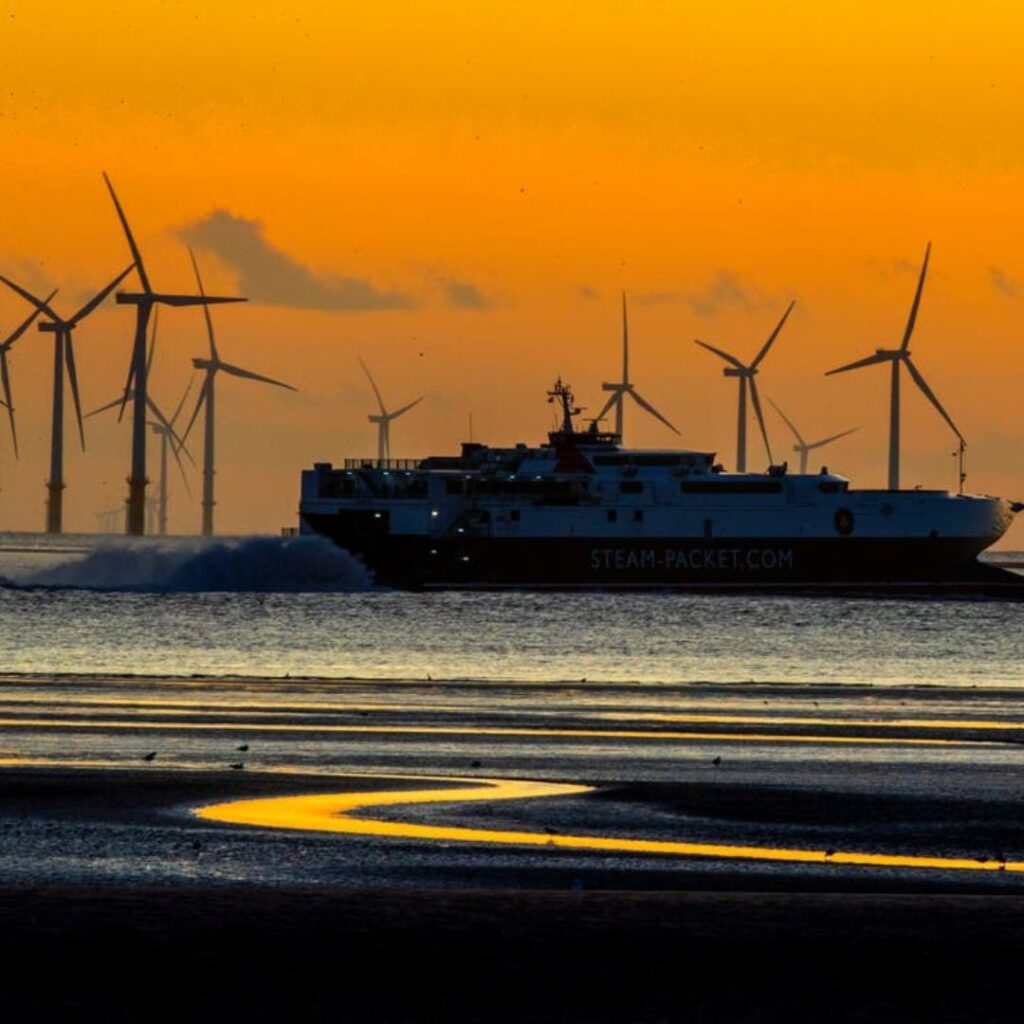
‘UK govt’s net-zero strategy unlawful’
Three environmental and legal groups took the United Kingdom (UK) government to court on June 8, arguing that its net-zero strategy is “irresponsible” and “unlawful”. Friends of the Earth, environmental law charity ClientEarth, and legal campaign group the Good Law Project all claim that the government’s plans are in breach of climate law as they omit vital details and “completely fail” to show how targets would be met. They said the government was aware the policies did not add up to the reductions necessary to meet one of the key emission targets but did not make this clear. The sixth carbon budget covers the period 2033 to 2037, during which time the UK will be able to emit 965 million tonnes of greenhouse gases. It is the first time the government has faced a legal challenge to its net-zero strategy, which was formally published in October last year. The government has insisted the strategy complies with its legal obligations and has been endorsed by the independent Climate Change Committee.

Climate Change: US, Europe refuse to pay poorer nations
The United States and the European Union have turned down the demand by developing nations to compensate them to deal with the impacts of Climate Change. The developing nations say they have been suffering the effects more than richer nations and have less financial capacity to cope. Two weeks of climate talks in Germany’s Bonn have ended in acrimony between rich and poor countries over cash for climate damage. Developing countries say they are reeling from Climate Change caused by richer countries’ emissions over hundreds of years. They say that Europe and the US have a responsibility now to compensate them for this. The US and Europe did not agree on the grounds that if they pay for historic emissions, it could put their countries on the hook for billions of dollars for decades or even centuries to come. But despite two weeks of discussions, they have been unable to get the issue of a funding facility on the agenda for the COP27 conference in Sharm El-Sheikh, Egypt, in November.
June 3, 2022
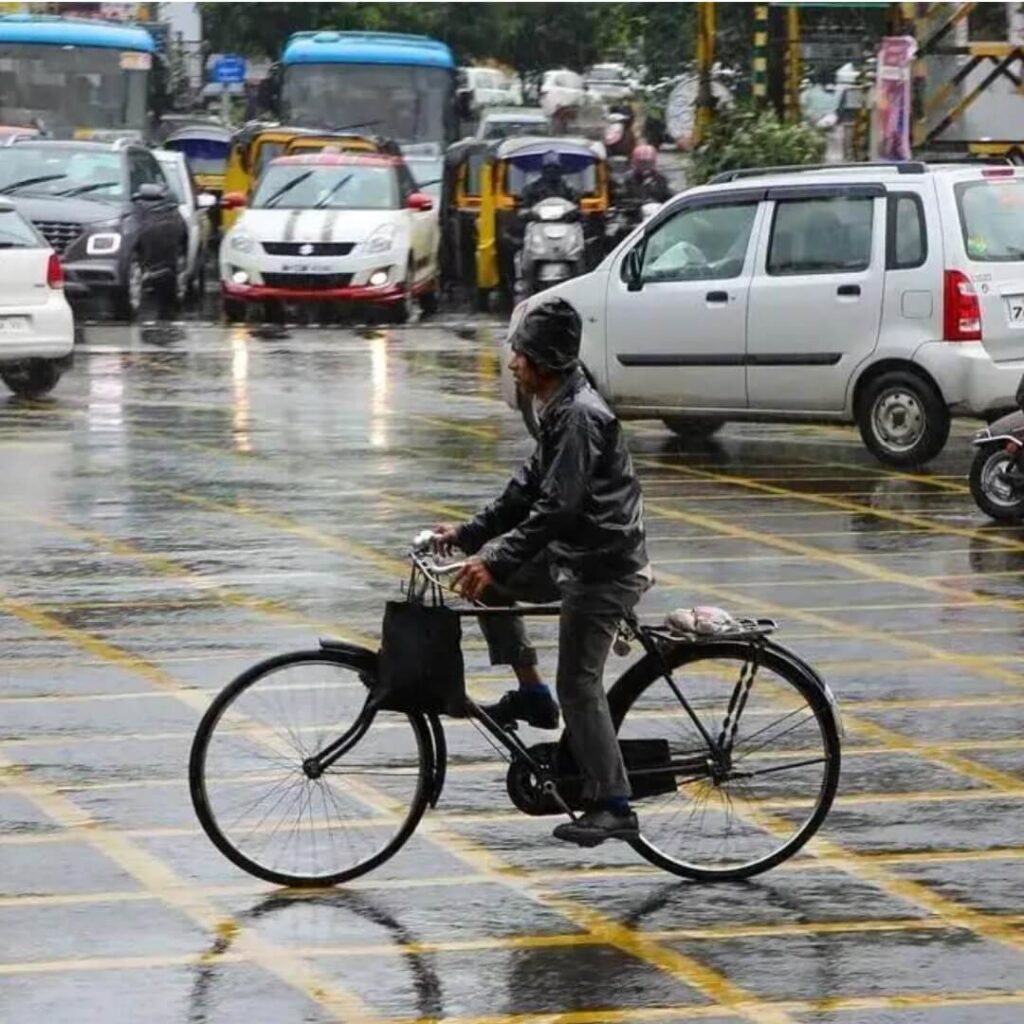
IMD forecasts normal rainfall over northwest India
The rainfall over northwest India this monsoon season is likely to be ‘normal’, according to the long range forecast issued by the India Meteorological Department (IMD). ‘Normal’ rainfall for the northwest region would be 92 per cent to 108 per cent of the long period average (LPA), which is 587.6 mm for the region for the season. For the month of June as well, normal or above normal rainfall is expected over many parts of northwest and central India. “Heat wave conditions are not so likely…only Jammu and Kashmir, Ladakh, Himachal Pradesh and some parts of Uttarakhand may have the probability of above normal (maximum) temperature. The main heat core zone, extending from Gujarat and Rajasthan to Odisha, will have below normal maximum temperature probability,” said Mrutyunjay Mohapatra, Director General, IMD. From March 1 to May 30, northwest India as a whole recorded a 64 per cent deficit in rainfall. In May, Himachal Pradesh, Jammu and Kashmir and Ladakh recorded deficit rainfall, Punjab registered normal rainfall, and the Haryana-Chandigarh-Delhi sub-division recorded a large excess rainfall.

Gender gap worsens in low, middle-income nations
The ninth edition of the International Labour Organization (ILO) Monitor on the ‘World of Work’ found the gender gap in low- and middle- income countries remains larger than the pre-pandemic level despite some progress. India and lower-middle-income countries experienced a deterioration of the gender gap in the second quarter of 2020. “The ILO report suggests that the purchasing capacity of the workers should be improved,” said Bharatiya Mazdoor Sangh (BMS) general secretary Binoy Kumar Sinha in this story. The ILO report says that after significant gains made during the last quarter of 2021, the number of hours worked globally dropped in the first quarter of 2022, to 3.8 per cent below the pre-crisis benchmark (fourth quarter of 2019). This means that about 11.2 crore jobs might have been lost between this period. Multiple economic crises including inflation, especially in energy and food prices, financial turbulence, potential debt distress, and global supply chain disruption, exacerbated by war in Ukraine may further deteriorate the number of hours worked in 2022, the report said.

BRT system in Peshawar helps women travel safely
The bus rapid transit (BRT), launched in 2020 in Peshawar, has proved hugely popular among women in the ultra-conservative city, where burqas and veils are standard female dress. Ninety per cent of women reported felt unsafe using public transport in a 2016 survey. With frequent buses, dedicated lanes, subway-like stations, and improved connectivity across the city, the BRT has made travel cheap, and quick, as well as safer. A quarter of the seats are reserved for women on the fleet of diesel-electric hybrid buses, which are equipped with CCTV cameras, guards and have well-lit stations, making women passengers feel more at ease. About 15 per cent of the BRT’s 2,000 employees are female, too, said M Umair Khan, spokesman for TransPeshawar, the government-owned company that operates the BRT. He said such changes helped explain why women now account for about 30 per cent of bus travellers in the city, up from just 2 per cent two years ago. The maximum fare is about 30 Pakistani rupees, making the service especially popular among women from low-income households.
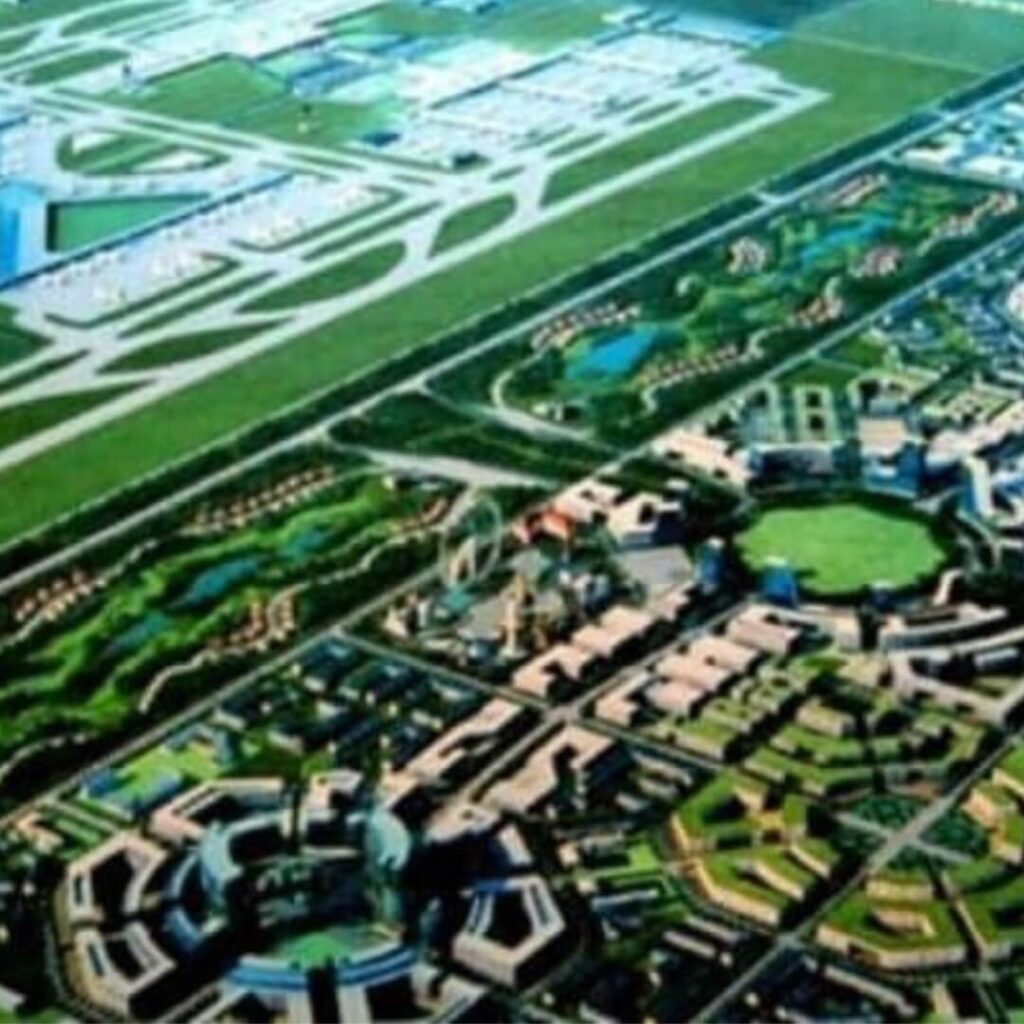
Nepal’s apex court scraps airport plan, saves trees
Nepal’s Supreme Court has ordered the government to not build the $3.45-billion Nijgadh International Airport, reports Mongabay. The project ran into a controversy since it was first planned in the 1990s because it involved the cutting of the last remaining patch of dense forests in Nepal’s eastern plains. A total of 2.4 million trees, both big and small, would have had to be cut to construct the two-runway airport. Campaigner Shristi Singh Shrestha said, “The major concern with the project was not just about the number of trees, but also about the encroachment of key corridors used by wild elephants. The other issue is about the groundwater stresses associated with such massive deforestation.” Nepal has only one airport in its capital, Kathmandu. Although two new regional international airports have been built in Pokhara and Bhairahawa, they cannot accommodate big aircraft or handle heavy traffic. The court annulled the government’s decision to build the international airport in Nijgadh and ordered it to seek an alternative site that meets legal and environmental requirements, said Supreme Court spokesperson Bimal Paudel.

Shanghai COVID lockdown eases, with conditions
After a two-month lockdown, Shanghai began to come back to life as COVID cases dropped and restrictions were lifted. At least 650,000 residents are still confined to their homes which remain classified as “sealed off” or “closed off” zones but basic public transport service resumed, shops opened with larger ones operating at 75 per cent capacity, and restaurants were permitted to serve but dining in was not allowed. Cinemas, museums and gyms remain closed. And most children will not return to school. Those who wish to move around the city on public transport or go to the bank, a restaurant or a market will be required to show a negative PCR test result, no older than 72 hours. Any resident travelling to another city in China faces quarantine of between 7-14 days on their return. For now, it’s easier to fly out of Shanghai to foreign locations than it is to go an hour down the rails on a high-speed train to Hangzhou. China’s overall policy of “dynamic zero Covid” remains firmly in place.

Travel seamless in London crossrail
On May 24, London launched the biggest extension of its public transport system, the Elizabeth Line. The £18.9 billion link aims at improving the city’s public transport, cutting down travel time and making the city more accessible, reports Bloomberg CityLab. By extending the transport system to areas that were previously much slower to access and creating new central hubs for transfers to the Tube, the line could also reshape the way people navigate the city. With the Elizabeth Line connecting outer suburbs directly to a string of new stations in central London, many of those commuters should be able to go straight from their home stations to one within easy walking distance of their offices, without needing to transfer to the Tube. The Elizabeth Line by contrast, will provide step-free access that could open up many routes into central London for people with disabilities. The 10 new stations in the central section of the line—as well as Heathrow— will have level access from platform to trains, and step-free access from street to train at nearly all other stations.
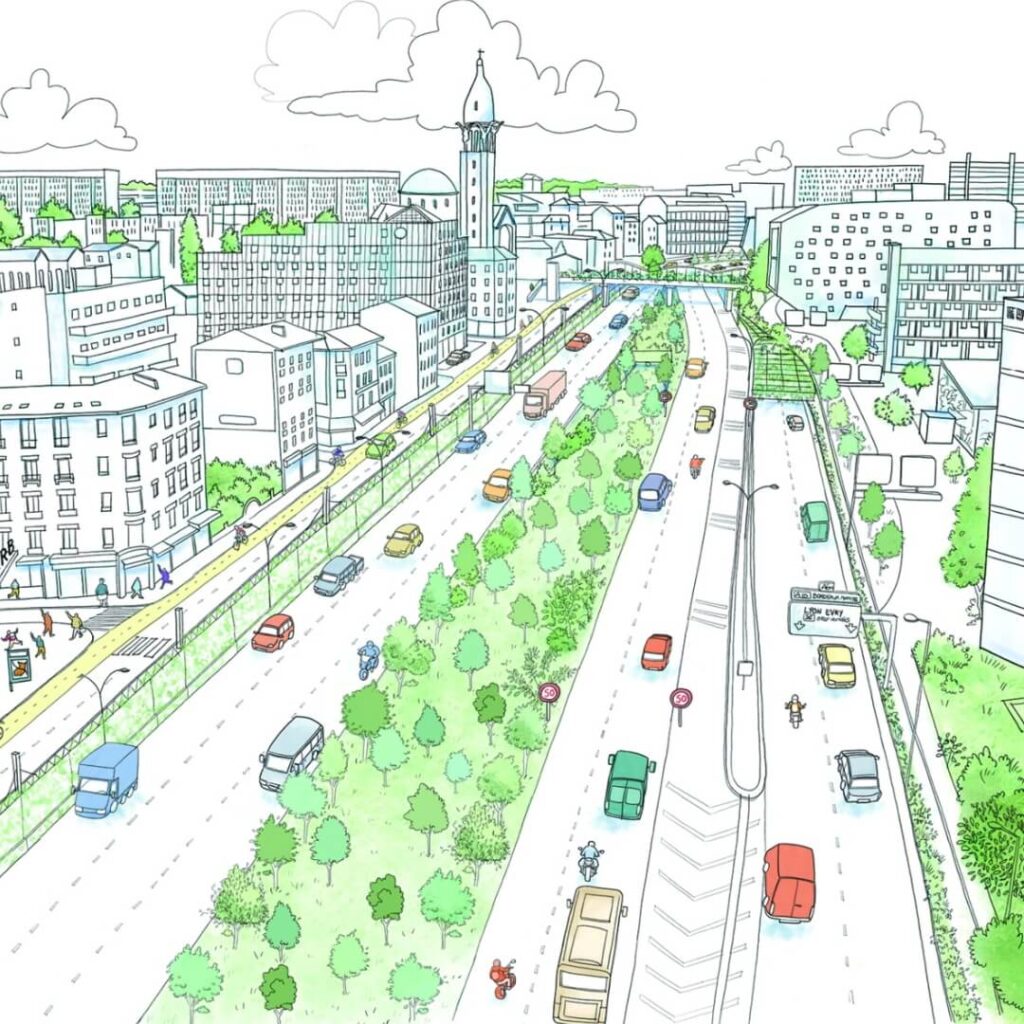
Paris to shut two beltway lanes after 2024 Games
After the 2024 Olympic Games end, Paris plans to close two lanes of the Boulevard Périphérique, a beltway that has long been notorious for its congestion and pollution. It aims to reduce air and noise pollution by transforming the highway from a “grey belt to a green belt”. The highway would shrink to three fully accessible lanes in each direction, from a current norm of four. Ten hectares or 25 acres of the beltway would be planted with trees as part of a process that would ultimately extend the entire beltway’s length. The city has also floated the idea — without fully committing to it — of closing the newly restricted lanes entirely by 2030, to create more space for greenery or bike lanes. These new proposals will add to renovations already underway at nine major junctions connecting the beltway to inner Paris to create a road that is greener, cleaner and easier to cross. The changes are necessary because the current volume of pollution and the number of people exposed to it are unacceptable, said Paris Mayor Anne Hidalgo.
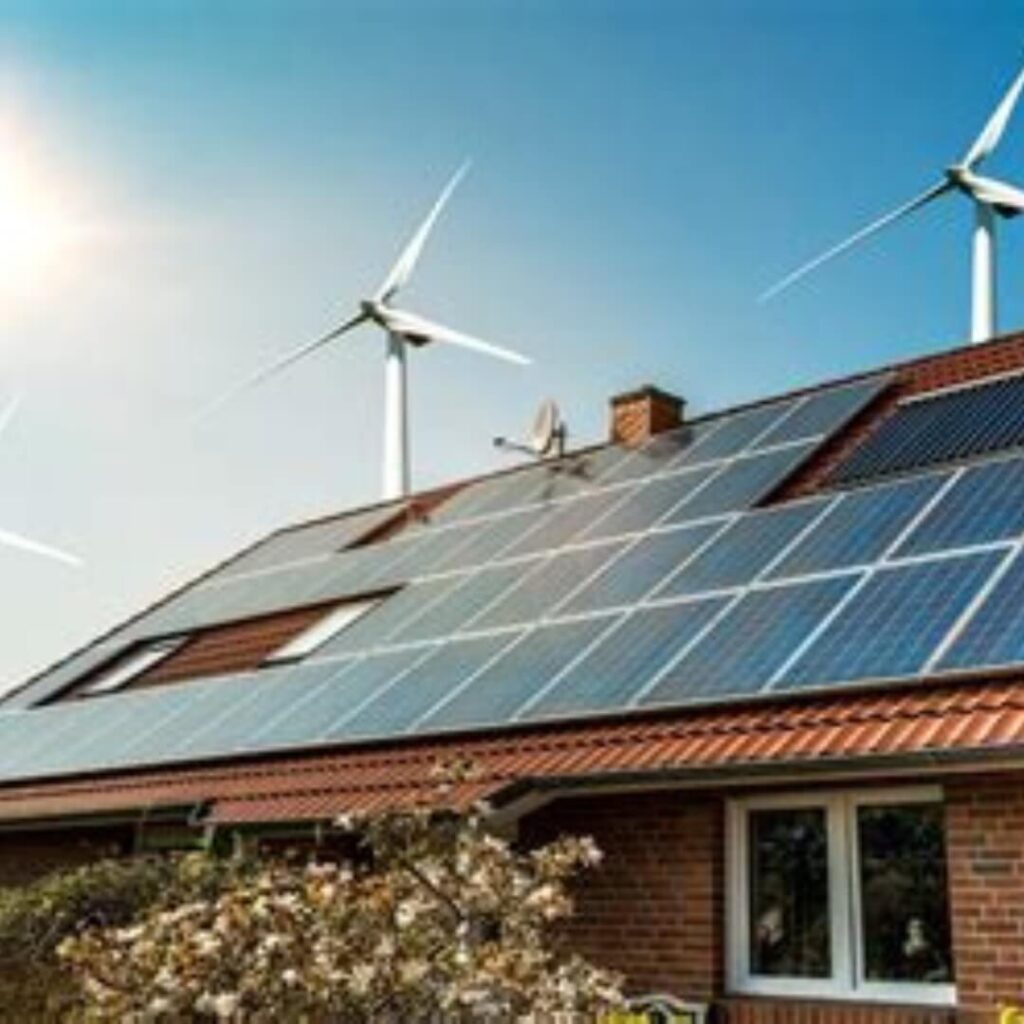
A green example of net zero and energy-sufficient home
Environmental campaigner Donnachadh McCarthy writes in The Independent, on how he managed to make his house a zero-carbon home. “When my original solar panels were installed, I used gas for heating and cooking, and the panels supplied electricity for my lighting, fridge and computer etc. I then sought to reduce gas consumption to zero; I only heat the room I am in to a maximum of 18C, and cook as efficiently as I can. I gradually installed solid wall insulation in my 1840’s London terraced home, stuffed the loft with insulation and put in triple-glazed windows. Then I discovered low wattage kettles and electric hot-plates that can operate on the lower wattage produced by the roof. This enabled me to get to zero gas consumption and so last year I got my gas connection removed. Thus, I do not pay a gas standing charge or for boiler maintenance…About 50 per cent of my carbon reduction comes from being efficient with energy usage. It saves money and costs nothing,” he explains.
May 20, 2022

India's new normal summer temp may touch 50 degrees C
As many parts of north India reeled under a heat wave with temperatures shooting up to an excess of 49 degrees Celsius on Sunday (May 15), experts believed that it was increasingly possible that mercury may touch 50°C, and that may be the new normal, reports The Federal. On Sunday, maximum temperatures in parts of Delhi rose above 49°C and other parts of northwest India also suffered from scorching temperatures. Banda in Uttar Pradesh recorded 49°C; Gurugram, Hisar and Narnaul in Haryana and Khajuraho and Nowgong in Madhya Pradesh recorded maximum temperatures of over 47°C. One of the root causes of this increase in heat waves is Climate Change, said climate scientists, who advised people to get used to the high temperatures as they may well become the norm. M Rajeevan, former secretary, ministry of earth sciences, said the maximum temperatures during heatwave periods over northwest India have already gone up from 45-46°C to 47-48°C. Due to climate change, we will witness three things with heatwaves: higher intensity; an increase in duration; and a larger impact area.
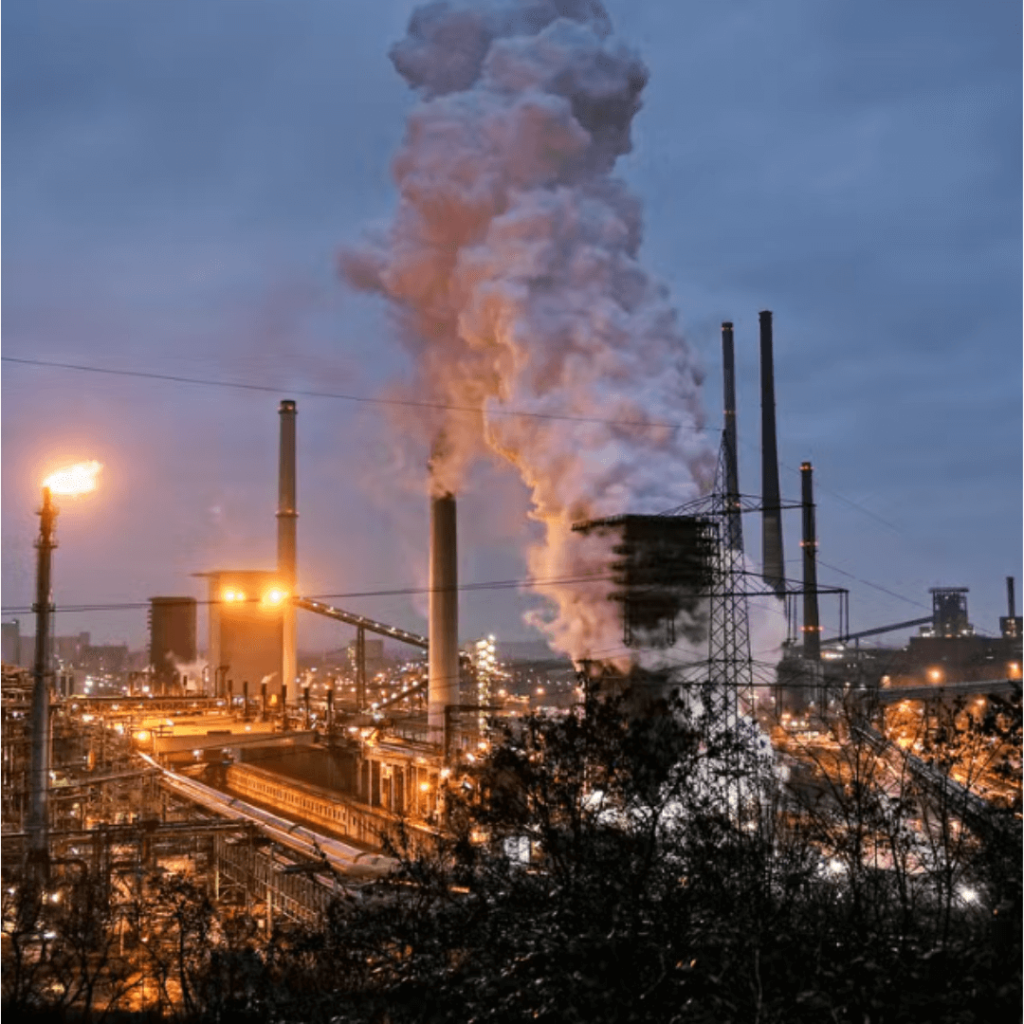
Four key climate change indicators highest last year: WMO
Four key climate change indicators – greenhouse gas concentrations, rise in sea level, ocean heat and ocean acidification – set new records in 2021, the World Meteorological Organisation (WMO) noted in its ‘State of Climate’ report released on March 18. The past seven years, from 2015 to 2021, were globally the warmest years on record, it stated, adding the average global temperature last year was about 1.1 degree Celsius above the pre-industrial level (1850-1900). The Times of India reports that the global mean sea level reached a new record high in 2021, rising an average of 4.5mm per year over the 2013-2021 period – a clear sign of how global warming is likely to be disastrous for coastal areas as the threshold level of 1.5 degree Celsius rise is not far away. Alarmed with the report, UN Secretary General Antonio Guterres has urged ending fossil fuel pollution, saying “fossil fuels are a dead end – environmentally and economically”. He highlighted that the war in Ukraine and its effect on energy prices is another wake-up call.

Nature has legal status on par with humans: Madras High Court
The Madras High Court ruled last month that “Mother Nature” has the same legal status as a human being, which includes “all corresponding rights, duties and liabilities of a living person”. The case is the latest in a series of so-called “rights of nature” laws and court rulings that aim to give ecosystems, animals and elements of the natural world legal rights similar to those of humans, corporations and trusts. “The past generations have handed over the “Mother Earth” to us in its pristine glory and we are morally bound to hand over the same to the next generation,” Justice S. Srimathy said in a 23-page judgement. Justice Srimathy invoked “parens patriae jurisdiction” or the power of the government to act as a guardian for those who cannot care for themselves. She entrusted the state and central governments the responsibility to take appropriate steps to “protect Mother Nature” in all possible ways. “If sustainable development finishes off all our biodiversity and resources, then it is not sustainable development, it is sustainable destruction,” Srimathy wrote.

Earth’s carbon dioxide records highest level ever
Monthly average carbon dioxide (CO2) levels have reached above 420 parts per million (ppm) for the first time on record, reports The Independent. The new data, from Hawaii’s Mauna Loa Observatory, were released by the National Oceanic and Atmospheric Administration (NOAA). Atmospheric CO2, driven higher in large part by burning fossil fuels around the world, is one of the major causes of the climate crisis. Emissions from transportation, industry, electricity generation and other sources like deforestation have pushed vast quantities of CO2 into the atmosphere throughout the year since the mid-19th century – causing atmospheric carbon to increase dramatically over time. NOAA notes that CO2 is currently increasing about 100 times faster than other periods in geological history that have seen more natural increases in carbon dioxide. The latest report from the Intergovernmental Panel on Climate Change notes that carbon dioxide from fossil fuel and industry makes up 64 per cent of the world’s greenhouse gas emissions and 11 per cent comes from those emitted by land use and forestry.
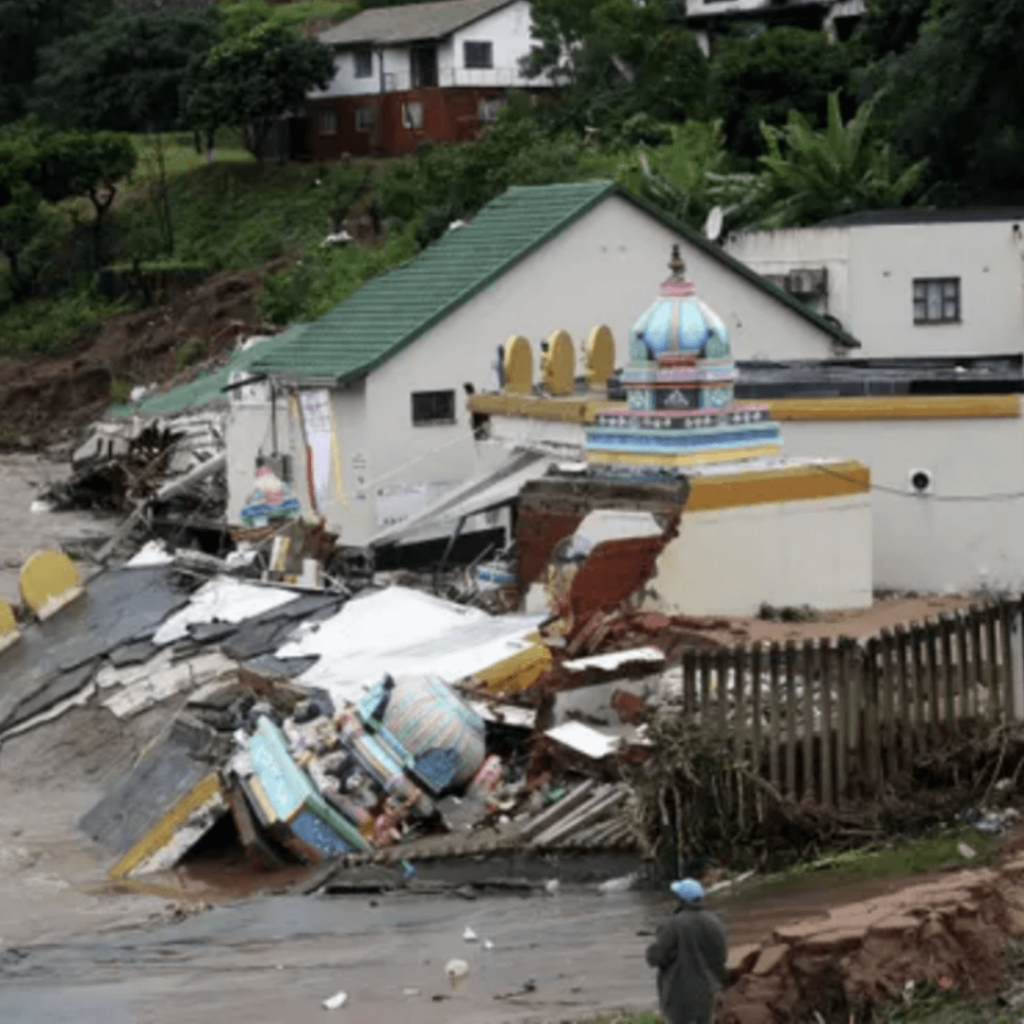
South Africa’s floods more intense due to climate crisis
Massive and deadly floods that struck South Africa in April were made twice as likely and more intense by global heating, according to scientists, reports The Guardian. The research demonstrates that the climate emergency is resulting in devastation. “If we do not reduce emissions and keep global temperatures below 1.5C, many extreme weather events will become increasingly destructive,” said Dr Izidine Pinto, at the University of Cape Town and part of the team that conducted the analysis. The analysis of the role of global heating in the South African floods used weather data and computer simulations to assess how likely the extreme rainfall was to happen in today’s heated climate. India is going through an intense heat wave which is projected to get worse because of global warming. Dr Friederike Otto, at Imperial College London, also part of the team, said, “There is no doubt that climate change is a huge game changer when it comes to extreme heat. Every heatwave in the world is now made stronger and more likely to happen because of human-caused climate change.”
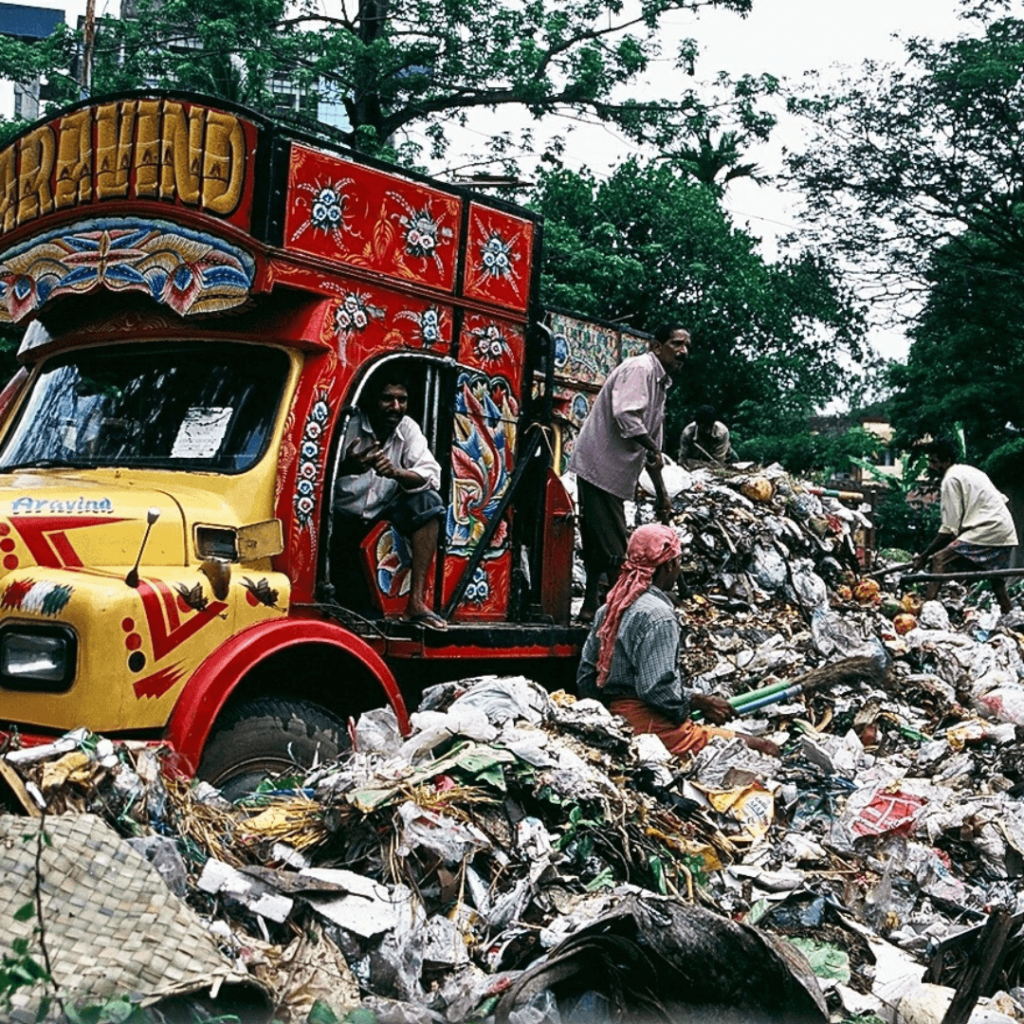
Recycling garbage may generate Rs 30K crore a year: Indian Govt
A report by the Ministry of Housing and Urban Affairs has recommended a complete ban on disposal of recyclables at landfills, says The Times of India. Titled ‘Circular Economy in Municipal Solid and Liquid Waste’, the report states, “Disposing of recyclables in landfills/ dump sites not only leads to loss of valued resources but also causes environment pollution.” It has estimated that proper treatment of municipal solid, wet and construction waste can generate nearly Rs 30,000 crore revenue per annum and create employment opportunities for more than one crore people by 2025. It has also recommended that the government reduce GST and other taxes on products made from recycled materials to five per cent to encourage recycling of waste. The report is important as intense urbanisation has led to a manifold increase in garbage generated in cities. Untreated waste, mostly plastic, reaches landfills and also pollutes water bodies. The report says that approximately 26,000 tonnes of plastic waste is generated in the country daily and out of this only 15,600 tonnes is recycled.
